

12 Places to Visit in Northern Greece
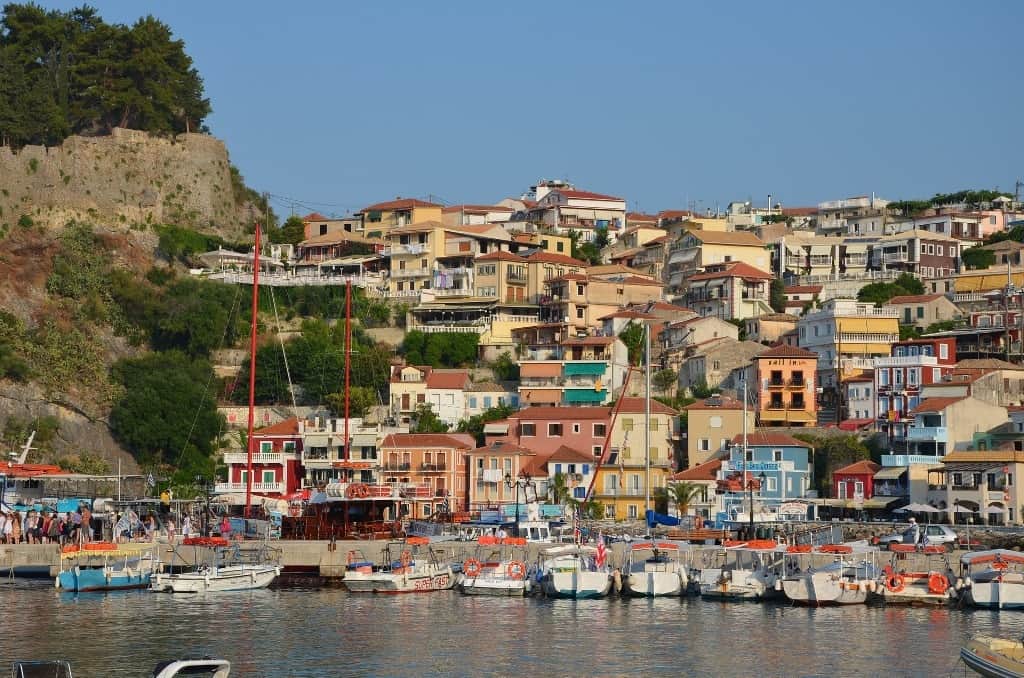
There’s no denying it: Greece is one incredible place.
Sun-kissed and exotic, beach-lined and steeped in culture; historical, proud, diverse and full of passion and fine food…it has a magnetism that’s hard to resist.
The cradle of Western Civilisation, Greece is home to some of the greatest attractions in Europe, and people flock to see them every year.
But while the majority of travelers head straight to its picture-perfect islands and white sand beaches (perhaps after the obligatory few days in Athens), the Northern part of the country is often overlooked.
Northern Greece is as diverse and spectacular as the rest of the country and simply should not to be missed! So, to convince anyone without this magical place already on their agenda to go, here are seven of the top things to do there!
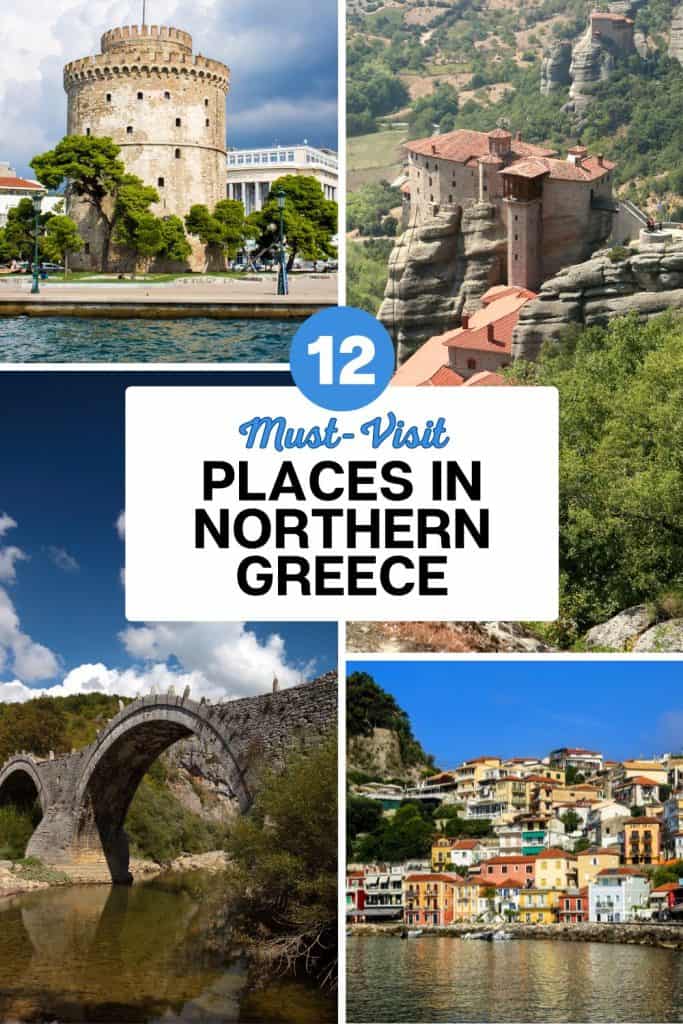
Table of Contents
Things to Do in Northern Greece
1.walk around the beautiful coastal town of parga.
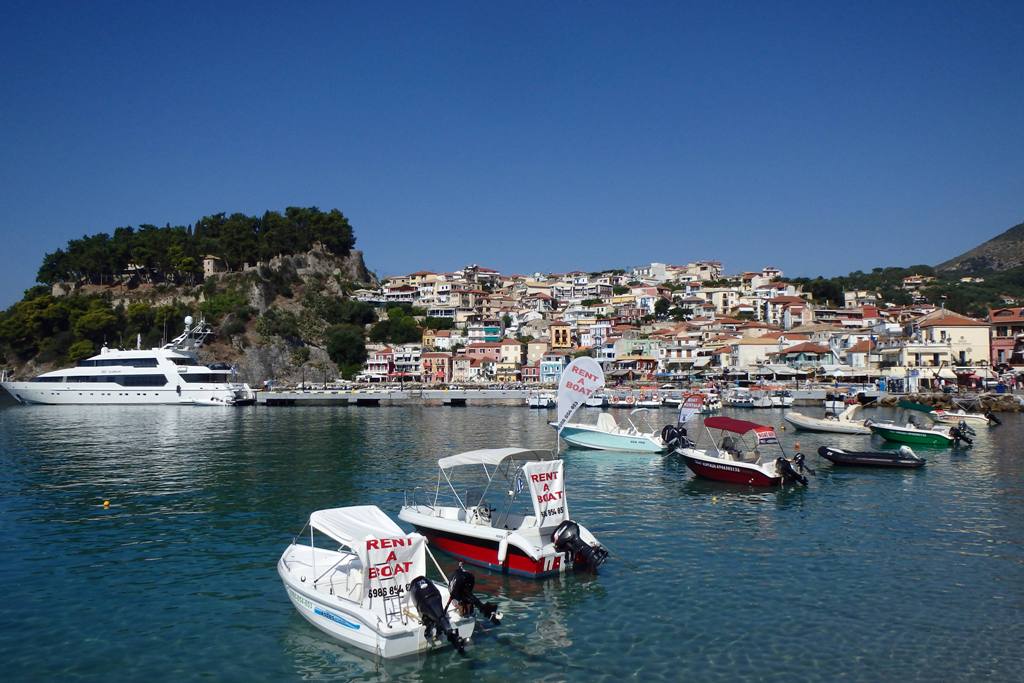
Situated on the North Western Coast of Greece is the charming, picturesque town of Parga.
Honestly, this place was made for postcards- it is absolutely beautiful and is truly picture perfect. Colorful houses rise up the hillside, overlooking the stunning white sand beaches and harbor front.
Walk down the cobbled streets of the old town; meander idly around the cafes, shops, and bars that cater for the mass of tourists that visit here each year.
Make sure you walk around the ruins of the ancient Parga Castle on the hillside too and look out from on high at the marvelous township below.
2. Visit the mighty Vikos Gorge
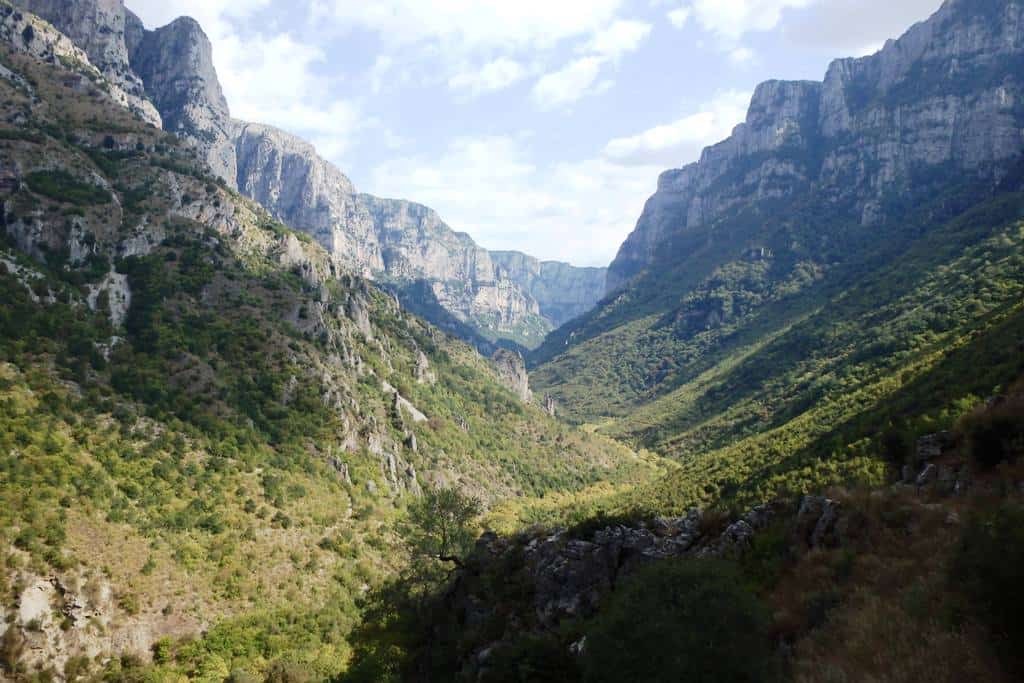
The incredible Vikos Gorge is in the Pindus Mountains of Northern Greece, set deep within the Vikos–Aoös National Park. It is 20km long and in places 490 meters deep and 400 meters wide.
The gorge is staggering to behold, breathtaking to experience and utterly mind-blowing to explore. If you’re heading to Greece, visit the Gorge!
The tiny village of Vikos is a great starting point for exploring this magical place. There are heaps of hiking opportunities all around, viewing points aplenty and lots of gorgeous little mountain top villages for accommodation.
3. Get out on Lake Pamvotida in historical Ioannina
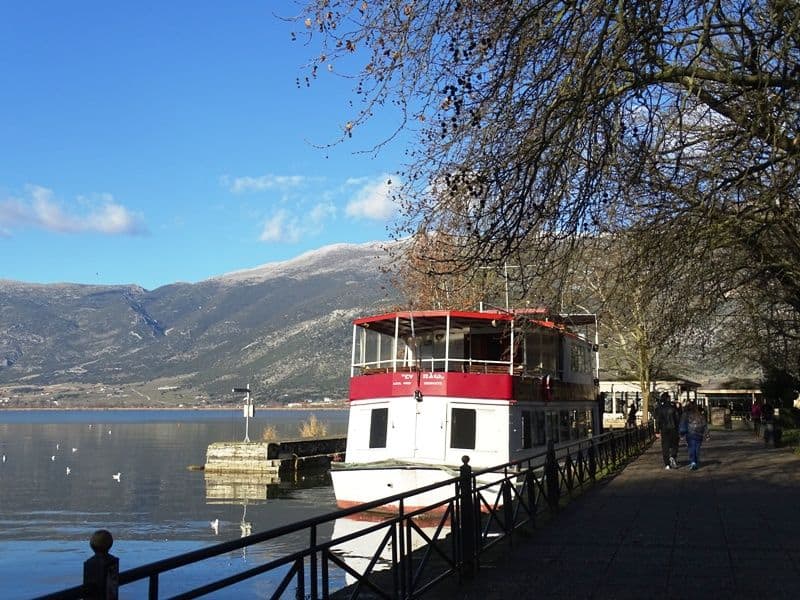
Next up is the buzzing city of Ioannina (Yannena), situated on the banks of the beautiful Lake Pamvotida. The atmosphere is vibrant and lively, and there’s a lot to do here, so consider spending a good few days sampling all that Ioannina has to offer.
Explore the castle town (the oldest Byzantine fortress in Greece), which is inhabited to this day, to learn all about the remarkable history of the city.
And make the most of the Lake too! It is possible to simply walk around it, but I recommend taking a boat out to the island at its center as well. This cool little island is home to multiple ancient temples, which you can go inside to see remarkable religious paintings that adorn the walls.
4. Explore the magical monasteries of Meteora
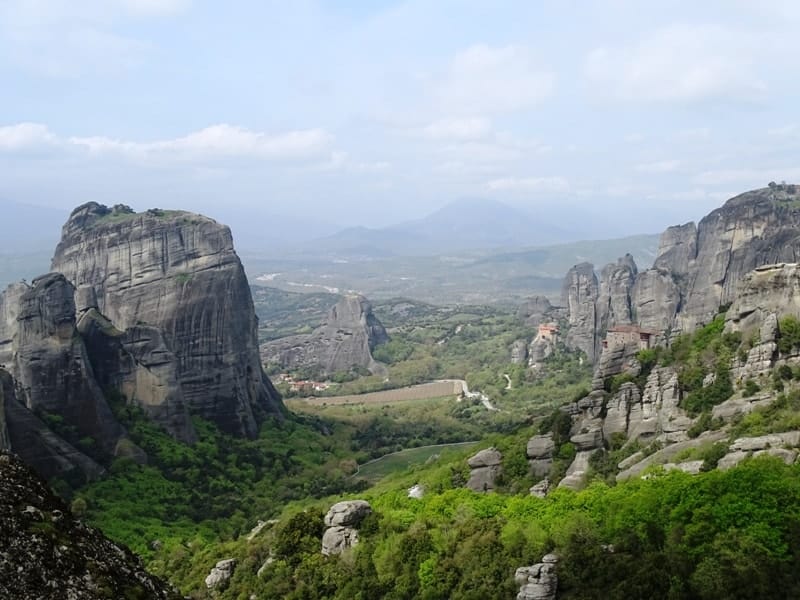
Meteora is a unique, special place where ancient monasteries sit precipitously atop vast rock pillars. High above the town of Kalambaka, you can explore centuries-old buildings of immense spiritual significance, hundreds of meters up in the air.
If you fancy a hike, it is possible to go by foot up the mountainside to each monastery. Otherwise, there are numerous tour companies that can take you where you wish to go, or you can hop on a public bus from Kalambaka too.
Each monastery requires a €3 per person donation upon entry, and all six monasteries are majestic. The atmosphere is awe-inspiring, peaceful, and sublime; the perfect place to pause, reflect and be present.
A visit to this remarkable part of the World should be a must for anyone visiting Greece.
5. Visit the Mythical Gods at Mount Olympus
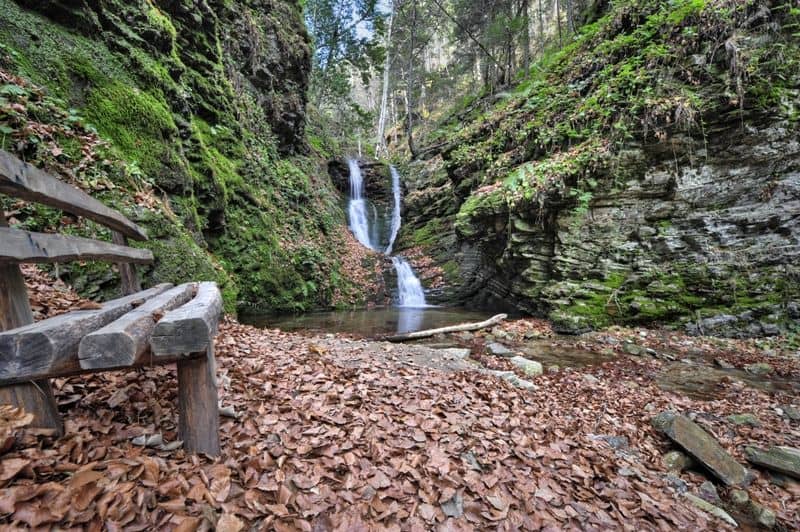
At 2,918 meters, the highest mountain in Greece has long been a mythical place, where the Gods of Ancient Greece were said to reside.
These days though, people visit for a legendary experience of their own: partaking in mountaineering and other outdoor pursuits in a location renowned for its fantastic and diverse fauna and flora, surrounded by breathtaking natural beauty.
Litochoro, known as the City of the Gods, is about 100km away from Thessaloniki and the gateway that most people use to explore the mountain.
You might be interested in: Hidden gems in Greece you should visit
6. Soak up the City Life of Thessaloniki
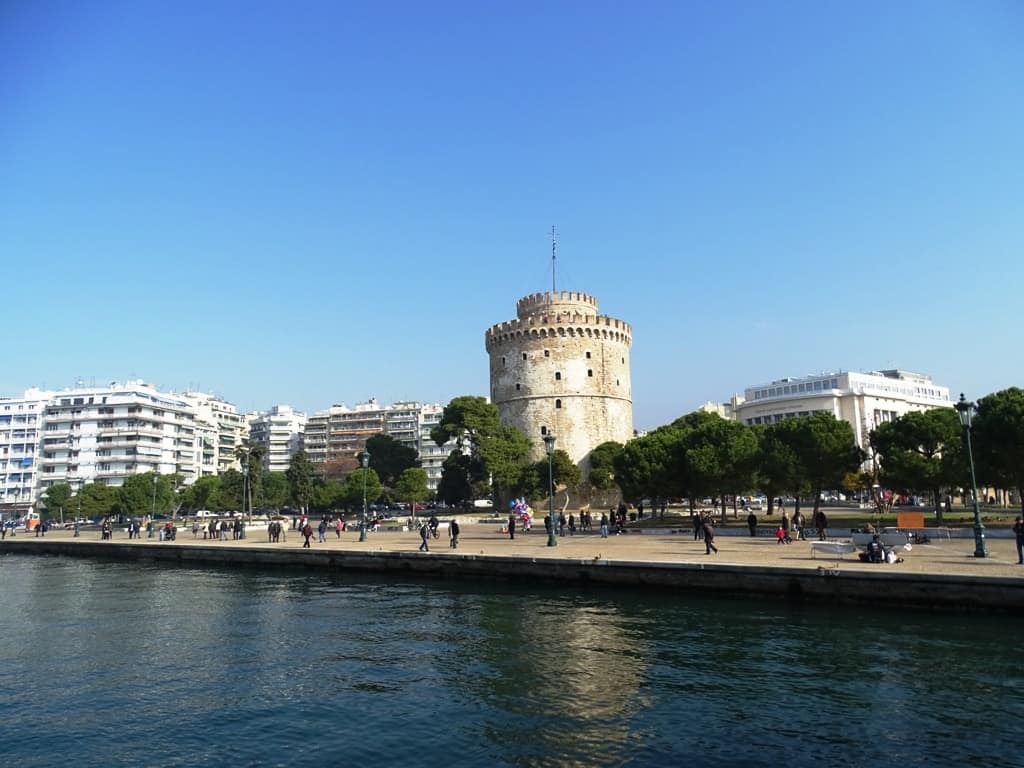
This hugely popular ancient city is the second largest in Greece and is thousands of years old. Its history is incredibly rich, with heavy influences found throughout from its Roman, Byzantine and then Ottoman past.
Due to its geographical location, Thessaloniki has been a site of immense importance in Greece for millennia. Hailed as a cosmopolitan hub of art, culture, architecture, and gastronomic experiences, it remains an important city in the country and draws tourists in droves each year.
There’s a wealth of things to do in Thessaloniki, so take some time to really experience the city.
Walk along the seafront, visit the Byzantine castles, explore the museums and seek out the dozens of amazing architectural hotspots around, such as the White Tower.
7. Visit the Paradise that is the Halkidiki Peninsula
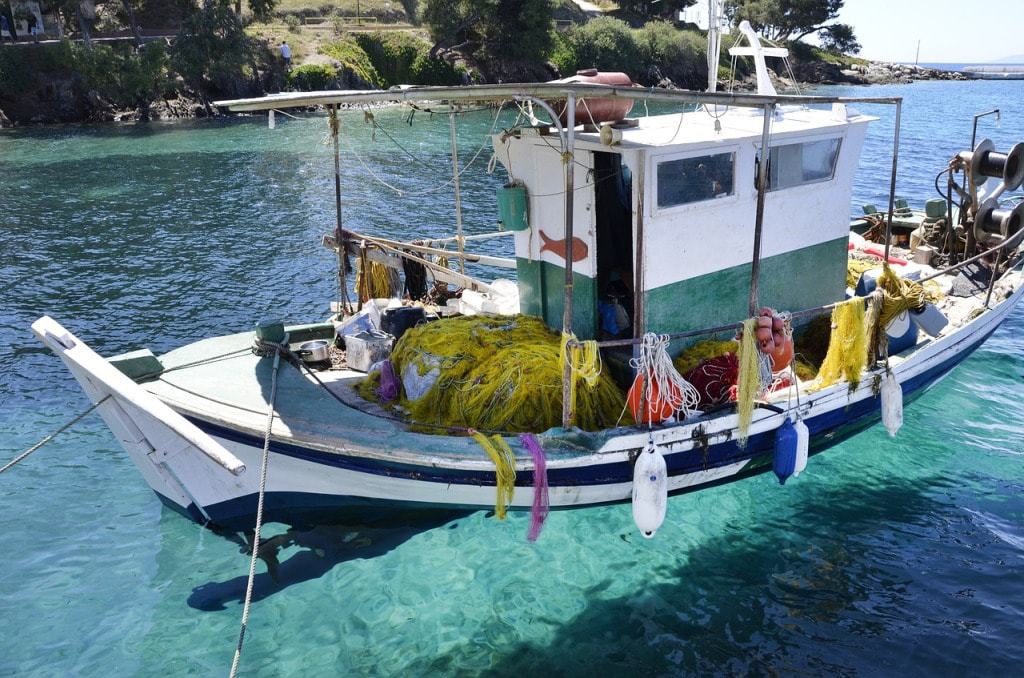
Last but by no means least, is the paradise that is Halkidiki Peninsula. This stunning place is recognizable by its ‘three fingers,’ which extend from the mainland out into the Aegean Sea.
The peninsular is characterized by the lush forest that opens up onto pristine sandy beaches and clear blue waters. It is a haven for travelers and tourists. Halkidiki is a popular destination for locals too.
Though all are renowned for their wonderful beaches, each ‘finger’ has its own vibe, with Kassandra known as the most built up of the three; head there for resorts and thriving nightlife. Sithonia, by contrast, is said to be far quieter and less crowded. Finally, Athos has been untouched by modern development and is more popular among locals.
Athos is also famous for its monastic community on Mount Athos, known for its strict rules (based upon their religious beliefs) around living and visiting there.
Whichever finger you find yourself on, you’ll be sure to enjoy your time on the Halkidiki Peninsula.
8 . Explore Pella the birthplace of Alexander the Great
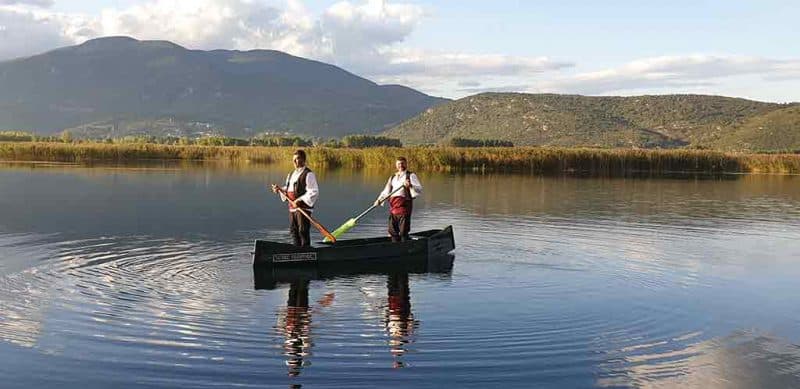
in the 4 th century BC, Ancient Pella was a major city, built on fertile land, that was the capital of the kingdom of Macedonia. The town lay at the mouth of the Axios River with direct access to the sea, but today lies 25 kilometres inland because the river became silted. Its past grandeur can be traced in the town’s archaeological museum which is known for its beautiful pebble mosaics.
It was in the city’s sizeable palace that Alexander the Great was born and it is where Euripides lived and worked, writing his plays Archelaus and Bacchae. Excavation work continues today to uncover more of the city’s mighty Royal Palace which covered 56,000km² and is where the young Alexander grew up.
9. Village hopping at Zagorohoria
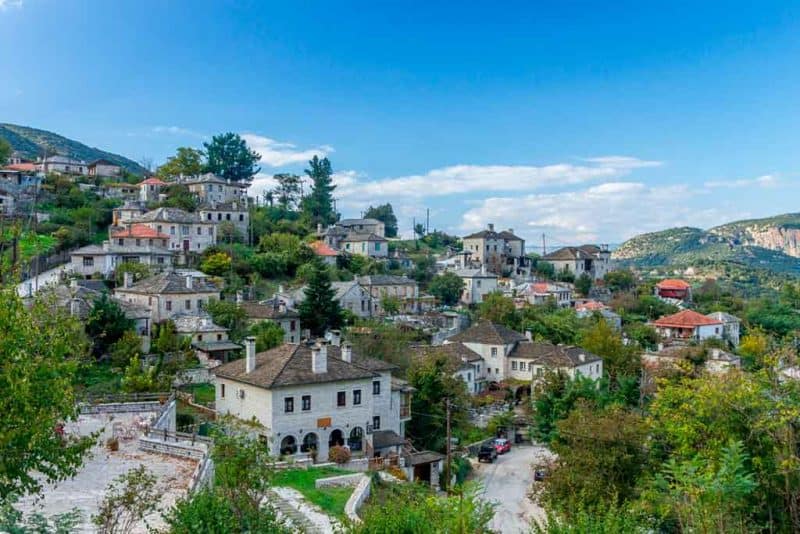
Zagahoria in north-west Greece is perfect for hiking and immersing yourself in nature – and also for village-hopping! There are 46 stone villages scattered across the slopes of the Pindus Mountains and in most of them, time seems to have stopped in the 19 th century. Amongst the fascinating villages to visit are Megalo (large) Papigo and Mikro (small) Papigo that are twin villages with beautiful architecture, lakes and excellent walking routes. Kipi is another village well worth exploring as it is one of the oldest in the area and sits astride two rivers, making it perfect for rafting, canyoning and mountaineering in magnificent countryside.
10. Explore Prespes Lakes
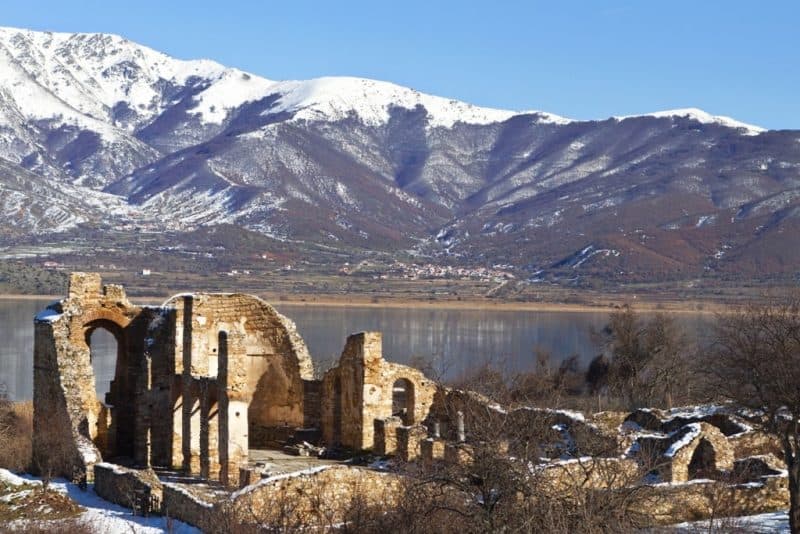
The Prespes Lakes are two fascinating lakes to visit. Megali Prespa (large) sits mainly in Albania and Mikri Prepa (small) lies partially in Macedonia and partially in Albania. The area is rich in flora and fauna. On Mikri Prespa there is the island of Agios Achillos with its a one street village, goats and dwarf cattle that roam freely. On Megali Prespa, there is the pretty fishing village of Psarades, where you can take a boat trip to explore the rock frescoes and several abandoned hermitages.
11. Check out the Picturesque City of Kavala
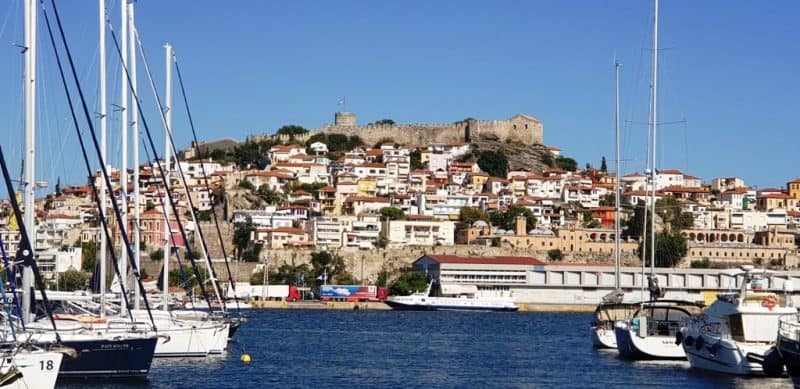
Built like an amphitheatre on the slopes of Mt Symvolo overlooking the bay, Kavala has the nickname ‘ the Monaco of Greece’ and is one of the most attractive cities in Greece. Kavala has beautiful architecture, numerous places of interest and the UNESCO archaeological treasure of Philippi close by. In the summer months, it is the perfect holiday destination with great beaches and numerous water sports to enjoy.
12. Explore the lakeside town of Kastoria
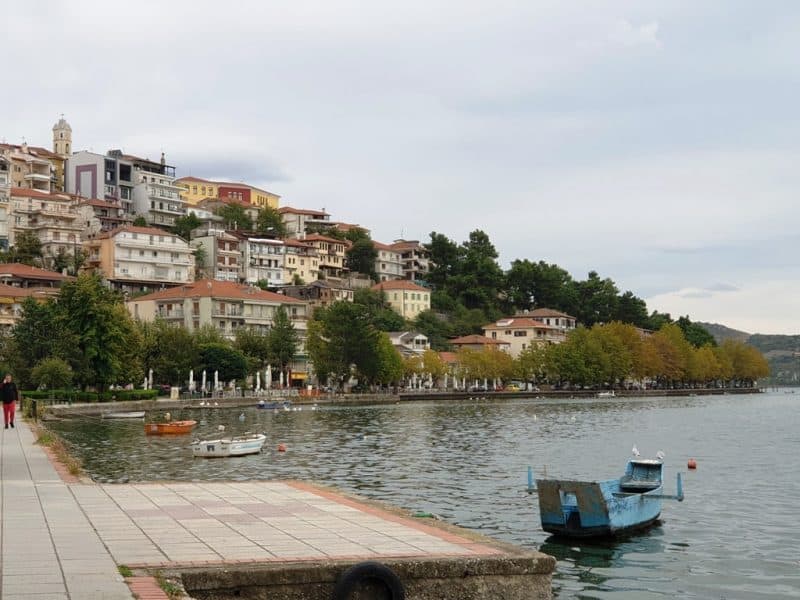
Situated on a promontory on the western shore of Lake Orestiada and surrounded by mountains, Kastoria is regarded as one of the prettiest cities in Greece. The city is a collection of old neighbourhoods, stately mansion and more than 70 Byzantine churches. Kastoria became wealthy because of the fur trade in beavers.
Although the beavers had long since disappeared, the city’s fur and textile trade has continued along with its fame for beautiful embroidery. The lake is at its best in the Spring and Autumn and overlooked by many tavernas. For those who are feeling energetic, it is fun to follow the nine-kilometre walk around the promontory.
And that brings to an end my list of the top things to do in Northern Greece. The North of the country is a truly incredible place to visit, and this is by no means an exhaustive list of all there is to do there.
Head to Greece, venture up North, and you’re bound to have an amazing time!
Sharing is caring!
Leave a Comment Cancel reply
Save my name, email, and website in this browser for the next time I comment.
Northern Greece: Travel Guide and 7-day Itinerary
Of the places I traveled last year, Northern Greece was the one that surprised me the most. Northern Greece is the upper half of Greece, including places like Thessaloniki, the Halkidiki Peninsula, and Vergina. It’s surprisingly still rather untouristed, and much of the region can be discovered in a way that feels very authentic. Honestly, that feeling is not common in much of the world, which has become saturated with excessive tourism.
Luckily, many of the places mentioned in this guide are more popular with local visitors than those from abroad. And even though the Greek Islands seem to get all the press, and Athens, Greece is the place most people have heard of – you can come to Northern Greece to experience some of the most famous places in the whole country: Mt. Olympus and Meteora to name just two.
Read on for a full travel guide and Northern Greece itinerary, covering what to see, how to prepare for your trip, tips for doing a road trip in Greece, and recommendations on where to eat and where to stay.
Before you go to Northern Greece
Here are a couple of facts to get you started planning your trip, such as exactly which dates I traveled (so you get an understanding of the weather), how long I was there, which guidebook I used and where exactly I stayed. Later in the guide you’ll also see a map of all locations and tips for each spot. Enjoy!
- Duration 7 days
- Dates visited June 15-22
- Weather in Northern Greece We experienced a strong mix of intense sunshine and VERY heavy rain showers. Northern Greece is full of forests, and it’s clear how they get their water! Be prepared for warm weather, but do not forget to pack an umbrella and a light-weight rain jacket.
- Recommended accommodation I got really lucky with the places we stayed during our trip to Northern Greece. Here are my favorite places that I stayed in Northern Greece, plus an outline of the pros and cons of each location to help you decide if it’s a good fit for your trip.
Recommended guidebook This Greece travel guidebook (published in 2020!) was super helpful planning our entire trip through Northern Greece. Plus since it covers the whole country, I’m looking forward to using it again for my next trip to Greece!
View from our hotel at Hotel Meteora Kastraki in Meteora, Greece
Quick tips for road tripping in Northern Greece
Before you embark on a road trip around Northern Greece, here are a couple of trips to help ensure that everything goes smoothly.
- Get a shuttle from the airport to your rental car. At the Thessaloniki airport, you can get a shuttle to the location where you can pick up your rental car. Check with your rental car company if they offer this. Just beyond the drop off/pickup area in front of the airport there is an area where all the shuttles will be waiting. Click here to check availability of rental cars in Thessaloniki on DiscoverCars, which is where we always book our rental cars for road trips.
- Don’t pack your schedule too tightly. Greece moves at its own pace, so you shouldn’t plan that everything is going to be as punctual or efficient as you might be used to. Leave some slack in your schedule to account for this.
- Check your rental car’s gas tank. Thessaloniki was the first place I’ve ever received a rental car with an empty tank . I have no idea if this is common practice or not, but something to check on so you don’t start driving and then realize you’re out of gas!
- Beware of sea urchins. As when swimming in other Mediterranean waters, if you go swimming in Greece, be mindful of sea urchins. I know people who have stepped on them in this region and it is super painful. You can buy water shoes with a hard sole that will protect against their spikes. If you buy in advance it’s much cheaper than buying on-site in Greece.
- Keep an eye out for animals in the roads. There are loads of stray dogs in Greece, keep your eyes peeled so you don’t actually hit any as they cross the road. It’s sad but something that happens. Otherwise, be prepared to encounter real-life shepherds herding their sheep across the road, or cows going for a walk. Drive diligently and you should have no issue.
- Don’t assume every town will have an ATM. Though we found many places accepted cards, many towns didn’t have an ATM. For example, in Zagori there’s a grand total of one ATM among all the villages. Be prepared with extra cash just in case.
Without further ado, let’s get on to the good stuff!
Northern Greece itinerary and map
Even though this itinerary was designed for 7 days, you can easily stretch it out for 1-2 weeks. If I were to extend the trip, I would spend more time in Halkidiki (many people spend 3-5 days on this peninsula), perhaps visit Corfu (an island on the west coast of Northern Greece), or even venture up into North Macedonia ( formerly known as Macedonia ).
Here’s what you can do in Northern Greece in 7 days. If you’re looking for information on a specific area, feel free to jump down and check it out. Otherwise, scroll on for details about all these locations.
Halkidiki Peninsula
Mt. olympus, thessaloniki.
Once you’ve picked up your rental car, it’s time to drive! Most locations on Halkidiki Peninsula can be reached within 1-2 hours of driving from Thessaloniki. Known as the place where locals in Greece actually go to have a vacation, Halkidiki has the same blindingly-blue waters as the Greek islands but with a fraction of the tourists. It’s here that we start our foray into Northern Greece!
The three fingers of the Halkidiki Peninsula: Kassandra, Sithonia, Athos
Halkidiki is composed of three so-called “fingers”: Kassandra, Sithonia, and Athos. The first two fingers are open to tourists and locals alike, whereas the last finger, Athos, is the location of males-only monasteries (yes, you read me right – not only are women not allowed in, they don’t even keep female animals at the monasteries). If you want to visit Athos as a man, you need to apply at least six months in advance. With that in mind, let’s focus on the other two then: Kassandra and Sithonia.
The big question when deciding here is more like: do you want to party or do you want to chill?
Sithonia is a great option for families and people looking for a calmer holiday : meaning beaches, hiking, camping, pine forests You can do some really gorgeous drives around the coast. We stayed in Sithonia in Vourvourou , and found it to be really chill and having some nice places to eat nearby. On a previous trip, I stayed in Neos Marmaras which has a really cute village with some really nice seafood restaurants. It’s hard to go too wrong here.
Kassandra is known for being more focused on nightlife (though you can still find nightlife on Sithonia as well). The most popular place to stay on this finger of the peninsula is Afytos , but beware it can be extremely busy in the Summer months. As for beaches, we only had time to visit Kalithea Beach , which was nice but rather busy. Thankfully, June is just before the ultra-high season of July and August so if you book early you may luck out.
Best Halkidiki Beaches
Here are a couple of beaches worth checking out in Halkidiki. Note, there are dozens of beaches! But here are a couple of particularly nice ones 😄
- Kallithea Beach
- Possidi Beach
- Sarti Beach
- Ouranoupolis Beach
There are also a few official lists of top-rated beaches, such as this one about best beaches in Sithonia .
Things to do in Halkidiki
I could write an entire blog post dedicated to Halkidiki, but here are a few of the most popular things you can do on Halkidiki. Activities and options range from lounging on one of the peninsula’s famous beaches to more active things like hiking and swimming.
- Go for a cruise around the peninsula. Going for a cruise is a gorgeous way to see more of the area, and especially in July and August the water is a comfortable temperature for swimming. When you’re out in the boat, you can really appreciate how clear and turquoise the waters are. As for cruises, you have two main options: join a small group cruise (max 12 participants) or if you’re traveling with friends or family, go on a private cruise (max 8 participants). The small group costs about 70€ per person, whereas the private tour is about 400€.
- See Athos monasteries by boat. If you want to see Athos, the men-only prong of the peninsula, those of us cursed with lady bits can still see it from a boat 😉 Don’t forget we’re going to see more monasteries later, but the fact remains that Athos comprises 12 distinct monasteries and is still impressive to see. No matter your gender, you can book a boat tour of Athos peninsula for just 17€.
- Visit Polygyros, the capital city of Halkidiki. Already itching for archaeology? You can visit Polygyros for its well-known archaelogical museum. Besides that, its known for having a number of great restrauants and tavernas.
- Relax on one of the Blue Flag-rated beaches. A Blue Flag beach is one that meets strict requirements for safety, quality, environmentalism, and services provided. Halkidiki has a number of beaches that meet this standard, such as Kallithea Beach or Sarti Beach.
More resources on Halkidiki
Even though I’ve been to Halkidiki twice now, it’s a large area and I surely haven’t been to every beach or restaurant Here are a few resources that are helpful when figuring out the logistics of your time in the area:
- Sithonia Greece – A personal website dedicated to information about the Sithonia prong of the Halkidiki peninsula. Lots of useful info on what to eat, see, and do.
After you’ve soaked up enough sun, let’s move on to the next leg of our itinerary: Vergina, the home of the tomb of the father of Alexander the Great.
Believe it or not, the tomb of King Philip II, the father of Alexander the Great, was discovered as recently as the late 1970s 😱 Who knew they were still discovering such significant archaelogical sites? Known famously (and formerly) as Aigai, this location used to be the capital of the Macedonian Empire. What makes this tomb so special is that it has been discovered so recently, that it hasn’t been looted or disturbed in so long.
Today, the archaelogical museum at Vergina is considered one of the most important museums in all of Greece .
TIP – If you’re going to be based in Thessaloniki, but want to experience Vergina, you can take a day trip to Pella and Vergina as well. Though for this itinerary I would of course encourage you to rent a car so you can explore more, sometimes that’s not an option!
Archaeological Site of Aigai
When you arrive at this site, the main thing you’ll notice is a large mound. From the outside, this site mostly looks like some flowers and a big hill of grass. What’s more important is what’s underneath. Entry to the site costs 12€, but if you’ve got kids under 18 they can enter for free.
Check the official Aigai website for up-to-date information on opening hours, holidays, and days where anyone can get free admission!
Royal Tomb of Philip II
You enter the burial site by going underground. Here you’ll find tons of artifacts from the surrounding area and from the tomb, such as a famous golden wreath. The most important thing you’ll see (though not pictured) is called “Tomb II”, which is where Philip II is believed to be buried. This place is a so-called “burial cluster”, which today is known to consist of four tombs. It is not known for sure who is buried in the other tombs, at least one of them is thought to contain the son of Alexander the Great.
You don’t need to spend a ton of time here, it’s a pit stop on our way to the next place where we’ll spend a little over two days: the Zagori municipality, located in the Pindos mountain region of Greece.
Zagori is like one of those hidden treasures you hope stays exactly as it is for as long as possible. Zagori is the name of a municipality in Northern Greece, part of the larger Pindos mountain region. A large part of the area is covered by the Vikos–Aoös National Park . Besides the natural beauty, the area is known for its stone bridges, which people have used for centuries to hike by foot from village to village. Many of the stone bridges are still in use today.
Voidomatis River, considered one of the cleanest and purest rivers in Europe, located at the heart of the Vikos–Aoös National Park
Zagori bridges
The Epirus region in Greece is home to more than 200 stone bridges. I know because the hotel I stayed in actually had a book documenting them! A woman and her partner traveled through Greece and documented hundrends of bridges, their stories, and how to find them. Some of them have been sinking into the mud for centuries, while others are immaculately preserved. If you’re enticed by the idea of traversing some ancient stone bridges, I have tons more information on the blog about the Zagori bridges .
Though not the most famous bridge, the one I loved the most was Petsioni bridge , pictured above.
Vikos Gorge
Apart from the gorgeous man-made structures, you have the home of the deepest canyon in the world . At least, it claims to be in the World Book of Records! But how exactly is it defined? In this case, Vikos Gorge is the deepest canyon in respect the proportion of its width to its depth. You will find a number of signs around the park noting what a feat it has achieved 😉 There are a number of different scenic lookout points you can visit to get a unique view of the canyon. The Beloi Lookout Point is an easy 30 minute hike, whereas the Oxia Lookout Point is easily reachable by car. It’s worth spending a day exploring different parts of the canyon and getting photos from different angles.
If you’re looking for deeper information, check out my in-depth Zagori Greece travel guide for a ton of details on accessing all these places.
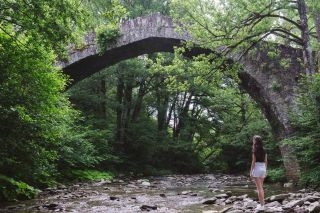
This off-beat travel guide to the Zagori (Zagorohoria) in Northern Greece will show you where to find hiking trails, lookout points, stone bridges, the best views of Vikos Gorge and others things to do in Zagori
Some guides advise you to base yourself in Ioannina for exploring Zagori, though I would definitely encourage you to stay inside one of the villages for a more authentic experience. That said, Ioannina is interesting to visit in its own right: situated on a lake and a hub of college student activity, it can be nice to reconnect with civilization after a few days off the grid in Zagori.
Things to do in Ioannina
- See the Fethiye Mosque. The city of Ioannina was fought over for years by the Greeks and the Ottomans. Its name means “The Mosque of Conquest”. From the elevated location you can get a great view over the town.
- Visit the silversmithing museum. On the same elevated area inside the inner part of the city, you can visit what many consider to be the highlight of the city.
- Take a boat ride on Lake Pamvotis to an island that has no name. You can take a ferry to this island for just a few euros, and it runs every 30 minutes.
- See the central clock tower. A bit underwhelming, but considered the central meeting point of Ioannina. I wouldn’t go out of your way to see it, but it’s a nice structure to pass by.
- Eat local fish caught in the lake. A number of different restaurants on the waterfront will offer you fresh fish caught in the lake. A small break from all the Greek salads you might be eating on the trip 😉
Dodoni is an archaeological site just a 30 minute drive away from Ioannina. It’s an easy pit stop on your way out of the area. For just 4 € you can see one of the best-preserved ancient theatres in Greece. If you also want to visit the Archaeological Museum of Ioannina or the Byzantine Museum of Ioannina, you can group that together with Dodoni for an 8 € ticket.
As I already said, the most significant thing about Dodoni is the well-preserved ancient Greek theater, plus the fact that it’s a bit off the beaten path in terms of tourist sights. In Ancient times, Dodoni was second only to Delphi as far as revered and respected oracles go. At Dodoni, you can find the sanctuary to Zeus, which was marked by an ancient Oak tree. Today you can sit under an Oak tree that still exists in a very similar location.
Apart from the theatre and the famous oak tree, a number of artifacts have been found at Dodoni. However the vast majority were brought to Athens, so what you’ll find here are mostly remains of buildings. Interestingly, Dodoni lasted as a site of importance into the Roman times and was even repurposed by the Romans for gladiatorial fights.
You only need about an hour or so in Dodoni before it’s time to drive to Meteora. You’ll arrive in the evening, have time to check in and freshen up, and then be ready for the morning.
Meteora Greece
Meteora is easily the most famous sight you can find in Northern Greece. Known as the home of the “floating monasteries”, you’ll find gigantic stone formations with monasteries perched on top. They date back to either the 11th or early 12th century. The main attractions in Meteora are driving around, looking at scenic lookout points, and popping into the various monasteries. If you’re into hiking, it’s also possible to hike around Meteora and walk between the different monasteries.
I’ll do a quick summary of things to do in Meteora below, but for more details, be sure to check out my more complete guide to Meteora Greece .
TIP – Each monastery costs 3€ to visit, and women need to wear a skirt when visiting. But you can borrow one at any monastery, so wear what you want in between 😉
Which monasteries to visit in Meteora
If you’re limited on time, the first three monasteries listed here are among the most popular and the most impressive: Great Meteoron, Holy Trinity, and Varlaam. That said, it’s doable to visit all of them so long as you have at least two days – the reason being that a different monastery is closed each day of the week . Therefore, to see them all, you’ll need to visit the area on two separate days.
- Great Meteoron (Closed Tuesdays) – Largest monastery. Lots to explore, including three distinct museums, an art gallery, and much more.
- Holy Trinity (Closed Thursdays) – Loads of stairs to get to the top, but you’ll be rewarded with a great lookout point. You can climb on the rocks for some neat photos.
- Varlaam (Closed Fridays) – Second largest monastery, considered one of the nicest. A great place to start your journey, as it has a museum about the history of Meteora. Excellent toilets.
- Roussanou (Closed Wednesdays) – Actually a nunnery. Very pretty to visit and has some nice gardens. Less visited than some of the other monasteries.
- St. Stephen’s (Closed Mondays) – Also a nunnery. Very busy, especially as you don’t need to climb any stairs like you to do with the others.
- St. Nicholas Anapfsas (Closed Fridays) – The smallest monastery and perhaps the least spectacular, but worth visiting if you’re a completionist!
Monastery of the Holy Trinity, over 130 stairs bring you to the top of this stone pillar.
Best lookout points in Meteora
Besides visiting the monasteries, one of the best things to do in Meteora is checking out some of the beautiful lookout points and taking some photos. You can climb on the rocks and get some really epic photos! Two great spots to check out are:
- Psaropetra lookout
- Lookout near Varlaam
There are also a number of guided tours that will personally show you the best photo locations around Meteora, some of which are not officially marked on any map.
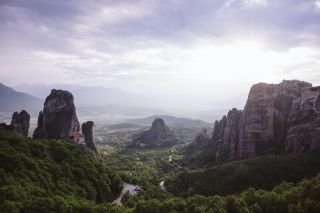
Visiting Meteora in Greece will instantly explain why monks built monasteries there for centuries. Here is a guide on the best time to visit, which monasteries to see, and things to do in Meteora.
Where to stay: Meteora Greece hotels
One of the main things you want to decide for yourself is whether you want to stay in Kalambaka or Kastraki. Kalambaka is a bigger town, and the official location of Meteora, with more bars and restaurants. Just a five minute drive away, you’ll find Kastraki. We decided to stay in Kastraki as we found a place on a hill, AND the parking situation was way better.
View from our hotel at Hotel Meteora Kastraki .
We didn’t have a ton of time on Mt. Olympus, but there is a lot to do on the mountain. The easy first thing to do is to pop in the Visitor’s Center of Mt. Olympus, which is free to enter and you’ll basically have the place to yourself. They can offer you a ton of advice on things to do depending on how much time you have.
Things to do at Mt. Olympus
- Stop at the Mt. Olympus Tourist Center. As I already said, this is a great place to start as there is a ton of information about different hikes and places to visit on Mt. Olympus.
- Visit Litohoro. This is the main town that is near the base of Mt. Olympus. You can choose to stay in a hotel in this town or eat lunch here.
- Take a dip in the Orlias Waterfalls. Probably one of the most interesting things to do on Mt. Olympus, these waterfalls and pools are a great place to take a dip if you feel like you’re melting in the hot Greek sunshine.
- Visit the Old Monastery of St. Dionysius. The original monastery dates back to the 1500s and was largely destroyed by the Germans in the early 40’s. You can either reach it easily from the road or do it as a hike.
- Stop at the Apostolidis Refuge. If you’re in need of food or a place to sleep on the mountain, this is your spot. There are only 2 refuges on the mountain.
Besides these basic things to do, you can also reach these places on guided tours from Thessaloniki (our next stop). If you don’t have a car, or you just want to have more context on the places you’re going.
I wasn’t expecting to enjoy Thessaloniki as much as I did. What makes the city special is that there is a HUGE streach of promenade, shaped like a C, which you can walk along. It’s lined end-to-end with bars and restaurants and you get an awesome sea breeze no matter where you are. On top of that, you’ll find killer sunsets.
There are tons of ruins right in the middle of the city. You can go for a coffee overlooking this ancient site!
Things to do in Thessaloniki
There are so many things to do in Thessaloniki, but here are a couple of highlights you want to check out if you have some time in the city.
- Visit the White Tower of Thessaloniki. Perhaps the most famous landmark in Thessaloniki, you can go inside from 8:30am-3:30pm every day. Once a prison, today it houses a museum.
- Hang out at Aristotelous Square. This square is one of the most famous in the entire country, primarily designed in the 50’s. Come by to observe the local youth 😉
- Check out the Arch of Galerius and the Rotunda. Comissioned waaay back in the 4th century, this ancient monument smack in the middle of the city will remind you how historic Thessaloniki really is.
- Visit the Archaeological Museum of Thessaloniki. If you love ancient Greek artifacts, come visit this museum. It has everything from red figure pottery, ancient armor, and original sculptures.
- Go inside the Hagia Sophia of Thessaloniki. Modeled after the original in present-day Istanbul, this church was finally restored in the last 1900’s after a fire.
Arch of Galerius
White Tower of Thessaloniki
Would you go to Northern Greece?
Share your thoughts in the comments and let me know what sights you think are the most compelling in Northern Greece! There are tons of additional places to visit, give me your insights if you have a recommendation for me 😉
Find this post useful? Pin it for later!

About the author
Hi there! I'm Monica, an American expat living in Germany for over six years and using every opportunity to explore the world from my homebase in Berlin. My goal is to capture my memories in photos and posts that show how easy it is to start from scratch and travel the world by working abroad.
Follow along on Instagram , Twitter , Bloglovin , & Facebook .
You might also like...

Zagori, Greece: An Adventurous Travel Guide for 2024
- Search Please fill out this field.
- Manage Your Subscription
- Give a Gift Subscription
- Newsletters
- Sweepstakes
- Destinations
This Gorgeous Region in Greece Is Where the Greeks Go on Vacation — With Magical Blue Water, Friendly Villages, and Local Food
Take the ultimate road trip unveiling Greece’s best kept secrets.
:max_bytes(150000):strip_icc():format(webp)/Sucheta-Rawal-author-page-pic-b8e1cb1d69b2407e818a5e794513b3f4.jpeg)
Thessaloniki
Sithonia peninsula, mount athos.
Sucheta Rawal/Travel + Leisure
If you feel outpriced for a vacation in the Greek Islands, you're not entirely out of luck — there’s a lesser-known alternative to experiencing the same magical blue waters, friendly village vibe, and fresh Greek food.
Greek-Macedonia, the country's northern region, offers a broader variety of experiences for history buffs, beach lovers, and road-trippers, and still has an ancient history that compares to Athens, dramatic coastlines similar to the Greek Isles, some of the most extensive spans of green olive groves in the world, and the country’s most spiritual sites — all within a few miles from each other.
Northern Greece is also easier and more affordable to navigate independently than elsewhere in the country. Rent a car or hop on a public bus; stay at a beachfront bungalow, a village guesthouse, or camp at a beach or inside a forested national park.
With milder climates, fewer crowds, and great prices (including many free attractions), it is no surprise that this is where the Greeks themselves prefer to go for their summer breaks and long weekends.
Top 5 Can’t Miss
- Grab a drink, listen to live music, enjoy the nightlife, and people-watch in the vibrant Ladadika district of Thessaloniki.
- Visit King Phillip II’s gleaming royal tomb, complete with delicate artifacts, discovered in the lost city of Aigai after 2,000 years.
- Take a day cruise to the Athos Peninsula and admire the remote architecture of 1,000-year-old monasteries. The autonomous region is considered the spiritual center of Orthodox Greeks and is not easily accessible to travelers.
- Book a dinner at Hierion Restaurant at Athena Pallas Resort. You will feel like a Byzantine emperor as you taste a medieval menu with Mt. Athos paired wines inside a space replicating a portico of a Byzantine monastery.
- Take a scenic drive from the mountain town of Litochoro through winding roads overlooking the sea and mountains into Mt. Olympus National Park.
Sucheta Rawal/Travel + Leisure
Start your trip in Thessaloniki — Greece’s second largest city and trade junction, with a major airport and seaport along the Thermaic Gulf of the Aegean Sea. Named a UNESCO City of Gastronomy, Thessaloniki is where some of Greece’s best chefs experiment with traditional flavors and modern cooking techniques. Locals, known as Hellenes, will tell you this is where the Greek coffee culture originated. A common sight is friends and families lingering for hours at al fresco coffee shops, discussing everything from world affairs to office gossip over cigarettes and bitter coffee.
Visitors often overlook the modern European economic hub, but it offers many historical sites, quality restaurants, bustling nightlife, and plenty of shopping at a fraction of the prices compared to other well-known parts of Greece. The city’s extensive makeup of working professionals and university students provides a nonstop street party atmosphere. It is common to find otherwise quiet neighborhood streets and abandoned buildings transformed into temporary live music venues (without the high-priced cover charges) thumping beats until after midnight. Stay away from the crowds at the artfully-decorated Elisabeth Boutique Hotel , located in a historic building.
It's easy to explore the 2,300-year-old city on foot, uncovering layers of Roman, Byzantine, and Ottoman history, especially around Ano Poli, the upper town. Among 15 Byzantine UNESCO monuments in the area, you can visit the catacombs at the Baptistery of St. John the Baptist near the sixth-century Hagia Sophia, the seventh-century Church of Hagios Demetrios, Aristotelous Square, the Archaeological Museum, Byzantine Museum, and White Tower Museum. In the evening, walk along Aristotelous Square and the bustling waterfront, where it feels as though the entire city is out running, walking, watching street performances, and enjoying happy hours around the lively areas.
For dinner, there are hundreds of traditional Greek, international, and even vegan restaurants along the narrow alleys of Old Town and Ladadika districts. Try Frutti de Mare for seafood, Roots for vegan Mediterranean, and Oval Bistronomy for modern Greek with a view of the tower.
Drive about 45 miles west from Thessaloniki to Vergina to see one of the best-preserved moments in archeological history. From the outside, the grassy mound may not look like much, but once you go underground, your eyes will adjust to the bright gold objects stored in a dark and cool museum.
Here, you can see a glorious, shiny tomb of King Philip II, father of Alexander the Great, who died in 336 BC. The Museum of the Royal Tombs of Aigai, constructed by the Kingdom of Macedon at Aigai, was only identified in 1977, and the museum was completed in 1997. Inside, you can see silver and bronze vessels, carved ivory, gold armor, delicate jewelry, weapons, shields, and the king’s bones in the Golden Larnax. Entry tickets are half-price between November and March.
To continue on the trail of Alexander the Great, you can also visit nearby Polycentric Museum of Aigai in the restored part of Macedon’s Royal Palace , which, in its day, was three times bigger than the Parthenon .
Head further south to the region of Pieria, a quaint weekend mountain escape outside the big city of Thessaloniki. Many Greeks, Bulgarians, Serbians, and Albanians drive to the area for active adventures, fresh air, and quiet retreats. Litochoro is a charming 14th-century traditional village at the foothills of the mythical Mount Olympus, offering stunning views of the sea and the mountains.
Stroll around the cobblestone streets, and you will find adorable Macedonian-style houses decorated with rose, olive, and fig trees, rustic stone chapels, and a dozen tourist shops selling local wine, honey, herbs, and traditional sweets. A romantic dinner for two, including a bottle of Greek wine at one of the nicer restaurants — Hairi Green and Μεζέ Μεζέ — costs less than $30. Join local residents at one of the many taverna and ouzo bars to watch a game and spark a conversation.
Take the scenic 30-minute route from Litochoro village to Olympus National Park, the first national park in Greece established in 1938. Windy roads will bring you through 11,000 acres of alpine vegetation, including oak, black pine, beech, and white pine, to a monastery in Mount Olympus's heart. Visit the open-air Monastery of St. Dionysios, destroyed during World War II, and take a short hike along the icy Enippeas River to the holy caves.
Mount Olympus is a sacred place for Greeks and a UNESCO Biosphere Reserve for its diversity of flora and fauna. You can book a day-long guided hiking, mountain climbing, or canyoning tour, or for a more leisurely pace, take the trail from the village to see the spanning gorge and Enipeas waterfalls.
In the afternoon, drive a few minutes south of Litochoro to the beach town of Plaka, where you can take a relaxing swim in the glistening blue waters, have drinks and snacks at an old train tunnel transformed into Galleria Café, or take in panoramic views from the Castle of Platamon.
Head east of Thessaloniki toward three legs of the Halkidi peninsula. Each has a different vibe, focusing on hiking, beaches, and religion. The middle — and the largest peninsula in northern Greece — is Sithonia, which resembles the Greek Isles without the whitewash. Instead, you will find red terracotta rooftops, quiet hamlets, and expansive hills filled with Cyprus and olive trees. Greek vacationers prefer to sprawl around laidback villages dotted with 100 or so Blue Flag-recognized Aegean beaches boasting milder climates and pristine beaches. In Vourvourou, teenagers and families rent small self-piloted boats and move the day-long party to the crystal clear water.
As you circumvent the 26-mile-long panoramic drive along the coastline, stop at ancient settlements, olive-tasting rooms, and beachside cafes. Make time for the old village of Nikiti, Neos Marmaras, the ancient ruins of Toroni castle, and the village and beach of Agios Nikolaos. Climb to the top of Mount Itamos for a coffee and panoramic peninsula views. Sithonia is dotted with affordable Greek restaurants where you can drink tsipouro and eat fresh-caught seafood with your feet still in the sand.
Catering to all types of travelers, the Sithonia Peninsula offers accommodations for as low as $50 per night, ranging from campgrounds and apartments to beachfront villas and luxury resorts. To experience part of the Byzantine era, stay at the family-owned and operated Athena Pallas Resort , where the food and architecture are inspired by Mt. Athos monasteries. Taste different aspects of Greek culinary history at one of the onsite restaurants and get access to the famous Elia beach.
Mount Athos is the third peninsula of Halkidiki, also known as the Vatican of Greece. There are 12 fully autonomous 1,000-year-old Byzantine monasteries currently operational on the peninsula. While the holy mountain is visible from many spots in Greek Macedonia, it is not easily accessible. Male pilgrims must apply for limited permits to enter the sacred Mount Athos region, while women are not allowed to enter.
From the water, anyone can enjoy the pristine natural beauty and grandeur of the monasteries' architecture. Drive to the village of Ouranoupolis and embark on a three-hour cruise with Athos Sea Cruises to sail along the peninsula. From your boat, you can see many of the Monasteries of Mount Athos, with their large campus and remote locations nestled amidst the lush mountains.
Related Articles
Winter is here! Check out the winter wonderlands at these 5 amazing winter destinations in Montana
- Travel Destinations
20 Things To Know Before You Go: Northern Greece
Published: October 12, 2023
Modified: January 3, 2024
by Halli Gunther
- Plan Your Trip
- Travel Guide
- Travel Tips
Northern Greece is a region brimming with rich cultural heritage, stunning landscapes, and vibrant cities. From the majestic Mount Olympus to the ancient ruins of Thessaloniki, there is no shortage of captivating experiences in this part of the country. Whether you’re planning a trip to delve into history, explore the great outdoors, or indulge in delicious cuisine, there are a few things you should know before you go. In this guide, we’ll uncover 20 essential tips that will help you make the most of your Northern Greece adventure. From the best time to visit to important cultural customs, we’ve got you covered. So, grab your pen, take notes, and get ready for an unforgettable journey through the wonders of Northern Greece!
Mount Olympus is a prominent landmark in Northern Greece.
Standing tall at 2,917 meters, Mount Olympus is not only Greece’s highest mountain but also known as the legendary home of the Greek gods.
The region is rich in cultural heritage.
Northern Greece boasts a treasure trove of ancient sites, including the UNESCO World Heritage Sites of Delphi, Philippi, and Vergina. History buffs will be in awe of the impressive archaeological remains.
The food in Northern Greece is a culinary delight.
Indulge in authentic Greek cuisine with a unique twist. From delectable moussaka and fresh seafood to flavorful mezes and tangy feta cheese, the region offers a gastronomic adventure for food lovers.
The charming city of Thessaloniki is a must-visit.
Known as the “Co-capital” of Greece , Thessaloniki offers a vibrant atmosphere with its lively waterfront, bustling markets, and rich history. Explore its archaeological sites, Byzantine churches, and vibrant nightlife.
Experience the magic of Meteora.
Marvel at the breathtaking monasteries perched atop towering rock formations in Meteora. This UNESCO World Heritage Site offers a unique spiritual and natural experience that will leave you in awe.
The region is home to beautiful national parks.
From the picturesque landscapes of Vikos Gorge in Zagori to the pristine forests of Dadia-Lefkimi-Soufli National Park, nature enthusiasts will be spoiled for choice with the abundance of natural wonders in Northern Greece.
Visit the lively coastal town of Halkidiki.
With its azure waters, sandy beaches, and charming seaside villages, Halkidiki is a popular destination for sun-seekers and water sports enthusiasts. Enjoy the vibrant beach culture and indulge in delicious seafood.
The region offers a variety of outdoor activities.
From hiking and mountain biking to kayaking and sailing, Northern Greece is a paradise for adventure seekers. Explore the diverse landscapes and embark on thrilling outdoor adventures.
Discover the traditional villages of Zagori.
Step back in time as you explore the stone-built villages of Zagori, nestled in the Pindus Mountains. Admire the unique architecture, hike picturesque trails, and soak in the tranquil ambiance.
Enjoy the famous Greek hospitality.
Experience the warm and friendly nature of the locals in Northern Greece. The Greek hospitality is renowned worldwide, and you’ll be welcomed with open arms wherever you go.
Don’t miss trying the local specialty dishes.
Indulge in traditional treats such as “Bougatsa” (a sweet or savory pastry), “Loukoumades” (honey balls), and “Halva” (a semolina-based sweet). Northern Greece is known for its delectable regional delicacies.
Explore the enchanting landscapes of Prespa Lakes.
These interconnected lakes, shared by Greece, Albania , and North Macedonia, are a haven for birdwatchers and nature lovers. Discover the rich biodiversity and serene beauty of the Prespa Lakes region.
Visit the ancient city of Vergina.
Explore the archaeological site of Vergina, where the tomb of Philip II, father of Alexander the Great, was discovered. Uncover the ancient history and marvel at the impressive artifacts.
Don’t forget to indulge in Greek coffee.
Savor the traditional Greek coffee, a strong and aromatic drink prepared in a specific way. Enjoy it with a view, sitting in a charming café overlooking the bustling streets of Northern Greece.
Experience the vibrant local festivals.
Immerse yourself in the lively atmosphere of traditional festivals, where music, dance, and delicious food come together. From the famous “Zagorohoria Music Village” to the “Sardine Festival” in Thessaloniki, there’s always something to celebrate in Northern Greece.
Discover the wine regions of Northern Greece.
Wine enthusiasts will appreciate the diverse wine regions in Northern Greece, such as Naoussa, Amyndeon, and Drama. Sample delicious local wines and learn about the region’s winemaking traditions.
Learn about the rich Byzantine history.
Northern Greece is dotted with fascinating Byzantine-era churches and monasteries. Marvel at the intricate frescoes and architectural wonders that showcase the region’s Byzantine heritage.
Explore the vibrant street art scene in Thessaloniki.
Thessaloniki is known for its thriving street art culture. Take a stroll through the city’s streets and discover colorful murals and graffiti that add a contemporary flair to the urban landscape.
Don’t miss the opportunity to soak in thermal springs.
Relax and rejuvenate in the natural hot springs that can be found in various locations in Northern Greece. Experience the therapeutic benefits of these mineral-rich waters.
Discover the traditional Greek music.
Experience the vibrant Greek music scene, from traditional bouzouki tunes to modern interpretations. Enjoy live performances in tavernas and music venues, immersing yourself in the local culture.
1. What are some must-visit attractions in Northern Greece?
Some must-visit attractions in Northern Greece include the UNESCO World Heritage Site of Meteora, Mount Olympus, the city of Thessaloniki, the ancient city of Vergina, and the stunning beaches of Halkidiki.
2. Is it safe to travel to Northern Greece?
Yes, Northern Greece is generally a safe destination for travelers. However, it is always advisable to exercise common precautions, such as staying aware of your surroundings and taking care of your belongings.
3. What is the best time to visit Northern Greece?
The best time to visit Northern Greece is during the spring (April to June) and autumn (September to October) when the weather is mild, and tourist crowds are smaller. However, each season has its charm, so it ultimately depends on your preferences.
4. What should I try from the local cuisine in Northern Greece?
When in Northern Greece, make sure to try the delicious local dishes such as moussaka, souvlaki, tzatziki, spanakopita, and baklava. Also, don’t miss the opportunity to indulge in the local wines and traditional Greek coffee.
5. Are there any outdoor activities to enjoy in Northern Greece?
Absolutely! Northern Greece is a haven for outdoor enthusiasts. You can go hiking, mountain biking, or even skiing in the winter months. The region also offers opportunities for water activities like sailing, kayaking, and swimming in the crystal-clear waters.
6. How can I get around in Northern Greece?
You can get around Northern Greece by using public transportation, such as buses and trains. Renting a car is also a popular option, especially if you want to explore the more remote areas and have more flexibility in your itinerary.
7. What are some off-the-beaten-path destinations in Northern Greece?
If you’re looking to venture off the beaten path, consider visiting places like Zagorochoria, Mount Athos, the Prespa Lakes, and the Pelion Peninsula. These destinations offer a unique and authentic experience away from the crowds.
8. Can I travel to Northern Greece on a budget?
Absolutely! Traveling to Northern Greece can be done on various budgets, depending on your preferences and choices. There are budget-friendly accommodations, affordable restaurants, and plenty of free or low-cost attractions to explore.
9. Are there any cultural customs to be aware of in Northern Greece?
Yes, it’s always good to be respectful of the local customs and traditions. In Northern Greece, shaking hands is a common form of greeting, and it is customary to remove your shoes when entering someone’s home. Also, remember to dress modestly when visiting religious sites.
10. How can I make the most of my trip to Northern Greece?
To make the most of your trip to Northern Greece, take the time to immerse yourself in the local culture, try the delicious food, engage with the locals, and explore both the popular attractions and lesser-known gems. Be open to new experiences and embrace the unique charm of this stunning region.

- Privacy Overview
- Strictly Necessary Cookies
This website uses cookies so that we can provide you with the best user experience possible. Cookie information is stored in your browser and performs functions such as recognising you when you return to our website and helping our team to understand which sections of the website you find most interesting and useful.
Strictly Necessary Cookie should be enabled at all times so that we can save your preferences for cookie settings.
If you disable this cookie, we will not be able to save your preferences. This means that every time you visit this website you will need to enable or disable cookies again.
Northern Greece

- 3 Other destinations
- 4 Understand
- 5.1 By plane
- 5.2 By train
- 5.5 By boat
- 6.1 By regional coach
- 6.2 By train
<a href=\"https://tools.wmflabs.org/wikivoyage/w/poi2gpx.php?print=gpx&lang=en&name=Northern_Greece\" title=\"Download GPX file for this article\" data-parsoid=\"{}\"><img alt=\"Download GPX file for this article\" resource=\"./File:GPX_Document_rev3-20x20.png\" src=\"//upload.wikimedia.org/wikipedia/commons/f/f7/GPX_Document_rev3-20x20.png\" decoding=\"async\" data-file-width=\"20\" data-file-height=\"20\" data-file-type=\"bitmap\" height=\"20\" width=\"20\" class=\"mw-file-element\" data-parsoid='{\"a\":{\"resource\":\"./File:GPX_Document_rev3-20x20.png\",\"height\":\"20\",\"width\":\"20\"},\"sa\":{\"resource\":\"File:GPX Document rev3-20x20.png\"}}'/></a></span>"}'/>

Northern Greece is the large, varied upper half of Greece which, apart from a few scattered famous attractions, is still relatively untouristed, though much of this area offers rewarding destinations that deserve to be better known. Distances are long, and though the major cities are easy enough to get to by bus or train, and almost everywhere is served by at least one bus a day, visitors who want to get off the beaten track or cover a lot of ground in a limited time will probably find it most practical to have a car.

- Epirus - A mountainous region known for its rugged landscapes and traditional villages, home to the famous Zagori villages renowned for their stone houses, the Vikos Gorge, one of the deepest canyons in the world, and the ancient city of Dodona.
- Macedonia - Home to Greece's second-largest city, Thessaloniki, which is a bustling metropolis with a rich history. Other notable places in Macedonia include Mount Olympus, the ancient city of Vergina, and the Halkidiki peninsula with its beautiful beaches.
- Thrace - Thrace shares its borders with Bulgaria and Turkey. The region is known for its rich cultural heritage, including a significant Muslim minority. Thrace features beautiful landscapes, such as the Evros Delta, and important historical sites like the ancient city of Anastasioupolis.
The main cities in central and northern Greece are:
- 38.958288 20.753324 1 Preveza
- 39.669 20.855 2 Ioannina : Ioannina is built around Lake Pamvotida and is known for its medieval fortress, traditional market, and the island of Nissi, where you can visit monasteries
- 40.52 22.204 3 Veria — Famous for its Byzantine-era churches and its well-preserved Jewish quarter, home to the archaeological site of Aigai, the ancient capital of Macedonia
- 40.6347 22.9437 4 Thessaloniki - The second-largest city in Greece, a vibrant and cosmopolitan city with a mix of ancient sites, Byzantine churches, excellent museums, a vibrant food scene, and a bustling waterfront
- 41.089 23.551 5 Serres - A charming city with a lively atmosphere, beautiful old town, a medieval fortress and several interesting museums; also a gateway to Lake Kerkini and its rich birdlife
- 40.935364 24.408688 6 Kavala - A picturesque coastal city known for its harbor, Ottoman-era architecture, charming old town, beaches and nightlife
- 41.1348 24.8874 7 Xanthi - Famous for its carnival
- 41.1177 25.4042 8 Komotini - interesting Christian-Muslim appearance of the city center
- 40.848034 25.875964 9 Alexandroupoli - modern port city with a beautiful promenade
Other destinations
- 39.883 20.7462 1 Zagori —impressive landscape with high mountains, dense barely inhabited forests and impressive gorges and the wild beauty of the Zagoria mountain villages
- 40.0861 22.3586 2 Olympos National Park – The highest mountain of Greece, major trekking destination
- 40.35 23.58 3 Chalkidiki — No.1 tourist destination in Northern Grecce
- 40.925 24.135 4 Pangaion Hills — mountainous area with picturesque mountain villages, a multitude of old famous monasteries and impressive vegetation
- 41.36 24.611 5 Rhodope Mountains National Park — Wild mountainous nature in between Greece and Bulgaria
- 40.964 24.752 6 Nestos National reserve area — Unique landscape and wild life
- Thasos -Island: the most beautiful island in Northern Greece
- Samothrace -Island: wild mountainous with few tourism and stunning nature
The North of Greece is a mountainous area and the climate is much colder and more rainy than southern Greece. Best time to visit is June to End of September
There are a few airports in central and northern Greece. The biggest one is in Thessaloniki.
- Alexandroupolis International Airport "Democritus"
- Kavala International Airport "Megas Alexandros"
- Thessaloniki International Airport "Macedonia"
- Volos Central Greece Airport (Nea Anchialos National Airport)
- Ioannina National Airport "Epirus"
- Kastoria National Airport "Aristotelis"
- Kozani National Airport "Filippos"
- Aktion National Airport (Lefkada Airport "Aktion")
Thessaloniki is Greece's hub for international rail service. Trains connect Thessaloníki to Sofia (3 daily), Bucharest (1 daily), Istanbul (2 daily) and Belgrade via Skopje (2 daily). There are special fares as Balkan Flexipass and other offers e.g. the City-Star Ticket form Czech Republic to Greece. From Athens the train connects most of the cities in the eastern part of Greece. The state train company is Trainose (Τραινοσέ) .
Northern Greece can be entered by car either from any of its land neighbors countries, or from Athens. From western Europe, the most popular route to Greece was through Yugoslavia. Following the troubles in the former Yugoslavia during the 1990s, most motorists from western Europe came overland by Italy, and then took a trans-Adriatic ferry from there. Although the countries of the former Yugoslavia have since stabilized, and Hungary-Romania-Bulgaria form another, albeit a much longer, alternative, the overland route through Italy now remains the most popular option.
There is some, albeit limited, international bus service to neighboring Albania, Bulgaria, and Turkey, as well as Georgia. From Athens there are buses to every town in Central and Northern Greece.
The main port to get to Northern Greece from Italy is Igoumenitsa . Several ferries depart daily from the Italian port cities of Venice , Ancona , Bari and Brindisi .
By regional coach
Interurban coaches ("KTEL" buses) are by far the most convenient way to travel around Greece, as well as for intra-regional travelling.
Trains ( OSE ) connects most of the towns on the east part of Greece. The main train line connects Volos , Larissa , Katerini , Thessaloniki , Kilkis , Serres , Xanthi , Komotini and Alexandroupoli . There is also a train connection between Larissa and Kalampaka ( Meteora ) and a train line connecting Thessaloniki Veria , Naoussa and Edessa . Travelling with ordinary trains can be cheaper, although a little bit slower, whereas choosing a fancy faster Intercity train will cost the same amount of money, or even more than a KTEL bus.
- Has custom banner
- Has mapframe
- Has map markers
- All destination articles
- Outline regions
- Outline articles
- Region articles
- Has Geo parameter
- Articles Geo different to Wikidata
- Pages using the Kartographer extension
Navigation menu

- Beach Holiday
- Tips & Articles
- Ouranoupoli
- Central Halkidiki
- Thessaloniki
Explore Northern Greece
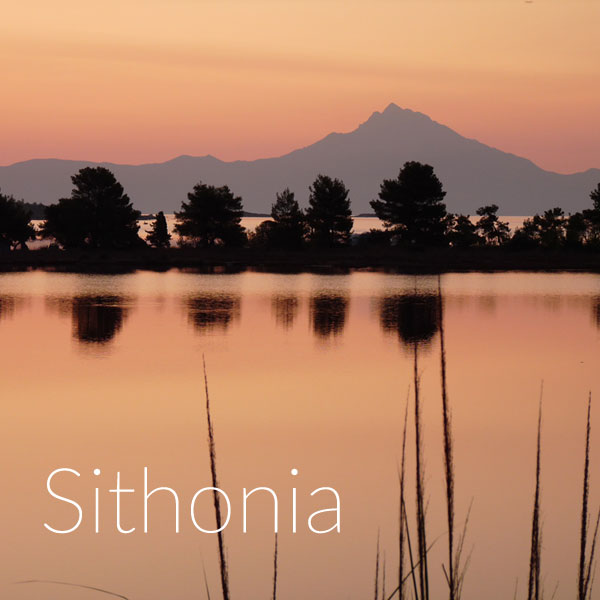
Browse all destinations in Northern Greece here! Or use the interactive map .
"It takes a lifetime for someone to discover Greece, but it only takes an instant to fall in love with her." Henry Miller
Northern Greece - Something for Everyone
Relax on Greece’s most outstanding beaches. Hike or cycle extreme mountain terrains and the world’s deepest gorge. Follow in the foot steps of historical figures like Aristotle, Alexander the Great and the Apostle Paul. Whether you are looking for relaxation, an active holiday, a family getaway or to indulge in luxury, Northern Greece is waiting for you to explore!
Get Inspired

Already know where you want to go? Check out our interactive map for more information about destinations in Halkidiki !
Change Location
Find awesome listings near you.
- Itinerary For The North Of...
Itinerary for the North of Greece

Northern Greece has endless charm and beauty, from exciting cities to incredible national parks. Here’s a week-long itinerary to see the very best, from Thessaloniki through to Preveza.
When picturing Greece , many might think of Athens or the islands. But northern Greece has so much to offer, from unusual natural sites to exciting cities. It has endless charm in its traditional towns and many surprises like wineries, lush green forests, shimmering lakes and wildlife. There are beautiful beaches to enjoy and famous landmarks like Mount Olympus, seat of the Greek Gods. You’ll even find the unusual valley of Meteora, with monasteries perched high on rocks. To top it all off, experience some of the country’s best food and drink to fuel your adventure. We’ve put together a week-long itinerary spanning from Thessaloniki to Preveza, so you can fit in all the best that northern Greece has to offer. Most journeys are easiest by car but they are all doable by public transport. Ready your adventurous spirit for the best Greek road trip of your life!
Day 1 - Thessaloniki
Architectural Landmark
Fly into Greece’s second-biggest city, Thessaloniki . It’s an exciting mixture of ancient and modern, due to the destruction of a great fire in 1917. Explore the old town Ano Poli, which remains beautifully preserved with UNESCO site churches and an acropolis with the 14th-century Heptapyrgion Fortress. The best views and sunsets are from here. The city has shops, museums and tavernas galore. Stroll on the promenade by the Aegean, then have your fill of traditional Greek mezze, famous in the area. Pro tip: The city is walkable but it’s nice to hire a bike.
Day 2 – Nestos National Park and Kevala
Natural Feature
Reach Nestos by driving two hours from Thessaloniki or take the three-and-a-half-hour bus ride to Chrysoupoli via Xanthi. The national park covers the delta of the Nestos river, teaming with wildlife from wild boars to flamingoes. The views are breathtaking and unique. While you’re there, consider getting a train from Stavroupoli to Toxotes for a scenic ride past winding rivers. After, hit the highway (towards Thessaloniki) and drive to Kavala. Its lovely old town sits in the shadows of the impressive ancient viaduct. Eat and sleep well here. Pro tip: Thea vantage point has the best view of Nestos National Park and the Rodopi Mountain Range.
Day 3 – Lake Kerkini and Serres

A two-hour drive from Kavala is Lake Kerkini. You can also take the bus from Kevala to Serres, then the train to Mandraki (two and a half hours). The stunning lake is actually a man-made reservoir, protected wetland and one of the most biodiverse areas in Europe. At sunset and sunrise, the lake reflects the surrounding mountains. Hire a kayak or take a boat trip. Food here is locally sourced and delicious, especially at The Border Station taverna in Vyronia. Stroll through mountain city Serres on an evening then stay at Phillipos Xenia Hotel. Pro tip: Lake Kerkini’s best light and wildlife activity is at 7am.
Day 4 – Ancient Pella and Pozar Thermal Baths
Historical Landmark
Drive one and a half hours from Serres or catch a two-hour bus via Thessaloniki, to reach the ancient city of Pella. It was the birthplace of Alexander the Great and capital of the Macedonian Empire that once stretched from Greece to India. Spend the morning among the ancient ruins and the archaeological museum on site. In the afternoon, head up to the spectacular Pozar Thermal Baths (an hour up the road past Edessa) and waterfall. You’ll deserve a spa day after all that exploring! Pro tip: Book ahead at the beautiful spa hotel.

Become a Culture Tripper!
Sign up to our newsletter to save up to $1,200 on our unique trips..
See privacy policy .
Day 5 – Mount Olympus and Litochoro

Day 6 – Meteora
Drive two hours from Litochoro to Meteora, or take the three-hour train journey to nearby Kalambaka (via Larissa and Paleofarsalos). It’s worth the journey, for perhaps the most unusual and visually spectacular site on our itinerary. Meteora – which translates as ‘hovering in the air’ – has several monasteries hanging vertiginously from rocky columns, overlooking a valley. The best known is Megalo Meteoro, perched on the highest rock. It has to be seen to be believed. Stay nearby in modern city Kalambaka and enjoy restaurant Meteoron Panorama’s grilled dishes. Pro tip: Cover your arms and knees to enter the monasteries.
Day 7 – Preveza

Drive two and a half hours from Kalambaka (via Greece’s only undersea tunnel) or take a three-hour bus ride. Harbour town Preveza is perched on a cove with views of the Ionian Sea and the Ambracian Gulf, with gorgeous beaches. Spend the evening browsing boutique shops and relaxing in cosy bars and restaurants. Preveza is known for seafood, particularly grey mullet roe – an acquired taste, but the accompanying ouzo and crusty bread helps anything go down well. Preveza is the perfect place to relax on the final night of your big Grecian adventure!

Most Beautiful Towns and Villages in Greece

Discover Greece: 30 Awesome Things to Do for an Unforgettable Visit

Athens with Kids: 10 Best Things to Do

The 10 Most Beautiful Beaches in Greece

The 8 Best Secrets to Discover in Corfu

The 16 Must-Visit Ancient Sites in Greece for History Lovers

The 11 Best Walking Tours to Take in Athens

The Best Hotels in Samos, Greece, for Every Traveller

Greek Slang Words to Help You Speak Like a Local

The 13 Best Day Trips From Thessaloniki, Greece

The 9 Best Zakynthos Day Trips and Excursions

Off The Beaten Path: 10 Unusual Things to Do in Greece
Culture Trip Summer Sale
Save up to $1,200 on our unique small-group trips! Limited spots.

- Post ID: 1001519838
- Sponsored? No
- View Payload
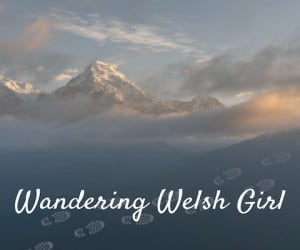
The Best Things To Do In Northern Greece
Greece has been the inspiration for travellers , philosophers and writers for centuries. Most people imagine Greece as being paradise islands with white sand beaches, or whitewashed villages overlooking crystal clear blue waters.
And whilst these destinations are incredibly beautiful, Greece is so much more than just its seaside locations. The country is rich in culture, tradition and history, all of which can be seen wherever you go.
Northern Greece is not a region tourists often think to visit, but it’s just as, if not more, beautiful than the south with its Ottoman architecture, areas of natural beauty and specialised cuisine.
So, for more information on the best places to visit in Northern Greece, read on below.
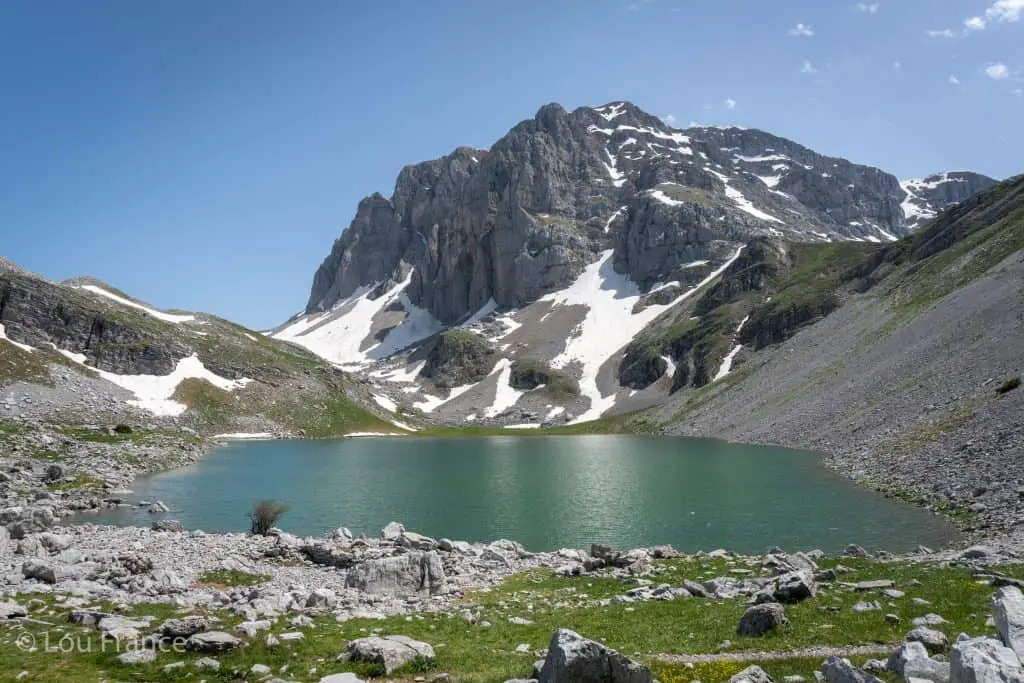
Disclaimer: Some links in this article are affiliate links, which means that if you purchase through them I receive a small commission, at no extra cost to you. This helps cover the cost of running this blog. Thanks for your support!
17 Top-Rated Things To Do In Northern Greece
In late spring this year we spent a month exploring Northern Greece as part of our European road trip from the UK to Turkey . We had no expectations and ended up being blown away by the places we visited. These are our top rated things to do in Northern Greece.
1. Become Mesmerised by Monasteries at Meteora
Meteora is a highlight not only of Greece but of Europe , and a place in northern Greece to dedicate at least a day or two for exploring. Meteora is a unique landscape where large rock pillars dominate the surrounding plains.
Atop the rounded pillars of Meteora, you can find one of the largest complexes of Eastern Orthodox monasteries. Originally there were 24 monasteries, each own their own pillar, boulder or cave, but today there remains only six, all of which are open to public visits.
Each of the monasteries is closed one day of the week so if you have a particular monastery in mind, you’ll have to plan your visit accordingly. The complexes vary in size and impressiveness. Most require a basic level of fitness to enter as access is usually via a steep set of stairs.
Dotted around the scenic valley drive there are also several jaw-dropping view points which make for beautiful photos and a lovely place to enjoy sunset. The quaint village of Kastraki is a good base from which to explore the valley and is home to several good tavernas and guesthouses .
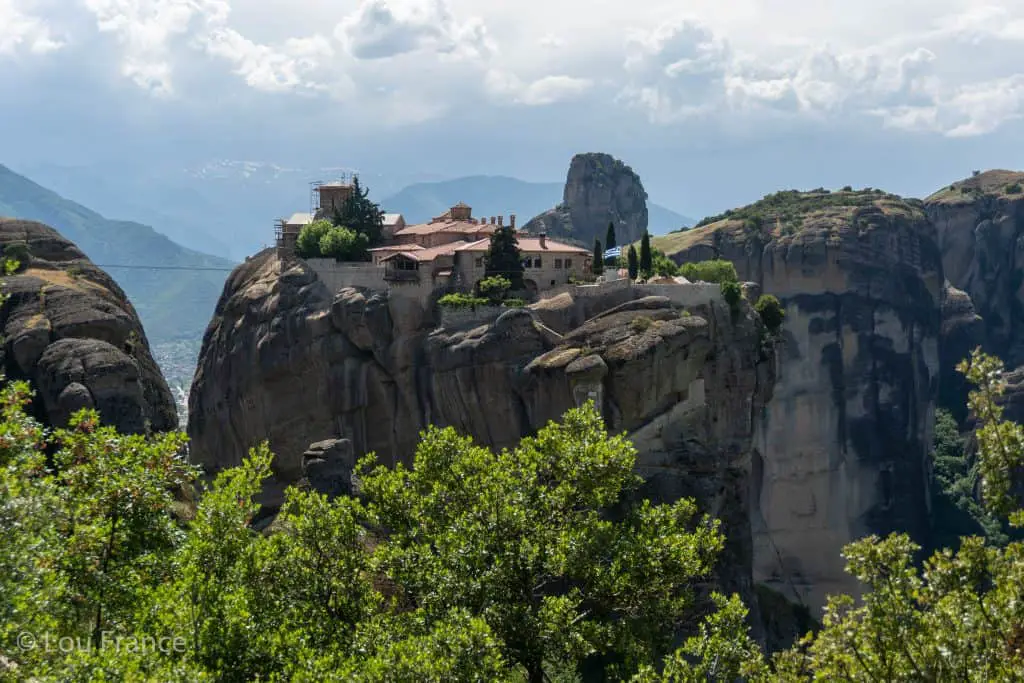
2. Relax by the Crystal Clear Waters of Halkidiki
Halkidiki is an area of Northern Greece known for its three, finger-like peninsulas. The peninsulas have a winning combination of clear turquoise water, white sandy beaches and rocky coves, backed by forests of Mediterranean trees. For this reason, it is the most popular summer destination in Northern Greece.
The eastern most peninsula is home to Mount Athos, which is sacred area and requires permits to visit. Sithonia is the peninsula with the most beaches whilst Kassandra is the most developed for tourism. During your visit to these beautiful peninsulas you can enjoy a cycle ride, tour the vineyards or simply relax on one of the many beautiful beaches.
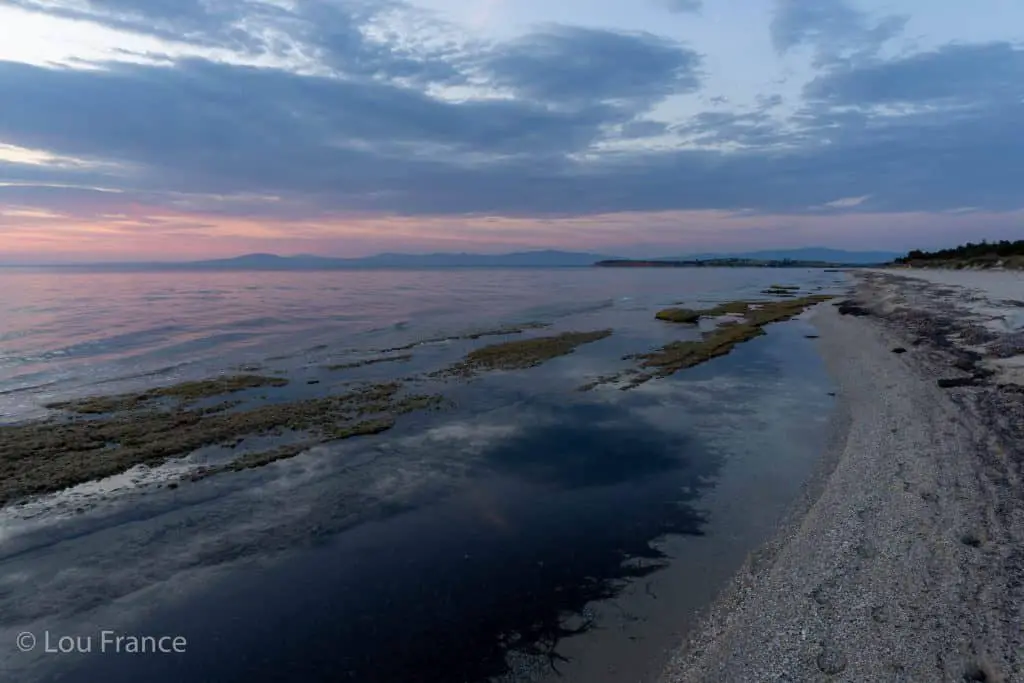
3. Explore Greece’s Second Largest City, Thessaloniki
I may not be a huge city fan but Thessaloniki is certainly an exception to the rule. This perfectly placed port city is packed with things to do.
Whilst Athens may get the historic limelight, Thessaloniki is home to its own rich history, most of which can be seen scattered throughout the city. Top ancient sights include the Roman Agora, Rotonda and Arch of Galerius in the centre of town and the Byzantine era Baths and Agios Demetrios Church. You can visit all the top sites on this hop-on hop-off bus tour .
Depending on your interest, there is a wide choice of museums to visit in Thessaloniki and it’s also a paradise for shoppers and foodies alike. Delve deeper into Thessaloniki’s culinary scene on this walking food tour .
Once evening rolls around, head to the promenade where you can enjoy a sunset stroll or climb up the Ottoman-era White Tower. Alternatively, venture to Eptapyrgio Castle to catch the last rays of sunshine glimmering over the Agean sea.
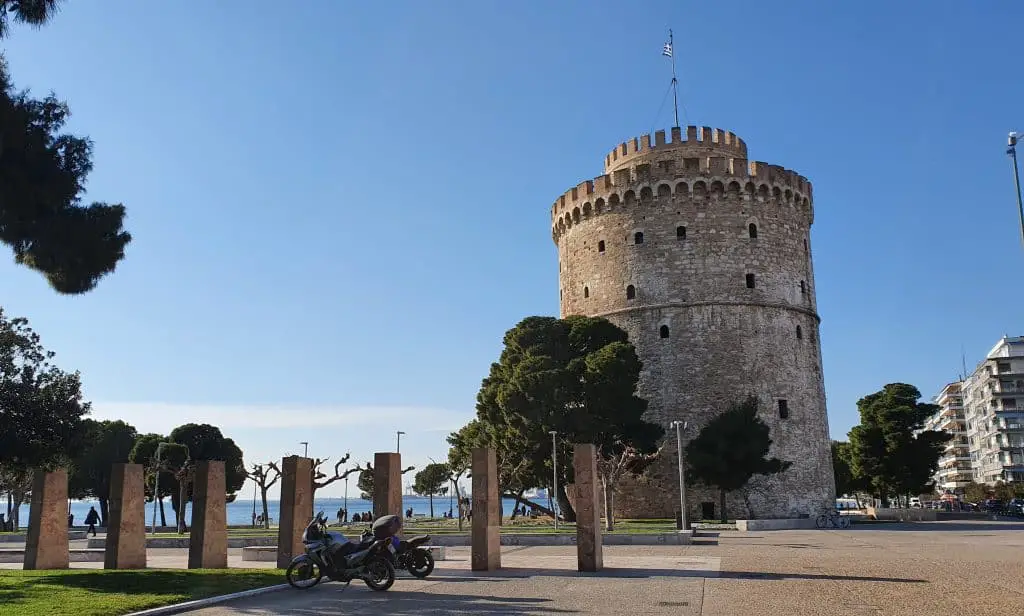
4. Enjoy a Hike in Pindos National Park
Pindos National Park is a true delight for hikers and a real hidden gem of Greece. Spread across 2000 km2, the park is a mix of lush green forests and steep craggy peaks. Covering a section of the Pindus mountain range, the park contains several peaks over 2000m and a collection of black stone villages, all linked through well-marked trails.
Two of the best hikes to enjoy in Pindos are Vikos Gorge and Dragon Lake (Drakolimni). Sitting at the foot of Mount Tymfi, Vikos Gorge is actually the deepest canyon in the world but at only 20km in length, it’s possible to walk the gorge in just one day. Since the gorge is covered in trees, the hike is sheltered from the blazing sun for most of the route which can be a huge benefit in the summer months.
For those that want to experience the finest alpine views Greece has to offer, don’t miss a hike to Dragon Lake. Climbing over 1000m and taking around 4 hours one-way, this hike is no stroll in the park but is achievable in one (big) day. If you’d prefer to break up the hike you could opt to spend a night at the Astraka refuge. Either way, the hike hike to Dragon Lake is extremely special and was a big highlight of our trip through Northern Greece.
Climbers should head to the village of Kipoi to tackle the range of climbing routes on offer nearby.

5. Wonder at the Stone Houses and Bridges of Zagori
You don’t need to be a hiker to enjoy the wonders of Pindos National Park. Scattered around this vast national park are the 46 villages of Zagori. These traditional mountain villages are known for their stone houses which are very different in appearance to the whitewashed houses found near the coast. Some notable villages include Papingo, Mikro Papingo and Monodendri.
The villages are linked by stone paths and bridges which date back to the Ottoman period. Many of the noteworthy bridges are located near the village of Kipoi. Some of the bridges that are particularly impressive include the 3-arched Bridge of Plakida or Kalogeriko, and the large single arched Bridge of Kokkori.
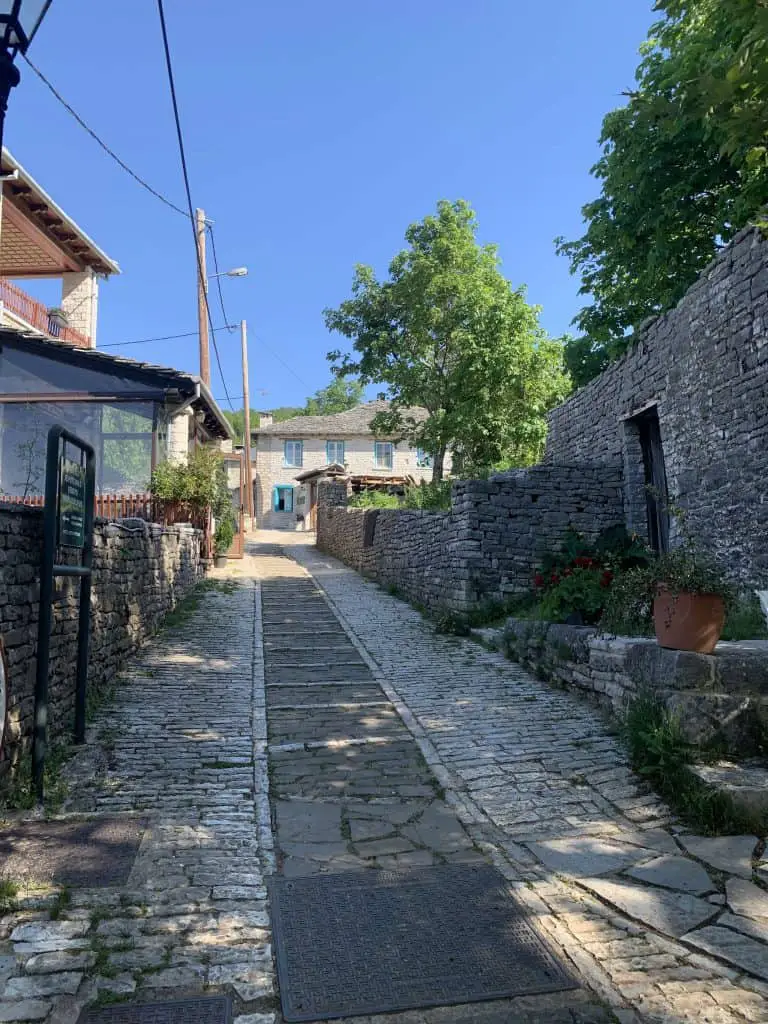
6. Learn About Alexander the Great at Pella
Ancient Pella was the capital of Macedon and the birthplace of Alexander the Great (as well as his father Philip). Today Pella is a small town located in the region of Central Macedonia.
There are two very big reasons to add Pella to your Northern Greece bucket list. One is the ancient archaeological site of Pella and the other is the archaeological museum of Pella. The ancient site is a large complex and takes several hours to walk around, however the majority of noteworthy points are centrally located. A few mosaics remain at the site, whilst the more intricate ones have been moved to the nearby museum.
If you buy a ticket at the archaeological site, the museum entry is included in the price and I certainly recommend a visit to this informative museum. As well as showcasing the mosaics, there are other artefacts which were found in the area such as pottery, coins, clothing and furniture. It also has a room dedicated to Alexander the Great, the Greek ruler who probably needs no introduction.
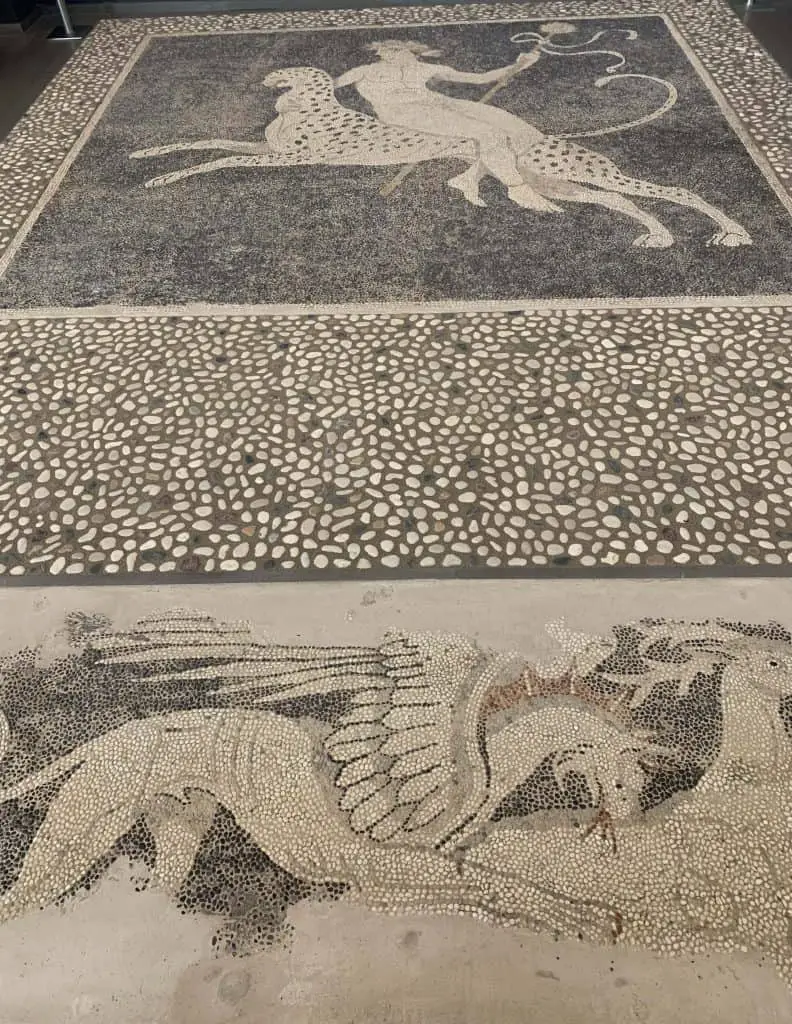
7. Walk With the Gods at Mount Olympus
As the tallest mountain in Greece, Mount Olympus rises from the Agean to a towering height of 2917m. The lower mountain is broken up into gorges which are packed with a huge range of flora and fauna The mountain, which is steeped in myth and supposedly home to Greek gods, is part of a larger area known as Mount Olympus National Park, the first of Greece’s national parks.
Whilst trekking to the top of Mount Olympus is possible, it takes at least 2 days and should not be underestimated. For an adventurous activity in Northern Greece, there are guiding operators available to lead inexperienced hikers up the mountain. For a less strenuous option, instead hike one of the scenic gorges where there are numerous waterfalls and caves to explore. For those interested in history there is also an archaeology site on Mount Olympus called Dion.
A good base for exploring Mount Olympus is the pretty town of Litochoro which has delightful tavernas and a selection of hotels . The visitor centre here provides good information about the geology, flora, fauna and monasteries on the mountain.
If you’d like to explore more of Greece by foot, check out this guide to hiking in Crete.
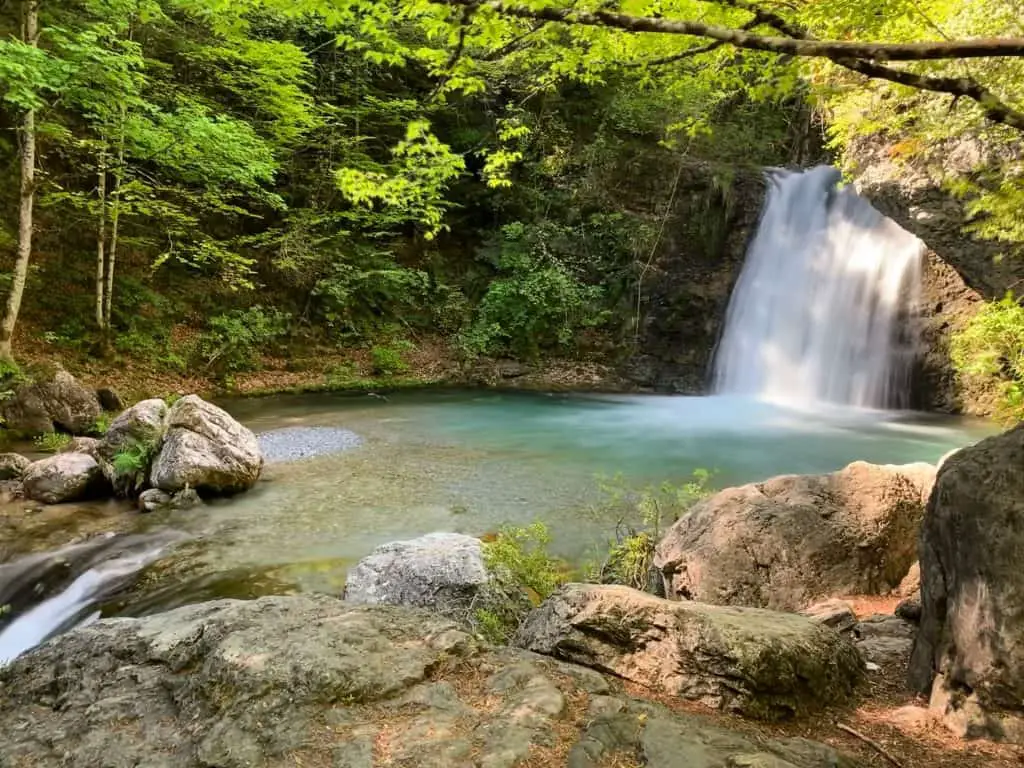
8. Relax at the Beach Town of Parga
Parga is located in the North-Western regions and is one of the best places to visit in Northern Greece if you’re on the hunt for those gorgeous sandy beaches. Not only is the area full of beautiful natural landscapes, but it also houses some of the most important monuments and landmarks of years gone by.
One of these vital pieces of architecture is the Venetian castle, which sits at the top of the mountain, overlooking the ocean. The castle is thought to have been built before the 15th century, but has had to be rebuilt four times since its first opening due to the attacks launched by various other empires. This doesn’t matter to the people of Parga though, as the castle was built to protect the city from the invasion of pirates and other civilisations in the first place. Today, it is one of Parga’s greatest tourist attractions and is open to the public most days of the year.
However, despite the historical importance of the castle, Parga’s main tourist attraction is the beaches. There are so many beautiful stretches of sand such as Sarakiniko beach, which is tucked away in a cove surrounded by luscious greenery. For the water-sports enthusiasts, Valtos beach offers lots of different activities such as surfing and water-skiing.
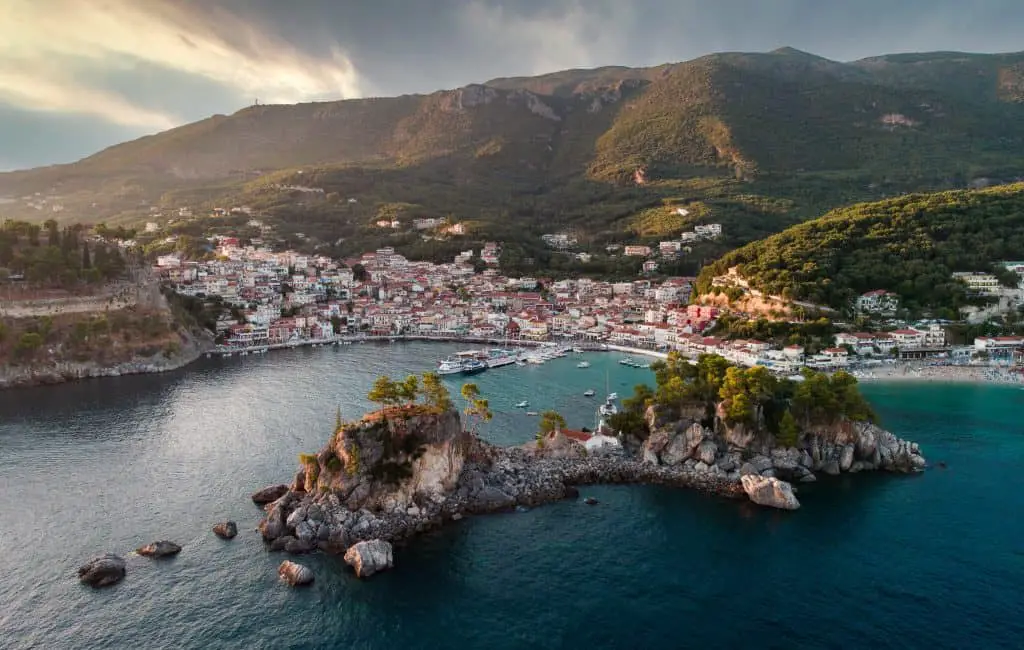
9. Explore the Architecture of Kavala
Greece is a country in which every town holds some kind of cultural gem. However, if you are looking for the full Greek experience, then Kavala is the city for you. Everything about this beautiful town is unique, whether that be the architecture, the cuisine or the natural landscapes.
The most prominent feature of the city is the fortress at the top of the hill, sat overlooking the houses in the city below. Similarly to the Venetian castle in Parga, this fortress gave the Venetians an excellent lookout point when it came to spotting oncoming attacks. Today, tourists and locals can hike to the top of the hill to enjoy the impressive view.
Another excellent piece of architecture in the city is its one of a kind water-pipe system. Whilst this may not sound like a particularly interesting feature, the city contains a large, Colosseum-like structure also known as the aqueduct, which houses the city’s main pipelines.
One of the best things to do in Northern Greece, and any European city for that matter, is to appreciate how history can be seen all around. Western cultures often tend to knock down historical buildings, replacing them with contemporary accommodation. Kavala is just one example of a Greek city which has managed to preserve its beautiful Ottoman cobbled streets and colourful housing.
Aside from the feats of engineering Kavala can offer, one of its most prominent events is the fish auction. The city is known for having a prominent fishing community, and both tourists and locals can enjoy the huge variety of freshly caught produce available for purchase.
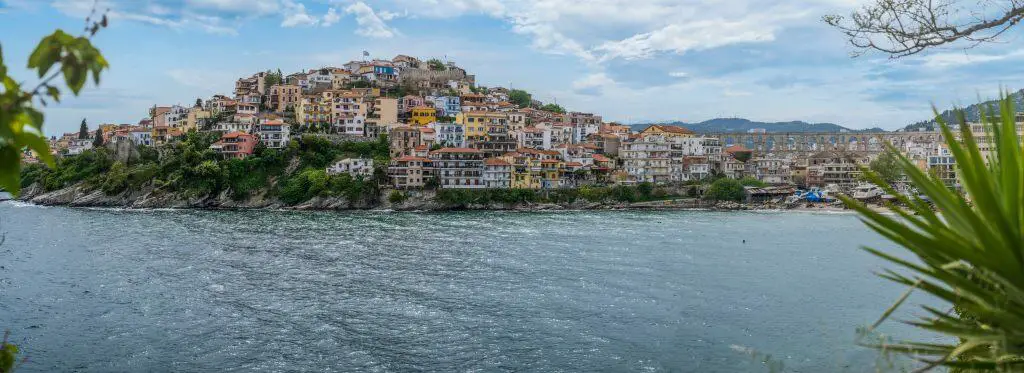
10. Take a Boat Trip at the Lakeside City, Kastoria
Kastoria isn’t as well-known as some of the other cities in Northern Greece, but it has such a wide variety of activities to do and places to visit. It’s surrounded by mountains, lakes and forests, all of which are excellent for hiking through. During the winter, many tourists like to take advantage of the mountainous terrain and practice their skiing skills, whilst those who prefer the summer months are able to take boat tours to explore the lakes surrounding the city on both sides.
Other than being full of historical buildings, excellent shopping opportunities and a few museums, the city has many hidden natural phenomena, like the Dragon’s Lair Cave. This gorgeous landmark contains no less than seven underground lakes and is nestled in the forestry surrounding the town.
One of the man-made landmarks in the area surrounding Kastoria is the ghost village of Gavros. The town was abandoned many years ago, which the locals suspected to be due to a snake and bear problem, and so visiting the empty village can be pretty eerie.
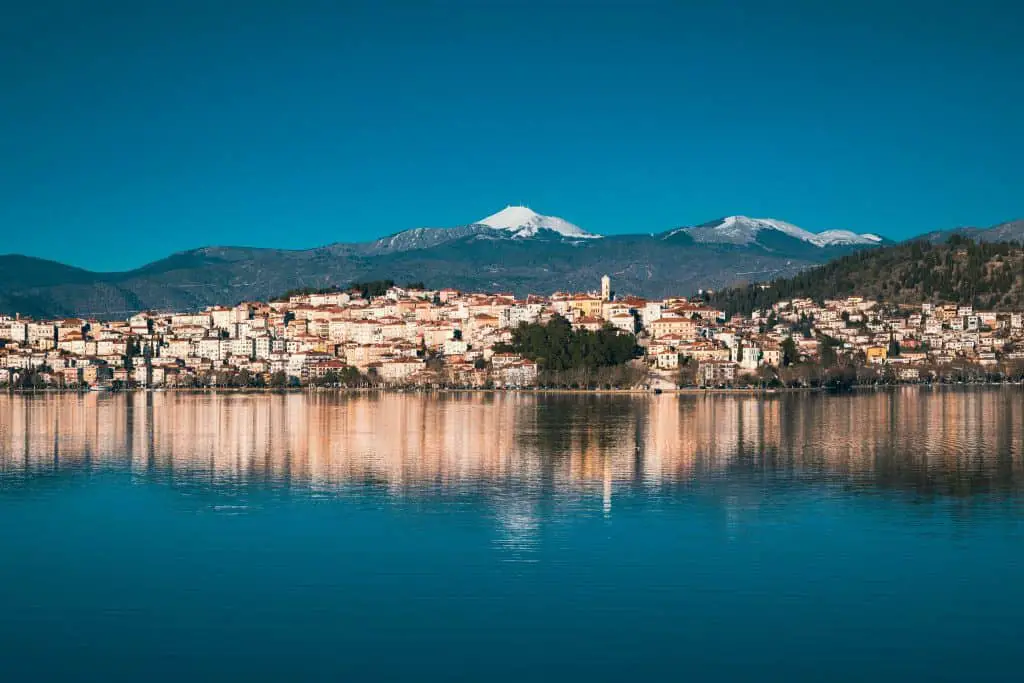

11. Wander Vibrant Ioannina
Sometimes when you visit a place it just has a certain buzz about it. Ioannina is one of those places that feels like it is full of life. The lakeside cafes are filled with locals catching up over a coffee whilst the lake itself is teeming with birdlife.
Set on the western shore of Lake Pamvotis, Ioannina is a fortified city which thrived under Ottoman rule. Explore the city inside the walls with a visit to the Its Kale Acropolis, where you can see the Fethiye Mosque and visit the Byzantine museum.
Beyond the walls take a boat trip on the lake to the island with no name, stroll around the lakeshore and enjoy a coffee at one of the lakeside cafes. Head to the eastern shore of the lake if you want to spot birdlife.
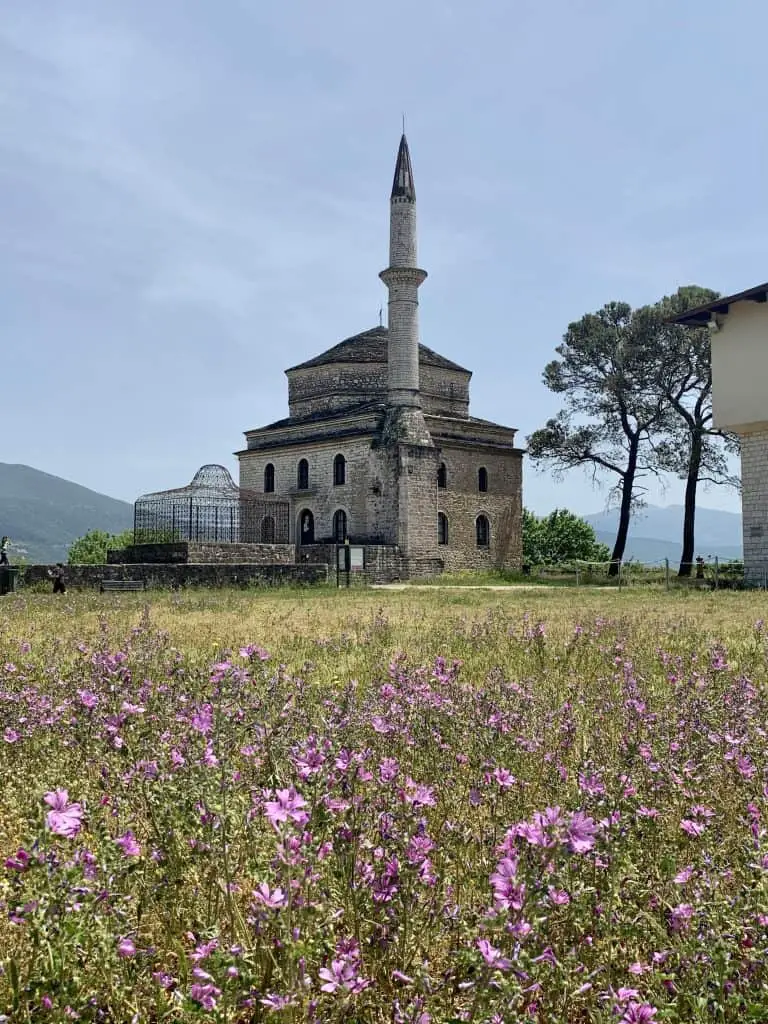
12. Explore Waterfalls and Ruins at Edessa
Edessa is a city in central Macedonia which was first known as the City of Water. The reason for this becomes quickly obvious once you discover the plethora of waterfalls at the city’s edge, in the appropriately named Waterfalls Park.
This water power has been utilised for centuries to power mills and turned Edessa into an industrial centre. Today much of the water is used to grow cherries and it’s said that the Edessa-Vodena cherries are the best in the world. Plan your visit for mid-May to catch the Gastronomic Fair of Eddesa where you can sample these cherries, along with honey, olives and wine.
Outside of the city, a short drive brings you to the ruins of ancient Edessa. At these ruins you can see a colonnaded street with intricate carvings on the pillars and some ancient graffiti carved by a foot soldier who guarded the city gate. Whilst these ruins aren’t as impressive as nearby Pella and Vergina they are a great site for history buffs, especially if you chat to the knowledgable guide who looks after the site.
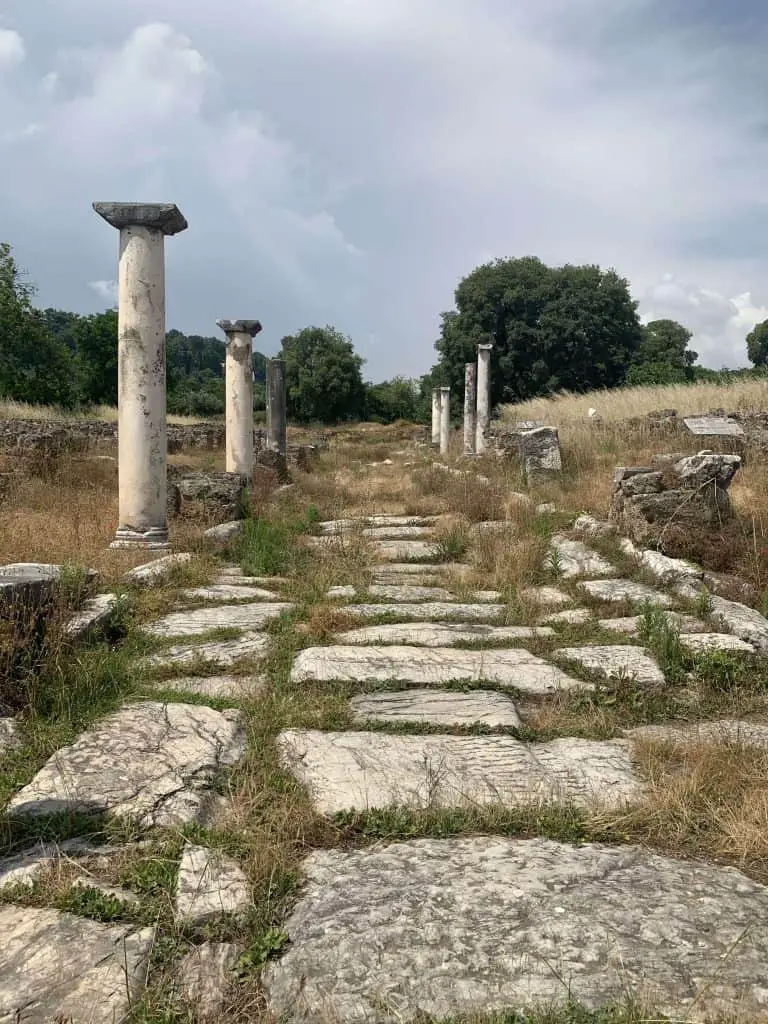
13. Get Lost in History at Vergina
Vergina is one of the smaller towns on the list, and is usually best for a one-stop day trip as there are few other tourist attractions in the surrounding area. However, the size of the village in no way reflects the importance of its historical landmark. In Vergina, you’ll be able to find the tombs of Phillip II, King of Greece, alongside other historical figures such as Alexander the Great’s son.
You’ll be able to see all areas and rooms inside the elaborate tomb, including the one containing Phillip’s coffin. More commonly known as “the gold larnax”, the casket holding the bones of the former king weighs just over 11kg and is made of pure gold. Alongside the tombs, you’ll be able to visit the ruins of the Palace of Agai. This was once the Greek Royal Palace and was home to King Phillip II and his family.
14. Revel in Nature at The Prespa Lakes
Prespes is one of the most prominent regions in Northern Greece, and houses two of the largest lakes in the country. The larger of the two, Lake Megali Prespa, spans over 290 square metres and sits in three separate countries: Greece, Albania and North Macedonia. Mikri Prespa, the smaller lake, crosses the border into Albania but can’t quite boast the same size as the larger lake.
Both lakes contain a huge volume of different species including various types of fish, birds and many plants and flowers as well. Alongside this, the lakeside towns are all surrounded by mountains and forests which are perfect for hiking through. The village of Laimos provides an excellent experience for visitors as it contains one of the best hotels in the region, overlooking the gorgeous lakes.
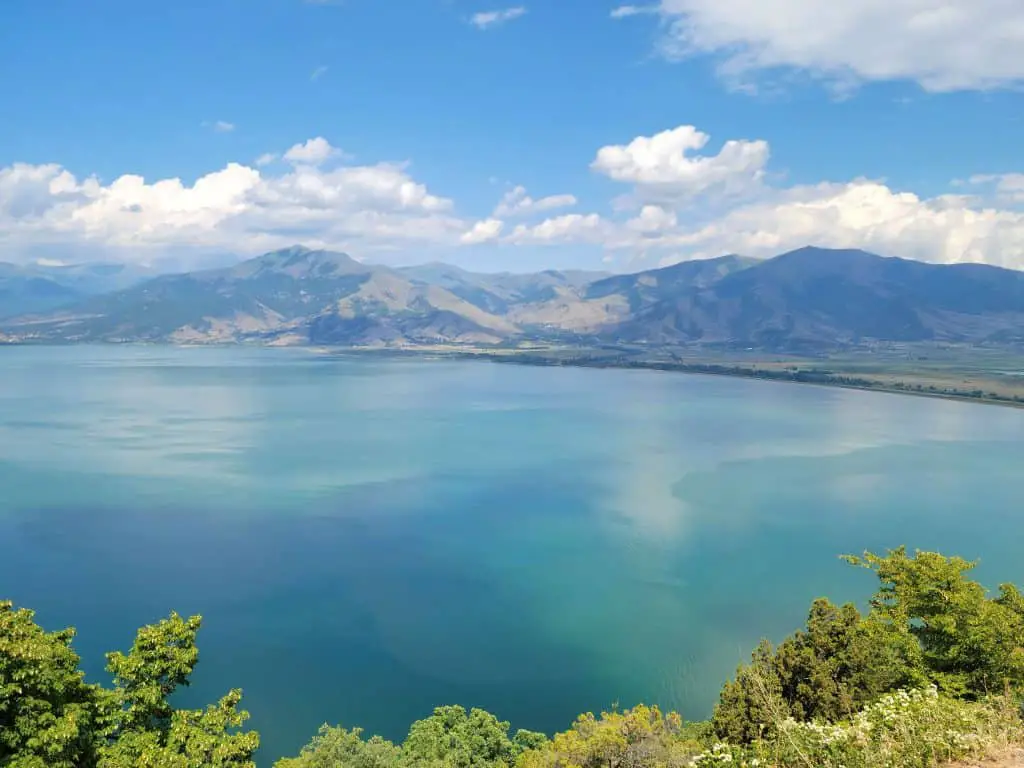
15. Visit the Town for Gastronomy, Metsovo
Metsovo is another historic city which is rich with culture, as can be seen through its many museums, galleries and other creative societies. This town in Northern Greece is best visited during the winter as it spends a few weeks of the year blanketed in snow, meaning you can take full advantage of the ski season in the mountains.
However, Metsovo’s greatest feature is the residents’ love for food. The town is one of the only places in Greece to cultivate grapes, using vines imported from France, which are turned into local wines. The winery offers a guided tour explaining the wine-making process and a tasting experience at the end. The wine shop is also open to the public on weekdays.
Not only does the city produce fine wine, but it is also well-known for its selection of local cheeses. The Metsovella hard cheese, named after the region, is produced in the town itself by the locals and the galotyri soft cheese can also be bought from local producers.
The tavern in Metsovo has created a menu using almost entirely local ingredients with everything from local meats and cheeses to salads made with freshly picked mushrooms and wild greens from the surrounding forests. If you’re feeling particularly adventurous, you could even take a pie making class with the family who own and run the tavern.
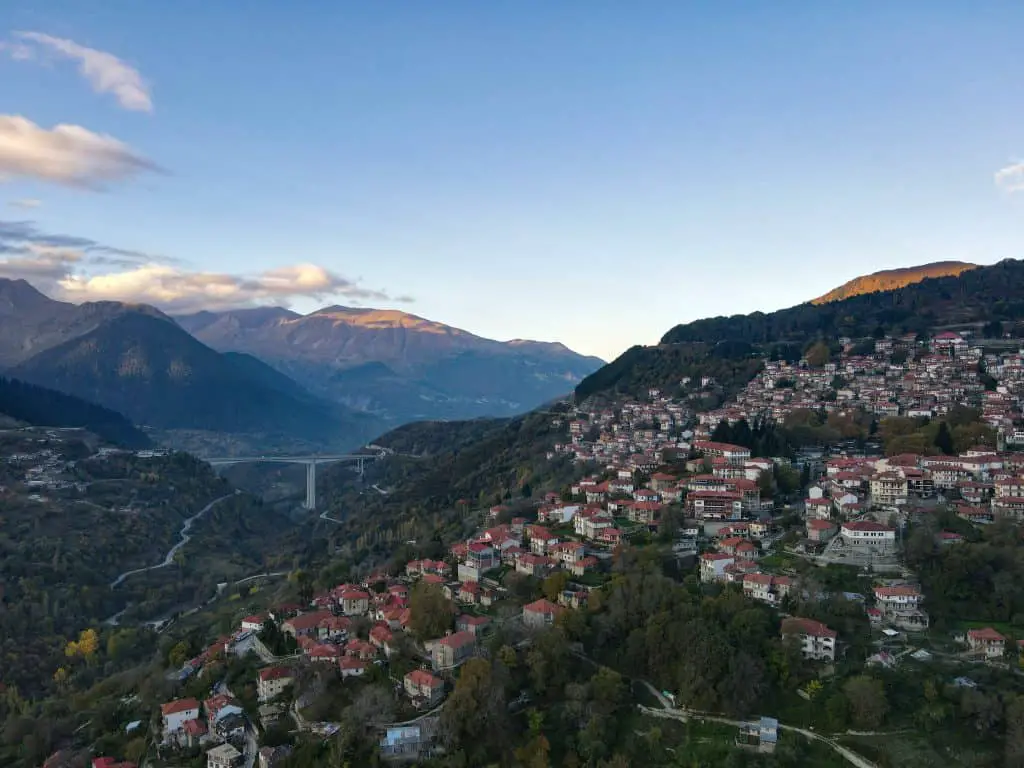
16. Appreciate Birdlife at Lake Kerkini
Lake Kerkini is an area of natural beauty and a hotspot for any keen birdwatchers visiting Greece. With a plethora of different species living around the lake, you could spend hours looking out for some of the rarest animals. But Kerkini has more to offer than just birds.
Mount Agkistro, situated next to the lake, produces its very own natural hot springs, which are used by residents and tourists alike to warm up on a cold day. Sometimes, they can reach up to 37 degrees Celsius!
The locals living in the area often run two-day trips up and down some of the surrounding mountains, such as Mount Belles, either by bike or on horseback. It usually takes a day to reach the summit, where you’ll sleep under the stars with a view of Lake Kerkini, before descending the following day.
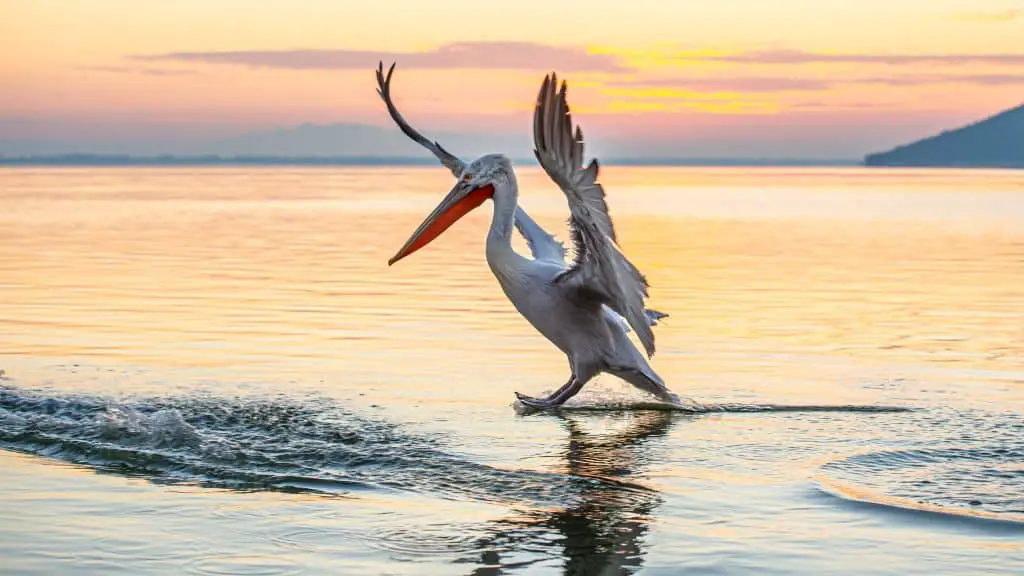
17. Visit The Party City of Xanthi
Xanthi is place to be if you’re a social butterfly. Due to its high student population, the city is known for its excellent nightlife, containing no end of pubs, bars and clubs for you to choose from. However, the parties aren’t reserved for the night. The old town festival occurs every September as local artists, performers and other creative minds come together to put on a display of music, theatre and art for the whole town to enjoy.
Alongside its attractions for the young, Xanthi also contains some rich historical culture. There are over 1200 listed buildings throughout the city which have been officially labelled as “landmarks” due to their importance to the study of Ottoman architecture. Xanthi’s weekly bazaar brings together a collection of sellers from across the region with their handmade goods. You’ll find everything from clothes and accessories to unusual local delicacies at the largest open-air market in Greece.
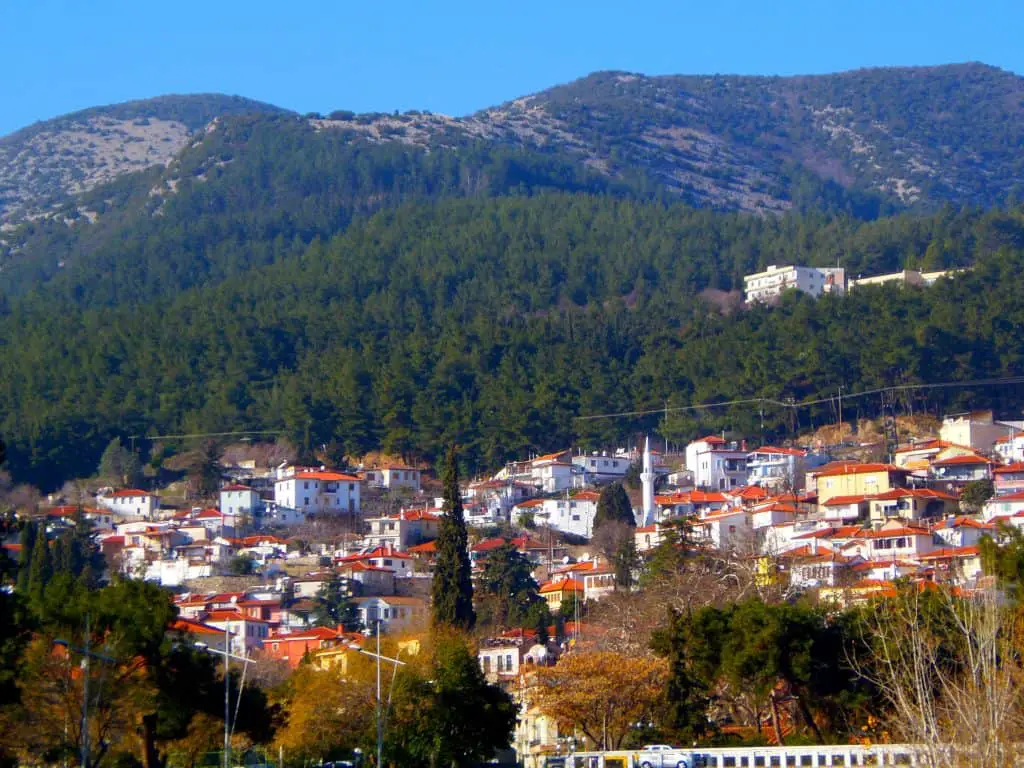
Don’t Forget Your Travel Insurance!
For the best deals on travel insurance, check out Safety Wing.
Top Destinations In Northern Greece Summary
Northern Greece is packed with top-rated activities to enjoy and beautiful locations to explore. For nature lovers there is a vast array of beautiful landscapes to enjoy such as Pindos National Park and Mount Olympus. For history buffs there are important historical sites such as Pella and Vergina, whilst foodies can enjoy cuisines in Metsovo and Zagori.
Shoppers will enjoy the goods on offer in Thessaloniki whilst those looking for a beach escape should head to Halkidiki or Parga. Whatever your interest, there is something to offer everyone on a visit to Northern Greece.
Louise is an Adventure Tour Guide, Snowboard Instructor & Mountain Leader from South Wales. Through working as a tour guide and snowboard instructor, she has spent the last 15 years travelling Asia, Africa and the Americas. Louise is a published photographer and currently guides mountain trips in the UK.
Recent Posts
The 11 Best One-Day Hikes In Wales
Wales, a land of myth and legend, is a hiker's paradise with its dramatic landscapes, verdant valleys, and rugged coastlines. From the towering peaks of Snowdonia to the serene shores of...
The Best Castles in Wales: A Guide To The Majestic Fortresses of Wales
Wales is a country steeped in history and the castles that dot its landscape are a testament to this rich heritage. From towering fortresses to romantic ruins, there are over 600 castles in Wales to...
- Exploration
- Group Travel Greece with Friends
- Greece Tours & Vacations for Seniors
Road Trip in Northern Greece

How many days?
The more you have at your disposal, the better. Ideally, two weeks, to dive into all the breathtaking beaches, to walk paths that cross forests, to canoe down the Nestos River , to spend the night in Thessaloniki and Xanthi , to eat kebab in Pomakochoria, and to see ancient magical cities, like Vergina , Stageira and Philippi.
Where do you start?
From Veria , to which the road will take you from Athens in five hours and ten minutes. It is worth staying here for at least one night, not only to visit the (really fascinating, even if you are not an archaeologist) archeological site of Vergina , but also to stroll in the quaint old town of Veria, and to try amazing local cuisine in a tavern called 12 Grada .

And then what?
You will drive up and down for an hour and a half to the Pozar Baths which are not at all the thermal waters you are used to. Popular and super fun, for all ages, they are located in the heart of a beautiful forest and are full of impressive waterfalls, hot streams, and facilities for indoor and outdoor massages. On your way, you could stop in Edessa , to see not only its famous waterfalls but also the wonderful old town called Varosi .
Road trip to the north without Thessaloniki is not possible
Even if you have visited Thessaloniki before, you must walk on the coastal road of Nikis, and explore Ano Poli with its castles. Make a stop for food at our favorite Academia Art Restaurant or the legendary I Rouga . Firstly, it is on your way, before you head to the beaches of Halkidiki , secondly, it is less than a two hours’ drive from Pozar Baths.
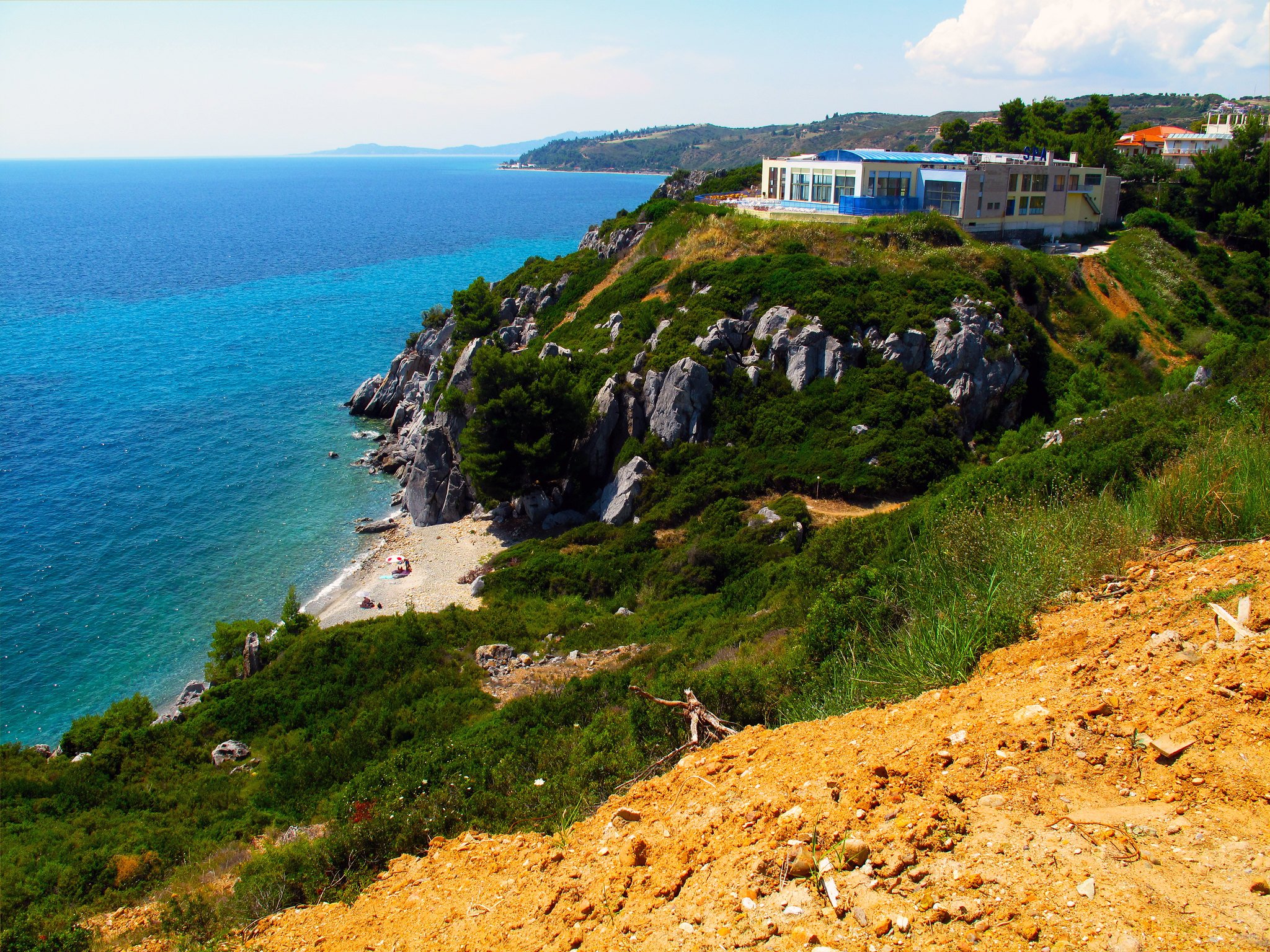
There is nowhere like Halkidiki & that’s a fact
Halkidiki and its beaches comfortably fill a road trip alone. However, for the needs of your first road trip to the north, we will focus on the second leg. The second leg gathers the biggest portion of spectacular sandy beaches. And we will definitely tell you to dedicate 3-4 days to them. Firstly, dive in the calm lake waters of Porto Koufo , secondly, to sunbathe on all-white rocks, thirdly, to dive in turquoise waters in Kavourotripes , and finally, to enjoy the magical sunset lying on the powdery sandy beach in Karydi . Do not miss leaving Halkidiki without stopping in Stageira , the ancient city in which Aristotle was born. Today, it is a very interesting, as well as green, archaeological site.
Did anyone say Dunes?
One of the most beautiful beaches of Northern Greece, hides outside Halkidiki, just outside Kavala , and is… called Ammolofi. It actually is what its name means in Greek; a series of dunes that end in deep blue waters. It is everything you need for some refreshing dives before or after the walks in the port and the old town of Kavala. Just outside the city, the archeological site of Philippi is definitely worth a stop on your road trip, firstly because of its famous ancient theater and secondly because where else do you have the opportunity to walk on an original Roman road from those who led everyone to Rome. For food in Kavala, you should grab a table in Sousouro , and for coffee in the fairytale Imaret.
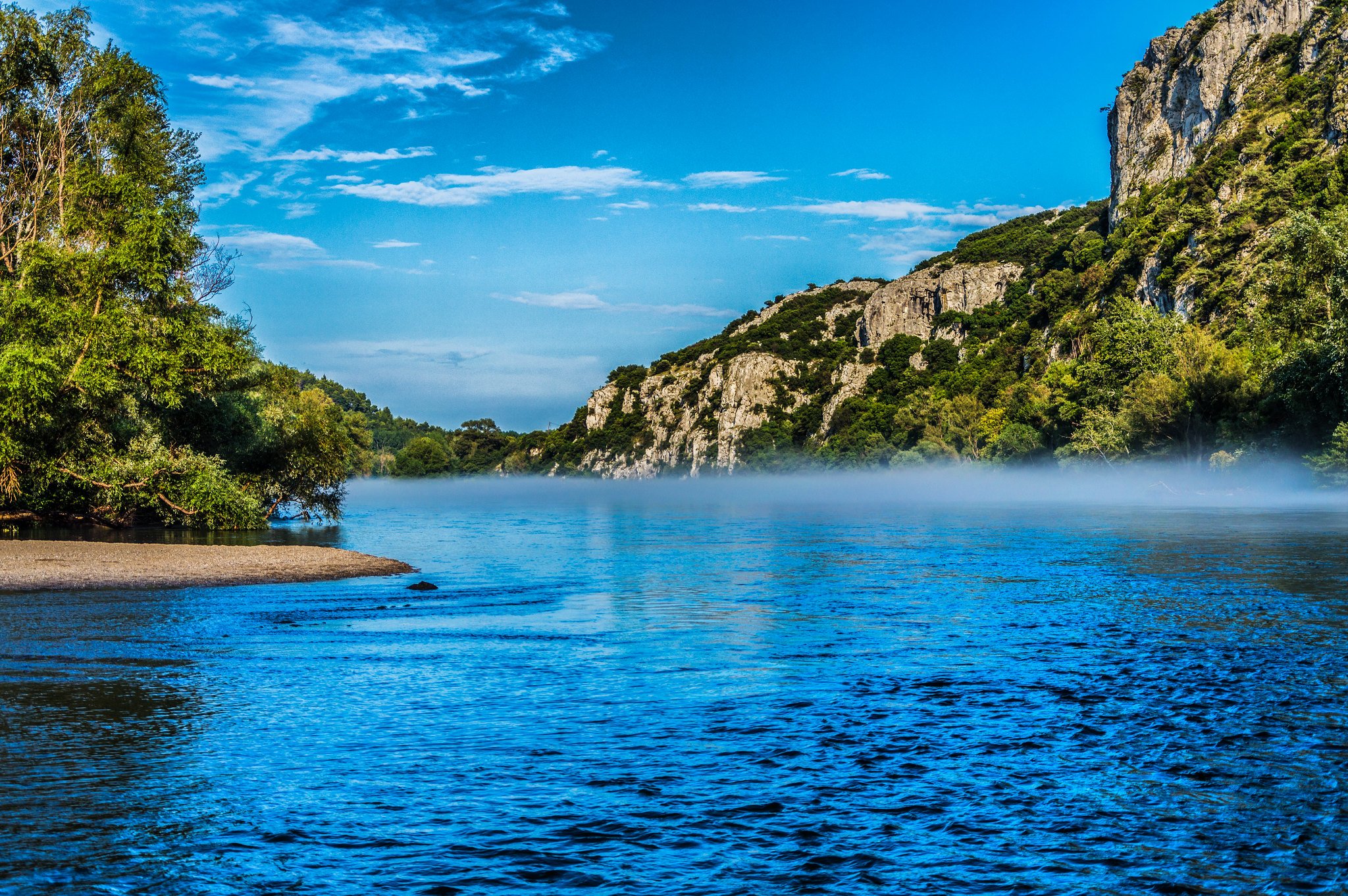
Nestos river Photo Credit: Angelos Konstantinidis
Whatever you do, do not miss Nestos River
Based on the wonderful Stavroupoli of Xanthi (an hour and a bit away from Kavala) you could go canoeing on the most impressive river we have in Greece. If you have more days at your disposal, it is worth walking the impressive Forest of Haidous , to see the impressive waterfall of Livaditis . Eat fresh fish and seafood in Porto Lagos , where the waters of Lake Vistonida meet the Thracian Sea .
Xanthi and Pomakochoria
If we are a little subjective, we will say that Xanthi is the most beautiful city in Northern Greece. With an old city eye-popping, a river framing its modern version, mouthwatering cuisine, and many opportunities for nature-loving excursions. Therefore, it is not difficult for her to claim this title of the most beautiful city in Northern Greece.
Twenty minutes outside Xanthi, at Pomakochoria, the time has stopped. The smells of oriental aromas, perched high on the slopes of Rodopi , will make you feel that you’re in another decade. Sminthi with its elaborate minarets rising to the sky. Echinos with its arched bridge over the stream that separates it from the main road. Thermes with their thermal baths and the outdoor pool that steams from the natural hot water by the road. And Kottani with the wonderful tavern that serves one of the best yogurt kebabs you have ever eaten.
For more tips for where to go on road trips in Greece, contact one of our expert travel designers here .
Feeling Ready?
From our blog.
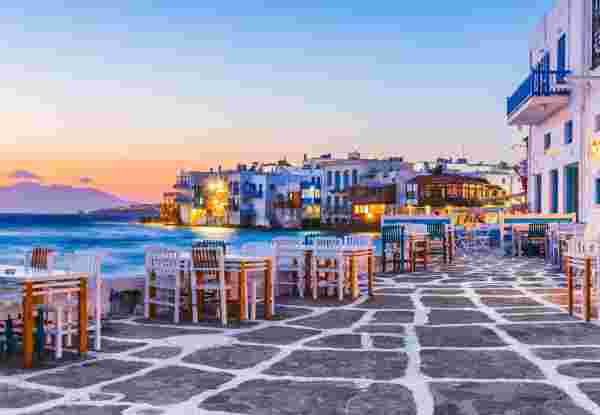
Weather in Greece in January: Your Complete Guide
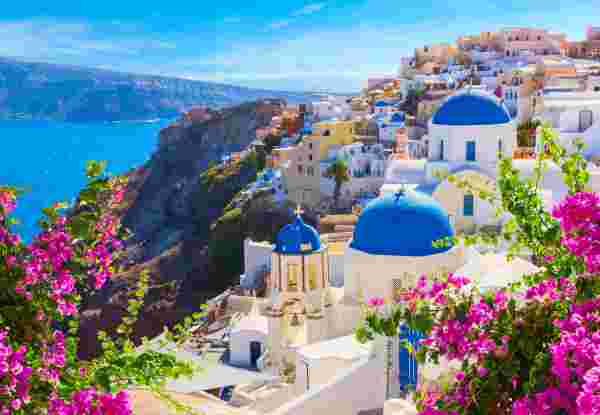
Discover Greece Like Never Before with Our Ultimate Giveaway!
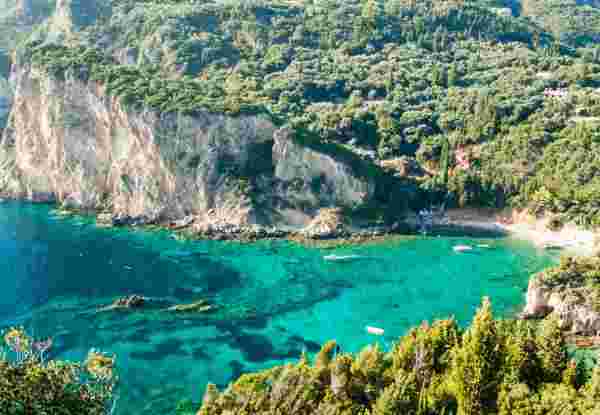
Where to go in Greece for first time: What you need to know
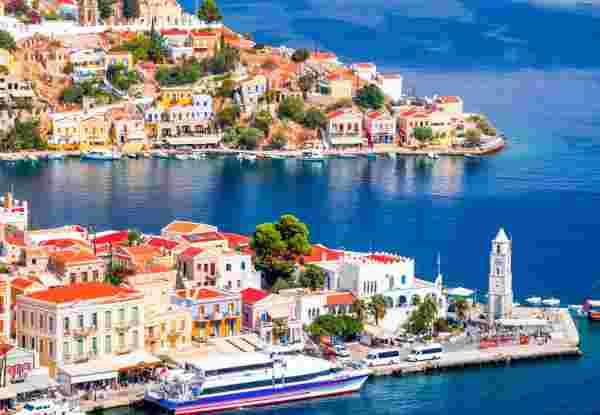
Answered: Do They Speak English in Greece?
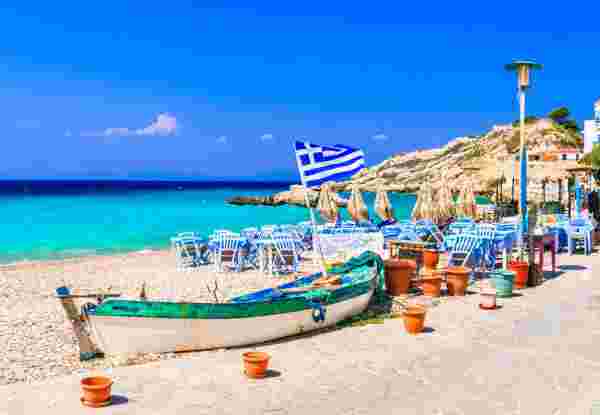
Insider Tips: Is Greece Safe to Travel to?
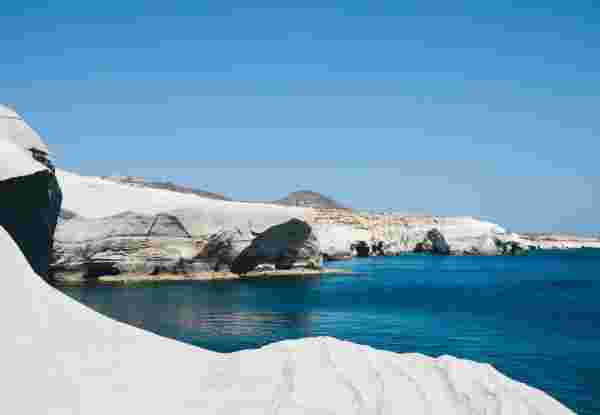
Your Ultimate Insider’s Guide to Greece in August
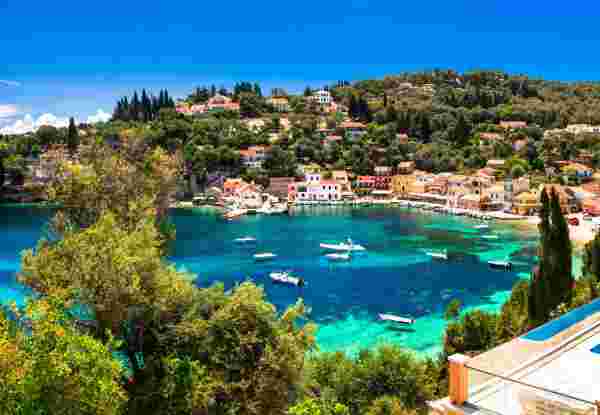
Weather in Greece in May: What to Expect

- SOUTH AFRICA
- ZAMBIA-VICTORIA FALLS
- PHILIPPINES
- NEW ZEALAND
- SARDINIA PAGE
- THINGS I LOVE!
- Work With Me

AMAZING NORTHERN GREECE: A One week Itinerary You’ll Love!
In BLOG , DESTINATIONS , EUROPE , GREECE , USEFUL GUIDES by Clelia Mattana 7 October, 2018 8 Comments
Contents - Open To Read
NORTHERN GREECE ONE-WEEK ITINERARY, THINGS TO DO, HOTELS & GREAT YOURS!
Discover the best sights, points of interest, day trips, and hotels in Thessaloniki & Halkidiki (Chalkidiki)

When thinking about organizing a vacation to Greece, most people go for the “obvious” choices of wanting to see the Greek Capital Athens, and the enchanting islands of Santorini, Mikonos & co, completely disregarding some incredible locations and hidden gems in the north of the country.
I was lucky enough to spend a one week holiday in northern Greece and I was amazed by the variety of things you can do and see in there, such an underrated place if you ask me!
In this article, I will give you a list of my favorite activities, from visiting Thessaloniki Town ( the second biggest city in Greece after Athens ) , and including a couple of unmissable day tours and trips you can take from there, to the incredibly beautiful Halkidiki beaches . Seriously, being spoiled with the most beautiful Sardinia beaches ( check my top 10 list ) , Halkidiki is one of the few places that TRULY impressed me, it says it all!
TOP THINGS TO SEE AND DO IN THESSALONIKI

A small lovely (and lively!) plaza in the city center, delicious food, great local people, live music… what else can you ask for a great evening in Thessaloniki? I Loved this plaza!
I usually don’t particularly love to visit cities just for the sake of it, I’m more of a nature/outdoor/beach person but certain cities are simply a pleasure to explore and Thessaloniki was one of those for sure. Did the fact that the city overlooks a beautiful view of the sea, especially at sunset? I’m sure that contributed a bit for sure but it was definitely not the only factor.
So, let’s see the other “X factors” you’ll love about Thessaloniki.
1 | Take a Walk At the Port Promenade

The gorgeous installation you can admire during the walk on the promenade when the sun starts to set, creates interesting lights filtering through these giant umbrellas!
This is a must! I put this as my favorite thing to do in Thessaloniki but you first need to schedule your other sightseeing for the day as the 12 km promenade is truly beautiful just before sunset!
Starting from the Old Port, with a mandatory stop at the famous White Tower (more on that later) and ending at the Thessaloniki Concert Hall , near my Hotel and also well worth a visit. Click on the link to see their seasonal program and events.
From the White Tower on, the walk is absolutely stunning, you will find thematic gardens, art installations (like the one in the picture above), benches, skaters, street food vendors, and the locals enjoying their city of course!
2| Visit The White Tower

Given that the White Tower has been photographed in every possible way, I decided to use it as a background for this mysterious “fruit” that fell down from a tree nearby. I apologize for my ignorance as I don’t know exactly what that is. If any of you know, please comment at the end of the article with the answer 😀
Well, the White Towers is certainly one of the most (if not THE MOST) iconic places in Thessaloniki! The only tower remaining on the waterfront, it has a truly fascinating history behind it, from being used for protection from enemies coming from the sea during the Ottoman Empire, to serving as a place of imprisonment by the Allies in WWII, today it turned into an exhibition center, featuring mostly the Byzantine history and while getting to the top to enjoy the view, you will learn a lot about its own history too.
3| Admire the views from the Upper Town (Ano Poli District)

Here is it, the “Pyrgos Trogoniou” or “Trogoniou Tower”, one of the best spots to take awesome pictures of Thessaloniki from the top of the hill in the beautiful Ano Poli district.
The Byzantine walls are still intact in Thessaloniki Upper Town (also known as the Ano Poli District) and the view is breathtaking from that vantage point ! Too bad that we didn’t spend nearly as much time as I would have in that enchanted place!
The old, traditional colorful houses, the vibe, the local artisans & cafes, the view… they deserve AT LEAST a whole afternoon to explore, so take your time, your camera, and your curiosity and simply wander around in marvel because Apo Poli is the most well preserved and authentic area in Thessaloniki!
TIP: The Best viewpoint from Ano Poli: Don’t’ miss the Pyrgos Trogoniou or “Trogoniou Tower”, and save a lot of your camera battery, trust me on this one!
4| Visit the Byzantine Churches & Museums

Beautiful example of a Church in Thessaloniki with Byzantine frescos and decorations
If this advice comes from me (not very much into history and churches) be sure that they are truly worth visiting! The following ones are a must:
- Agia Sophia (9th Century)
- Agios Demetrios (7th Century)
- St Nikolaos Orphanos in the Upper Town, famous for its beautiful frescos, listed (among other Byzantine pieces of art) in the UNESCO Heritage list
It will take you an entire day (or maybe two to visit the Churches and the Museums scattered around Thessaloniki. Some Museums I was able to see and thoroughly recommend are:
- Museum at the White Tower. Obviously located inside the tower at the seafront promenade.
- Museum of Byzantine Culture. Address: Stratou Avenue 2. Awarded the Best Museum in Europe in 2005.
- Thessaloniki Museum of Photography & Cinematography. Address: Harbor, Warehouse A.
- Thessaloniki Science Center and Technology Museum. This place is simply awesome! If you also like Science check what the museum has to offer here . I’m a science freak so to me, this was obviously the most fascinating museum in Thessaloniki.
5 | Enjoy The Nightlife in Aristotle Square and the markets at Athonos Square

Lovely shop near the Athonos plaza. You will find all sorts of shops, goods, and food there, not to be missed!
What’s a visit to Northern Greece and especially Thessaloniki without a bit of nightlife! Well, whether you are in your 20’s, 30’s… and 80’s… The city offers so much in terms of restaurants, cafes, pubs, and nightclubs (some of them located in old factories, beautifully decorated with graffiti on the walls outside.
TIP: Check out the street art of Thessaloniki by taking the public buses operated by OASTH or, even better, use the Hop on – Hop off bus service if you don’t have time to figure out which bus goes where 😉
Glue your face to the bus’ windows or, even better, stay on the top open side of the tourist bus with your camera ready, as you will see so many incredibly beautiful Murals scattered all over the city!

I couldn’t stop taking pictures of this incredible piece of street art/mural. I was on the bus and for the first time in my life, I was super glad about the massive traffic jam 😉
The main plaza in Thessaloniki is certainly Aristotle Square or as the locals call it: ” Aristotelous”, a big plaza with restaurants and pubs, and just behind it, take a short walk and check out the lovely Athonos Square with its lively market where you’ll find all sort of teas, spices, fruits, and local restaurants of course!
6| Best Day Trips & Tours From Thessaloniki
When I mentioned that for a one-week itinerary in Northern Greece, you should stay at least four days in Thessaloniki, I was also taking into account the possibility of enjoying one of these amazing day tours (all of them are so worth it!). One of them is a trip to the beautiful Meteora and its monasteries !
If you have more days, let’s say at least 10 days, you can take more than one day trip before heading to Halkidiki to enjoy its fabulous beaches!
WHERE TO STAY IN THESSALONIKI
The best Hotels in town with sea views or right in the heart of the Ano Poli Old Town District

View from the balcony of my lovely Hotel: Makedonia Palace. The sunsets over the sea are spectacular. Perfect location!
When planning a one-week (or why not? 2 weeks) itinerary to visit Northern Greece you can either do it independently or if you want to spoil yourselves a bit, go for an all-inclusive vacation , obviously, the choice is yours and depends on how you like to travel!
If you decide to discover Thessaloniki independently, here are a few suggestions of Hotels you can check out to add even more allure to your holiday!
Because let’s face it, when coming back from a full day out walking and having a great time, nothing beats having your bed facing some of the most fascinating spots in town. Resting and still soaking in the magic of Thessaloniki all in once!
Hotels in Thessaloniki with sea view:
Makedonia Palace: Let’s start with the Hotel I stayed (above in the picture), what can I say if not… WOW! The location is perfect, right in front of the promenade, with swimming pool, Indoor pool, fitness center, bar, fantastic restaurant and … well, if you book this, you’ll see for yourself 😉 Check it out/book in here !
Mediterranean Palace: It’s also a Hotel I saw passing by and judging from the pictures you will feel like a prince or/and a princess! Incredible views over the sea, fabulous reviews, and excellent location as it’s also right in the center, you get out and walk to the main sites. Check it out/book in here !
Hotels in Thessaloniki in the Upper town “Ano Poli” District
Traditional House in Ano Poli : The name itself should say it all! When I research for Hotels to recommend, apart for adding the ones I’ve personally stayed, I do A LOT of research using this criterion: If I had to book a Hotel for myself now, what would strike my attention and makes me want to book it straight away?
I check the pictures, locations & reviews and this is one of them! Perfectly perfect! It’s not even a Hotel. It’s a proper villa in the heart of the beautiful upper town, it will feel like you are a local! Check it out/book in here !
THINGS TO DO IN HALKIDIKI & BEST BEACHES!)
Halkidiki is also called and known as “Chalkidiki”(As the first name wasn’t difficult enough to write! ) 🙂
I don’t know you but I’m very visual, so given that Halkidiki is mostly about gorgeous beaches, I found this video with the top 10 (including names) so that you can remember them better and take a few notes of the ones you want to visit 😉
Halkidiki is the perfect ending for your one-week itinerary in northern Greece! The Chalkidiki peninsula is a true gem in the Macedonia area, it resembles a hand with 3 fingers (or “legs”) and is located around 1 hour south of Thessaloniki by car (to get to the Capital of Chalkidiki Polygyros). If you want to discover its marvelous beaches you need to drive further down.
The three legs/fingers are called (from left to right):
- PALLENE (Now called “Kassandria”)
- SITHONIA (The middle finger, no pun intended!)
- AGION OROS (with the famous Mount Athos and its beautiful monasteries)

Map to get from Thessaloniki to Polygyros, Halkidiki Capital. What do you think… Fingers or legs? 😉
How To Get From Thessaloniki To Halkidiki By bus/coaches (Public Transport):
As you can see from the map, the area of Chalkidiki is quite vast and renting a car is, in my opinion, the best option if you want to explore more in-depth and with more freedom. But if you are not willing to drive, there are daily buses departing from Thessaloniki coach station KTEL several times per day.
The routes from Thessaloniki cover all the villages in Chalkidiki and the buses get close to most of the beaches so it is definitely doable if you plan carefully your itinerary . Below is an example of how easy it is to go from Thessaloniki to Kassandria by bus, including prices and times (I didn’t include the weekends to avoid a very long list)

Part of the coaches timetable to get from Thessaloniki to Kassandria (the first “finger/leg”)
Do you want to have an ever more memorable experience in Chalkidiki? You should try and rent a luxury villa to fully enjoy all the perks this amazing destination has to offer. Check out these incredible Villas to rent in Chalkidiki and book your dream vacation!
The website is quite easy to navigate so you will have an idea of where you want to go and how to move around from one village to the other. Another great way to explore the Chalkidiki/Halkidiki peninsula is by boat and with organized day trips. Check out some of the most convenient below!
So, Have you ever been to Northern Greece and visited Thessaloniki and Halkidiki? Let me know if I missed something by commenting below or if you need some more info! Thanks for reading 🙂
This amazing trip was made possible by Discover Greece and Aegean Airlines who kindly invited me to discover the hidden gems of Northern Greece. Needless to say, all opinions ar my own. Better put… I had a fantastic time in Greece! 😉
SAVE IT FOR LATER…PIN IT NOW!

Hello – Lots of great ideas here… Question is it possible to do a day trip to Halkidiki and if so what what town/beach do you recommend to limit drive time?
Hi Maggie, Thanks for stopping by! I actually had a day trip to Halkidiki and although it is feasible, it is a bit stressful. But if you don’t mind waking up early and get back to Thessaloniki relatively late, yep totally doable! The beaches there are all spectacular really, it looks like you are in the Caribbean so my advice is to chose the one closest to your starting point (I mention it on the article and you can see it on the maps). There are also organized tours for that if you don’t have the car and if you do have the car and want to explore more than one beach there are buses and trains connecting the villages.
Hope it helps! Cheers Clelia
Greece has so much to offer! I think some think it is just all beaches and restaurants but there are so many amazing sights!
I couldn’t agree more Craig! Certainly, Greece has some amazing beaches but there is so much more to it than just that!
Nice post. This was a really helpful post, I’ve already been to Greece 3 times but I never considered the North and after reading your blog post I’m very tempted to organize my next vacation in there. Given that I also want to discover the fabulous beaches of Halkidiki… what time of the year is good to avoid the crowds? Do you think May is a good choice or is it too early? Thanks a lot for some great tips!
Hey Kemi, I’m glad I could help with my article and I suggest you check out the northern part of Greece, it’s truly amazing! As for the beaches, I’m from Sardinia, another beautiful Island with beautiful beaches so I know pretty well how it goes… usually the end of may / beginning of June are the best months (weather permitting as it can be slightly unpredictable) to have incredible experiences in the Halkidiki area and its fabulous beaches. I went there in June and they were not super crowded, the weather was super warm but not scorching hot and you will avoid the crowds. That doesn’t necessarily mean that you will have the beach for yourself (even though I had this surreal experience a few years ago in Sardinia in June) but definitely fewer people! I suggest the beginning of June (the first week would be ideal for both the weather and the crowds! Cheers! Clelia
Thanks for writing this awesome article and your examples helped a lot…You definitely made my day with this awesome post! Please keep on writing. Thank you for sharing all these useful information, they cleared my mind and now I will plan a specific itinerary based on this article, so… Thanks again for your help and honest review!
Thanks Peter! I’m so glad I could help! I hope you’ll have a great time in Greece!
Leave a Comment Cancel reply
- Skip to primary navigation
- Skip to main content
- Skip to primary sidebar
- Skip to footer
TravelAwaits
Our mission is to serve the 50+ traveler who's ready to cross a few items off their bucket list.
5 Unique Places In Northern Greece You Need To Visit

- Activities and Interests
- Destinations
- History and Culture
- Ruins and Archaeology
Last August and September my wife and I had the pleasure of traveling throughout northern Greece on two wheels. We rented our BMW 310GS motorcycle, Max, in Romania, a few months earlier, and over the course of 31 days, we visited 15 different cities and walked in the footsteps of Alexander the Great, Aristotle, Paul the Apostle, and many others. As beautiful as every city was, I suggest these as the top five places in Northern Greece that you must visit.

We spent our first night in Greece in this charming seaside town just 2 hours west of the Turkish border, and much of our route took us along what is called the Via Egnatia , which was the original super highway traversing Greece from east to west. It was built 2,000 years ago by the Romans and much of today’s highway follows the exact route.
Getting There: Since Kavala is a port city it offers several ferry routes to many different islands, including Mykonos and Syros, as well as into Athens, for those looking for alternative ways to traverse between the cities.
I think the best preserved Roman aqueduct I have ever seen is Kamares. It is one of the prime attractions in this city with the intimacy of a small town but the attractions of a much larger one.

Kavala Acropolis And Fort
The castle on the hill is called Kavala Acropolis and Fort , and it is a moderate hike up to the top of the hill, but well worth it. It offers a panorama of the harbor and the entire city, as well as views of the Kamares Aqueduct from a different perspective. You can walk from the port to the shopping areas to the fort in less than one hour.
Museums And Historical Sites
The Archaeology Museum of Kavala is worth a visit and is not overwhelming in size, yet can be toured in less than 90 minutes.
I recommend you drive just 30 minutes north to the Archeological site and Museum of Philippi , and The Holy Shrine of the Baptistery of Saint Lydia , which were amazing and historical. This was the site of the first Christian baptism in Europe by the Apostle Paul in the river Zygaktis. You can actually sit there by the stream, put your hand in the same waters, and visualize this event from two millenniums ago.
Pro Tip: Summer travel in Europe can be challenging since July and August are the prime holiday months. Even though we arrived in the third week of August, Kavala was easy to negotiate, and not overly crowded. Because of the port access, this would be a great place to visit for several days or more and then launch into your next location.

2. Thessaloniki
Even though Athens is the governmental capital of Greece, Thessaloniki, the second largest city, is considered to be the cultural capital. It has 15 UNESCO sites, the most in any one town internationally, and is also a college town, so it offers a great selection of music, the arts, and coffee shops. There are also so many tattoo parlors and funky boutiques it would take weeks to make a dent.
Aristotle Square
Thessaloniki was not crazy busy, and the waterfront is a terrific place for strolling and whiling the time. The city’s Aristotle Square is considered to be one of the landmark rendezvous places to meet for coffee or gelato. The city was founded in 315 B.C.E. by one of Alexander the Great’s generals named Cassander, who named it after his wife, Thessaloniki, who was also Alexander’s half-sister. Alexander’s footprints loom large in the town and there are statues of him as well as another Greek icon: Aristotle.

Church Of San Demetrius
On our first day in town, we walked 6.5 miles and had a chance to visit several noteworthy locations, including the Church of San Demetrius , which was stunningly beautiful with painted murals and artwork galore. It is the city’s largest church. Under the main floors are catacombs which have been remodeled and renovated over the many centuries since they were first built.
Other noteworthy stops include the Rotunda , which was built around 300 A.D. and is one of the city’s most recognizable sites due to its shape, and the White Tower , down on the harbor, which was built in the 15th century, and over history has been a lighthouse, part of a fortress, and a prison.
For museum lovers, the Archaeological Museum of Thessaloniki is a must-see as is Jewish Museum , which highlights the long and significant history of the Jewish population in the town, along with the atrocities they dealt with through the Holocaust.
Pro Tip: Thessaloniki and Athens go together like a burger and fries, and they are conveniently connected by rail for a cost of about $12 USD/€10. The trip takes 5 to 6 hours. It travels through the mountains near the town of Larissa and passes by the biggie: Mount Olympus. Driving time is about the same and covers just over 500 kilometers (300 miles).

Karanos Waterfall
Edessa is called the City of Waterfalls, and the Big One, called Karanos , is as impressive as any falls I have ever seen. At 70 meters (230 feet) high, it is the highest in Greece, and though there are bigger waterfalls in the world, few of them are like this!
Pro Tip: It’s not a secret, but few people know about it or do it, but there is a path that takes you behind and below the Karanos Falls! We noticed a walkway below, but weren’t quite sure how to get to it, but if you walk to the left side of the falls there is a road going down to the hydroelectric plant, and if you continue onward you’ll find the walkway. Great pictures can be taken below, and you can walk back to the top through the falls, which is much more direct. It is not dangerous, nor particularly strenuous, but you will get soaked and you must watch your footing!

Lamda Waterfalls
Though Karanos is the main waterfall, immediately adjacent are two more called Lamda, and what makes these waters unique is that they contain travertine minerals that actually increase the height of the falls and cause them to grow over time. And the flow of water ionizes the air which makes it refreshing to breathe.
Museums And Shops
In the downtown park, there is a reptile museum, craft shops, and a mill where you can learn about the history of the main crops in the area, including sesame seeds and cherries.
Just outside the city itself (a 15-minute drive) is the Ancient Edessa Archaeological Site of Longos , which you can walk through.

4. Meteora And Kalabaka
Some places in the world look surreal and make you question if they really exist: Meteora fits on that prestigious list. It combines the best of nature, carving out rock like a sculptor and rising hundreds of feet into the sky. The ingenuity and back-breaking work of man are also at play here, where churches have been built in places that seem impossible.
Meteora is about two things: Monasteries and views; and there are plenty to take in. When you first arrive you may wonder, “How do you get up there?” but the road up is almost effortless and can be enjoyed by walking, on a bike, via tour bus, or, in our case, on Max, our trusty BMW bike.
Getting There: There is a train from Athens to Meteora (Kalabaka) which would save driving time. It takes 4 hours and is quite scenic.
Great Meteoron Holy Monastery Of The Transfiguration Of The Saviour
The Great Meteoron Holy Monastery of the Transfiguration of the Saviour or The Great Monastery, for short, is the one most people know, and one of the easiest to get to, but it does require you to climb quite a few stairs. It is not wheelchair friendly and you must know that it can be a strenuous walk. Inside is a museum with scores of exhibits from the Byzantine periods, and since these buildings were so inaccessible, many items that would normally have been destroyed during WWII were kept safe here with the monks.

Monastery Of Varlaam
The Monastery of Varlaam was next on our list and was easier to access but no less inspiring. These monasteries were built in the 13th and 14th centuries, and there used to be 24 of them. As you walk through, it is pure evidence of the ingenuity of mankind that these structures were built so beautifully using primitive tools and by hoisting material from the bottom or using a cable across the ravine.
Pro Tip: These monasteries have strict dress codes, especially for women, and you must cover your hair and legs.
This area is a hiker’s paradise and worth at least 3 days or more to see it all. Even the less energetic could enjoy Meteora for several days and not get bored.

5. Halkidiki
More than a city, Halkidiki is actually a region and encompasses three peninsulas: Kassandra, Sithonia, and Athos. They jut out from the northern part of Greece like the letter M, and each landmass sticks out into the lovely Aegean Sea. Between the main body of land and the three fingers, Halkidiki has over 500 kilometers (300 miles) of coastline.
The entire Halkidiki area is a nature lover’s dream! It offers wooded forests, miles of water and coastline, fishing, and camping. But it also offers amazing history.
One of the best options for history lovers is the Archaeological site of Olynthos , which was a substantially large city, well laid out, and founded about 3000 B.C. It was advanced for its time and was built with efforts to make it energy efficient. It was home to a two-story design and advanced sewage systems.
The capital of this area, Polygyros, recently opened the Archaeological Museum of Polygyros , which was exquisite in its design and layout.
Pro Tip: For anyone who has time to take an extended vacation or getaway, the Halkidiki region would be a great place to spend most of that time. You’ll enjoy beaches galore, mountains, lakes, rivers, and everything in between.
Related Reading:
- 7 Reasons This Little-Known Region In Greece Needs To Be At The Top Of Your Travel List
- 10 Breathtaking Athens Vacation Rentals With Acropolis Views
- 7 Things That Surprised Me On My First Trip To Greece

Norm has been a full-time nomad since Feb 2019, and has lived in 29 countries. At age 68, he and his wife focus on teaching Baby Boomers how to “travel like a millennial," staying six weeks at each location. He has even authored two books on the subject. An avid motorcyclist, Norm and his wife recently spent 88 days on a BMW, traveling from southern Turkey through northern Greece; they are committed to traveling “as long as it's fun!”
Greece (Northern)
Northern Greece is in many ways a world apart. Those who already know Athens and southern Greece could look at it as the Hellenic version of Scotland, very familiar yet different, a land of astonishing natural beauty. Dana Facaros , author of Northern Greece: the Bradt Guide
Northern Greece is a destination of remarkable natural beauty, of waterfalls and lakes, its coasts rimmed with sand and pine-wooded islands. It has extraordinary mountains: Olympus, home of the gods; the Pindus, sculpted by breathtaking canyons, including the world’s deepest gorge; the spectacular pinnacles of Meteora topped by gravity-defying monasteries; and, just beyond the chic beach resorts of Chalkidikí, cloud-wreathed Mount Athos, rising 2,033m out of the sea, site of the world’s only monastic republic.
Ancient magic lingers here, where centaurs, Argonauts and Orpheus once trod. Traces of pagan Dionysian orgies linger in the winter festivals. Visit Dodona, the oldest and most peculiar of Greek oracles, or Samothráki with its underworld mysteries; or the Necromanteion on the Acheron – the river of hell – where the ancients conversed with the dead.
Visit Greece’s second city, Thessaloníki, with its World Heritage-listed Byzantine and Roman monuments, superb museums, restaurants and nightlife, which make for a fantastic year-round city break. Follow in the footsteps of Alexander the Great or St Paul through a score of fascinating archaeological sites, from the gold-filled royal tombs of Vergína to Philippi. Explore some of Greece’s most beautiful villages, on the Pelion peninsula, in the Zagorochória of Epirus and beyond. Or just go for the cuisine, a legacy of centuries in the multi-cultural Ottoman Empire, the perfect match for the superb local wines and tsípouro – the much-loved spirit of the north.
For more information, check out our guide to Northern Greece :
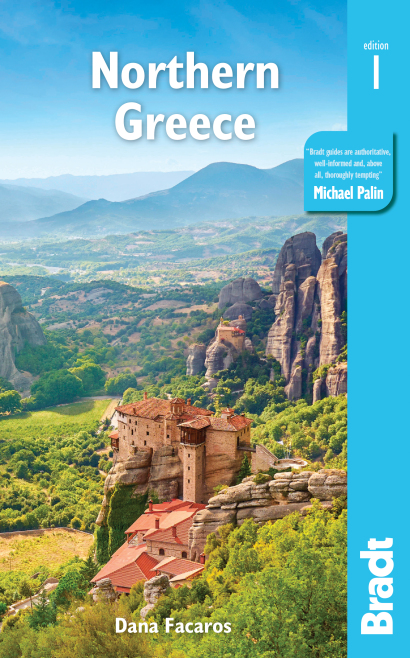
Food and drink in Northern Greece
Epicurus may have lent his name to gourmets, but in reality his philosophy advocated maximising simple pleasures: rather than continually seeking novelty, Epicurus suggests making bread and olives taste sublime by fasting for a couple of days. In that way Greeks have long been epicureans: centuries of occupation and poverty taught them to relish food more than cuisine. But what has changed in the 21st century is that cuisine has inescapably arrived.
Breakfast, lunch and dinner
In resort areas, hotels and restaurants offer familiar breakfasts, lunches and dinners at familiar western European hours. One recent incentive among hotels is to win the coveted ‘Greek breakfast’ label, meaning they feature homemade flaky pies, breads, cakes, yogurt and honey. Greeks themselves get by with something light, supplemented mid-morning with a cheese pie or other snack. You can eat lunch at noon, but if you want to do as the Greeks do in summer, get your sightseeing business done by 14.00, then indulge in a long lunch with wine, followed by a nap to avoid the afternoon heat. Get up at 18.00 for a swim and an ice cream, followed by the vólta, the evening stroll and a drink. Greeks rarely eat before 22.00 and meals can go on into the small hours. Children are welcome (they too nap in the afternoon).
An average taverna meal – if you don’t order a major fish – usually costs around €20–30 with carafes of house wine. Bread will come whether or not you’ve ordered it, with a small service charge added. Prices at sophisticated, blatantly touristy, places with views can be much higher. In many resorts, waiters are paid a cut of the profits (which is why some obnoxiously tout for custom); tipping is discretionary but appreciated. A law designed to catch tax evaders requires that you take a receipt (apóthixi) 150m from the door; the police make periodic checks.
Classic Greek dishes
Greek cooking methods tend to be simple, with strong Turkish and Italian influences. One criticism levelled at Greek food is that it’s served tepid. Once you get used to it, you realise that many dishes are actually tastier once they’re left to cool in their own juices, especially in the summer. Many dishes need no introduction (but always taste better in Greece) – taramasalata (taramá), moussaka, gýros, stuffed vine leaves, Greek salads with feta, Greek yogurt and baklava have achieved the universality of lasagne and chicken tikka. A classic meal begins with little plates (mezédes) shared around the table: olives, tzatziki (cucumbers and yogurt), prawns, tirosaláta (feta cheese dip), tirokafterí (a pungent cheese dip), salted fish, roasted peppers, cheese or spinach pies (spanakópita), a salad, or saganáki (fried cheese sprinkled with lemon).
Main courses could be a gorgeously fresh omelette, or an oven dish or stew (called ‘ready dishes’ as they’re already prepared) such as lamb kleftikó (slow cooked with wine and vegetables), stifádo (spiced beef stew with baby onions), kokinistó (beef cooked with tomatoes and a hint of cinnamon), lamb or veal youvétsi (baked with tomatoes and tear-drop pasta), or kréas stin stámna (lamb or beef baked in a clay dish). Meats grilled to order come under the heading tis óras (‘the on times’): pork chops (brizóles), lamb cutlets sold by the kilo (paidákia), kebabs (souvláki), minced steak (biftéki), meatballs (keftédes or sousoukákia), sausage (lukániko) or chicken (koutópoulo).
Seafood is fresh and delicious, but expensive, although you can usually find cheapies like whitebait (marídes), sardines (sardéle), cuttlefish (soupiá) and squid rings (kalamári). Baked or fried bakaliáros (fresh Mediterranean cod) is always a treat and shouldn’t break the bank. Some places serve fish soups – psarósoupa (with potatoes and carrots) or kakaviá (Greek bouillabaisse), which are meals in themselves with hunks of fresh bread and a bottle of wine. Prawns (garídes) are lightly fried or baked with garlic, tomatoes and feta (garídes saganáki), a popular dish from the 1960s as is spaghetti with spiny lobster (astakomakaronáda). Often each type of fish has its own price, priced by weight; you may be asked to pick out the one you want and the owner puts it on the scale in front of you. Greeks make lovely sweets, puddings, cakes and ice creams, but tend to eat them in the late afternoon after their siesta, although desserts are now common in restaurants as well.
Specialities of Northern Greece
Dining out is one of the joys of northern Greece, with its recipes brought over with refugees in 1923 from Asia Minor and the Black Sea; Th essaloníki has long been one of the food capitals of Greece, although it’s probably best known for its bougátsa, fl aky pies introduced aft er 1923. Th e handmade pastry is left to prove until doubled in size, then tossed in the air three to seven times until it becomes thin, filled with creamy custard or soft cheese (but you can also fi nd spinach or minced meat), then baked and sold in bougatsaría. Every town in the north has at least one.
You’ll find old Ottoman-era dishes such as hunkár begendí (stewed lamb with aubergine purée), Th racian kavourmás (lean beef or pork cooked slowly in broth and fat, with spices, then preserved in a jar or formed into a log, sliced and eaten as a mezé or with potatoes), Izmir-style meatballs in a spicy tomato sauce (soutzoukákia) and pastoúrma (Anatolian-style pastrami, made from beef, lamb or camel; Sary in Dráma is famous for it). You may even see mantza, a traditional Pomok dish of veal or pork combined with vegetables or pasta. Th e sweets of the north, many brought over by Anatolian pastry chefs – Xánthi’s karióka, Véria’s revaní, Komotiní’s soutzouk loukoum and Sérres’s akanés – are renowned.
Epirus is a land of cheeses and pies (egg pie, pastry pie, milk pie), feta cheese and anthótyro (fresh whey cheese made from sheep or goat’s milk) pie, pies fi lled with lamb and trahanás (a dried pebbly mixture of grain and yogurt or fermented milk, an ancient way of preserving milk, oft en made into soups). Métsovo’s smoked cheese is oft en used to make bougiourdí (cheese baked with tomatoes and peppers); also look out for batzossaganáki (fried local cheese). But wherever you go you’ll find surprises: Pelion’s chestnuts, little apples, and wild herbs; buffalo milk cheeses and meats from Lake Kerkíni; red saffron from Krókos, honey from Chalkidikí, cherries from Édessa, beans from Préspa, red and green peppers from Flórina, wild mushrooms from everywhere in the mountains, and even truffles (troúfes) around Meteora and Grevená. Every gýros counter has a shaker of boúkovo, ‘the chilli flakes of the Balkans’ similar to hot paprika, which is sprinkled on soups, stews, beans, roast or grilled meats.
Travel and visas in Northern Greece
Citizens of EU member states and holders of passports from some 50 nations do not need a visa for stays of up to 90 days. These include Australia, Canada, Hong Kong, Israel, Japan, Malaysia, Mexico, New Zealand, South Korea, Singapore, Switzerland and the USA.
After the UK leaves the EU, documentation requirements for UK citizens may change. Check before travelling. All EU members can stay in Greece indefinitely. Most non-EU visitors (including those from the USA, Canada, Australia and New Zealand) can stay for a maximum of 90 days in Greece and other Schengenzone countries (most of the EU, but not the UK). Your passport may not be checked if arriving from another EU country, but you need to have it stamped to avoid problems leaving the country. If you want to stay longer, it is best to contact a Greek embassy before your trip.
Getting there and away
International airports handy for northern Greece include Athens, Thessaloníki, Vólos, Skiáthos, Kavála and Préveza. Direct year-round flights to Athens International Airport ( aia.gr ) leave from London, and, less frequently, Manchester (3½–4hrs). EasyJet ( easyjet.com ) is often cheapest. Other airlines that currently serve these routes are British Airways (w britishairways. com), Aegean (w en.aegeanair.com) and Olympic Air ( olympicair.com ) – compare dates and prices with w skyscanner.net. Athens is also accessible by air from most of the rest of the world (check w skyscanner.net).
Getting to and from Athens airport
For details on getting to central Athens, see page 363. By car Athens airport is 30km southeast of the city and has the usual range of car hire companies. From the airport, getting to northern Greece is simple: follow the toll road towards Athens, and turn off right on to the National Road (E75) towards Vólos (3½hrs), Thessaloníki (5hrs) or Ioánnina (4½hrs).
The suburban (Proastiakós) trains run once an hour between 06.09 and 22.09 from the airport to Lárissis station in Athens. For suburban and mainline train information and to purchase tickets online, visit trainose.gr ; alternatively, call 14511 for information. The Intercity train to Thessaloníki takes 4 hours, with fares from €45 one way; tickets on the slower overnight train start at €25.
The X93 bus ( athensairportbus.com ) from just outside the airport building runs to KTEL Stathmós Kifissoú, the Athens bus terminal, in about 1 hour. Buses are frequent and run through the night (although late at night you’re better off waiting at the airport rather than in the bus terminal). There are frequent buses from Athens to all the main cities in northern Greece, all run under the auspices of KTEL, the national bus company, but locally managed by each municipal region. The main ticket hall has different ticket desks organised by destination. Once you have your ticket, be sure to ask for the number of the bay from which your bus will depart. Athens to Alexandroúpolis is the longest single bus ride you might take (just over 10hrs; from €53, with toilet & coffee stops every few hours).
Airport taxis to the city centre cost a flat rate of €38 from 05.00 until midnight, and €54 from midnight until 05.00.
From the UK, take the Eurostar ( eurostar.com ) across the Channel and connect with a fast train; if you’re lucky, a journey from London St Pancras to Ancona or Venice can take as little as 14 hours but average at 21 hours, changing in Paris (Gare du Nord to Gare de Lyon). See seat61.com for options – although it’s almost impossible to find a train cheaper than a flight, especially after adding on the ferry crossings to Greece (see below). Or you can go overland via Paris (change to the Gare de l’Est), to Thessaloníki, calling at Munich, Belgrade and Sofia, which will take at least 55 hours on the rails with suggested overnight stops in Munich and Sofia.
If you are planning to be in Greece for any length of time, it may make sense to bring your car over from the UK. You are allowed to keep it in the country for six months (keep hold of your ferry ticket as proof). Although this is rarely checked, if you are caught out (for instance if you have an accident or are caught speeding) your car will be immediately impounded and the fine to release it can be more than the car is worth. The quickest route is by way of Calais, through France and Switzerland, then on to Italy, where you catch a ferry (see below), though this entails quite heavy road tolls in France and Italy (Calais to Ancona €39), and also the Swiss road tax (CHF40).
If you sail from Venice – a magical place to sail out of or into as the ferry seems to go through the old city – then the drive can be done in 13 hours. The sea crossing takes just over a day, meaning you could do the whole trip over a long two days (sleeping on the ferry to Igoumenítsa). If you stop overnight on the way to or from Italy at a campsite or budget hotel, and travel deck class on the ferry, it will cost around €500 per couple one way. If you are going to be in Greece for a month or more this can compare favourably with the cost of a flight and car hire (and you can carry a lot more stuff). If your visit is going to be an extended one, to avoid difficulties when you leave, you can also ask to have your car stamped in your passport on arrival. If you leave Greece without your car, you must have it withdrawn from circulation by a customs authority.
Ferries to Ferries to Greece from Italy nearly always run overnight. The main port for northern Greece is Igoumenítsa, which can be reached from Venice (25–29hrs, from €440 return with a car), Ancona (16hrs, from €430 return), Bari (10hrs, from €230 return) and Brindisi (7.5–10hrs, from €216 return).
There are various forms of accommodation on board: the cheapest, ‘deck’ class, does not mean you are confined outside. You are allowed in the communal areas, and in the low season will often find a spot to stretch out and sleep. In high season you may have to sleep out on the deck, although there are usually plenty of sheltered areas (a sleeping mat or pop-up tent is an advantage).
When to visit Northern Greece
Any time is a good time to see some part of northern Greece. Winter offers a lively city scene in Thessaloníki, a chance to play in the snow in the many ski resorts, or see archaeological sites in lonely splendour (a loneliness punctuated only by a few Japanese tour buses, the only consistent winter travellers to Greece). Spring is a time for wildflowers, pleasant temperatures and for participating in Greek Easter, the biggest holiday on the calendar. May and June are generally calm and warm (beach hotels stay open from Easter or May into September or October) and great for hiking or touring by car. July and August are the most popular months for sun lovers and people with children – the busiest, hottest and priciest time. The coasts are cooled by winds, but inland it can be stifling. The weather generally stays fine into mid-October, with the bonus of brilliant colour in the mountain forests. The wet season begins at the end of October when it can rain ‘tables and chairs’, as the Greeks say.
Northern Greece has a Mediterranean climate near the coasts and a continental climate at higher altitudes, especially on Olympus and in the Rhodope and Pindus mountains, where heavy snow is common in winter. Occasionally, in winter, Macedonia is buffeted by the mighty Vardaris wind, that descends down the Vardar valley from North Macedonia, then meets the high mountains of Greece, where it picks up steam and swoops down to Thessaloníki. Although there are occasional thunder showers, spring is lovely everywhere, especially in the months of May and June. Summers can be very hot, especially on the plain of Thessaly where 40°C is not uncommon, but the Aegean coasts and islands are cooled by the meltémi wind from the north, which can occasionally wreak havoc with ferry schedules. The rainiest season is in autumn, especially after mid-October, but it’s also when the mountain woodlands burst into colour.
What to see and do in Northern Greece
Birthplace of Aristotle and northern Greece’s favourite playground, Chalkidikí (‘Chalcidice’ in many history books, or ‘Halkidikí’ to keep holiday-makers from saying ‘chalk’) resembles a giant bear paw, with a history and spirit as distinctive as its geography. Along the three dangling claws, pines back sandy beaches lapped by a turquoise sea, planted with more Blue Flags per square metre than any part of Greece – 71 at the current count. This is your best chance in northern Greece to drop a serious chunk of change at a luxury hotel or gourmet restaurant (nearly all within the resorts) but there are also more affordable hotels, apartments, studios galore – often booked by package holiday firms – campsites and humble tavernas.
The closer to Thessaloníki and its airport, the busier the shore. The westernmost peninsula, Kassándra, is the summer resort for half of Thessaloníki. The middle peninsula, Sithonía, still has wild patches; while the eastern peninsula, Akté, is the way station to another world: Mount Athos, the last theocracy in the West, which after decades of decline is currently enjoying a boom, thanks in large part to Russian and other Eastern European Orthodox faithful, many of whom combine a family beach holiday with a visit, by dad, to Mount Athos. If Chalkidikí’s ‘claws’ get most of the attention, the inland is something of a bestkept secret, with farmland, mountains, gold mines, dense pine woods, and olive groves that produce a whopping percentage of Greece’s table olives, and literally tonnes of honey, the best made from wild thyme flowers.
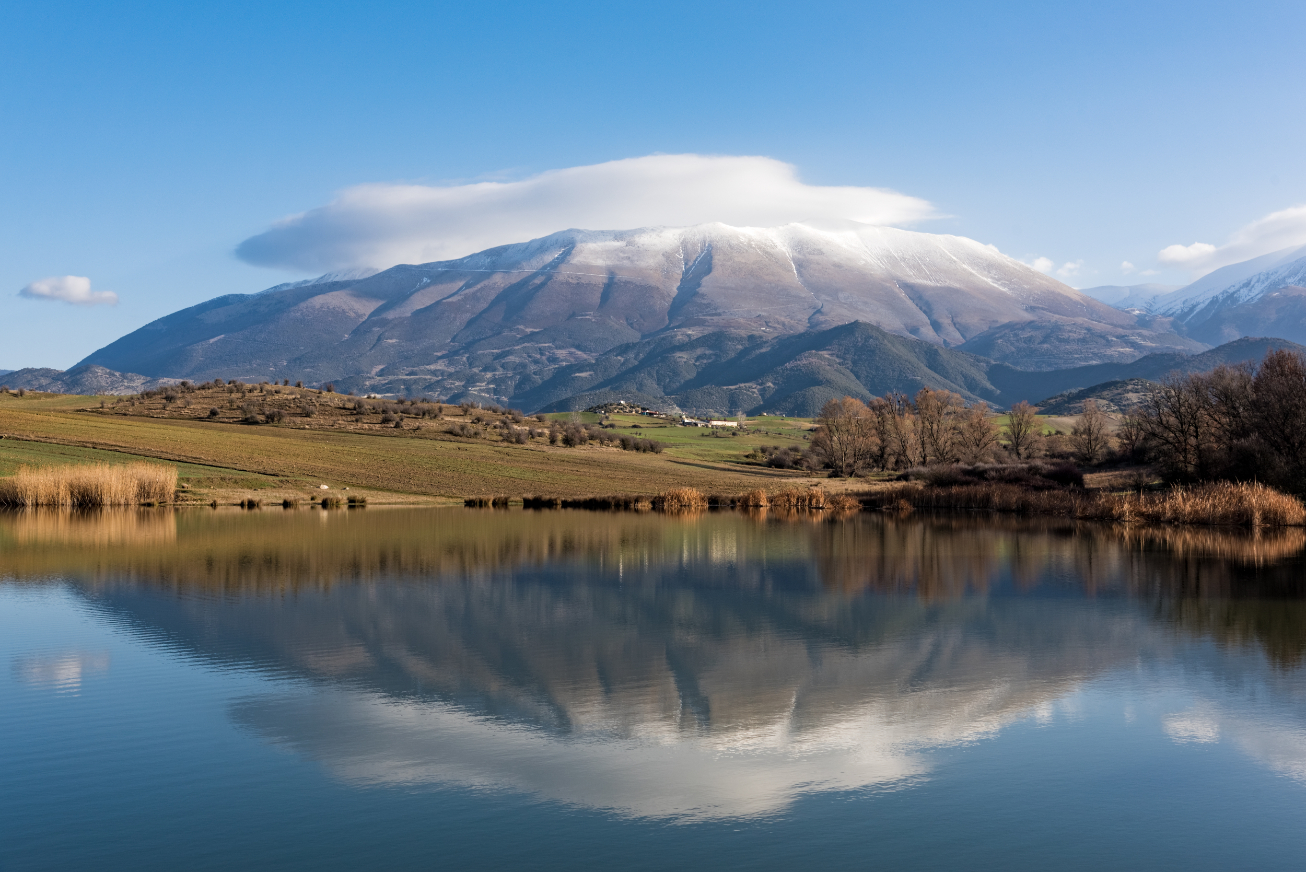
Mount Olympus National Park
Olympus (Όλυμπος) originally meant ‘mountain’, and scattered around the Mediterranean some 20 other mountains bear the same name. But this, the highest peak on the Balkan peninsula at 2,918m, its summits wreathed in cloud, its precipices echoing with thunder, was always the Olympus, the abode of Zeus and his argumentative clan. In Homer, the palaces of the gods lay in the mountain’s ‘mysterious folds’.
At the tallest of its 52 peaks, in ancient times known as the Pantheon (now more prosaically called Mýtikas, ‘nose’), where the sun always shone and the air was too thin for mortals to breathe, the deities would gather to hear Zeus arbitrate on his Throne, the sheer armchair (and greatest climbing challenge on the mountain) today better known as Stefáni (2,902m). Olympus was one of the last famous European mountains to be climbed (in 1913) – not because of Zeus’s thunderbolts, but because of the armatoloí (irregular militia) and kidnapping klephts who haunted it until Macedonia became part of Greece in 1912.
In 1938, high Olympus and its deeply wooded eastern slopes were designated Greece’s first National Park; in 1981, UNESCO included it in the list of World Biosphere Reserves. It’s famous for its birds – some 156 species have been counted here, and some 1,700 Mediterranean and Central European plants have been found (25% of all the flora in Greece, including the rare Bosnian pine), and of the rare little plants above the tree line 23 species are unique to Olympus. The lions that attacked the camels in Xerxes’ army are gone, but Zeus’s golden eagles still float overhead, and wolves, jackals, wild cats and deer roam in the woodlands. Litóchoro (Λιτόχωρο) on the east slopes, the classic gateway to Olympus, is in a superb setting, just 5km up from the coast.
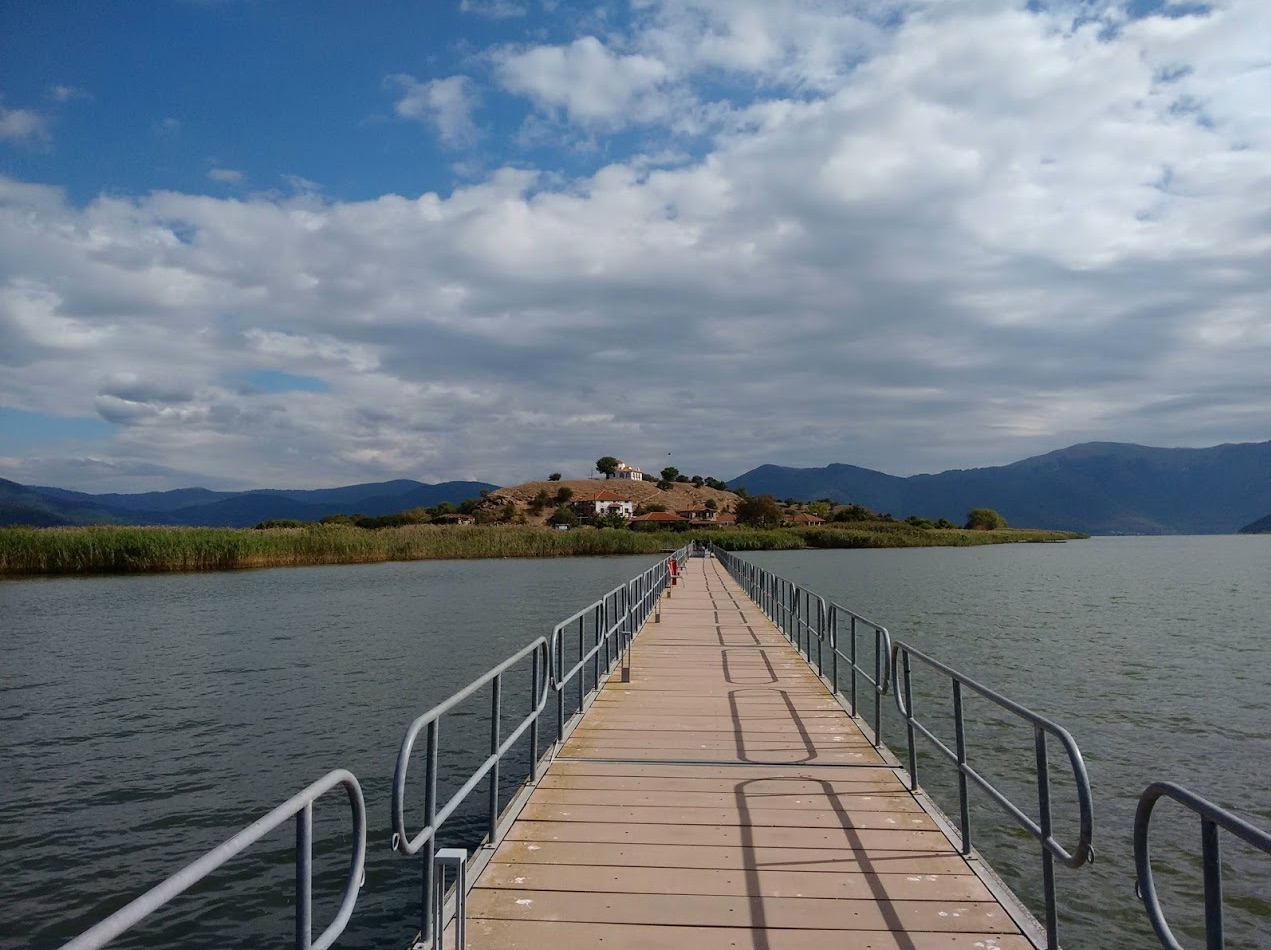
Prespa National Park
Photographers love Préspa. To cross the pass above Flórina is to descend into ‘a giant and totally secluded cradle’ of magical remoteness and stillness. Austere mountains surround two limpid sheets of water: Great or Megáli Préspa, the largest lake in the Balkans, the liquid frontier between Greece, Albania and North Macedonia; and Míkro Préspa lake, all Greek but for 2% in Albania. Míkro Préspa is home to the world’s largest colony of Dalmatian pelicans – the world’s largest freshwater bird – with more than 1,400 pairs, as well as 260 other bird species and 1,500 different plants. Although separated by a narrow spit of land, the lakes have diverse fish populations.
While wildlife flourishes in blissful ignorance of borders, the humans here have led complicated lives. At the end of the 9th century ad, Préspa belonged to the Western Bulgarian Empire. When it was dissolved in ad971, the son of the last emperor, Tsar Samuel, took refuge here, reorganised and made Préspa his base to seize much of Greece, until Emperor Basil II reconquered all the lost Byzantine territory (1018) and put an end to Préspa’s day in the sun. During the Frankish and Turkish periods, the utter remoteness of the place attracted monks and hermits.
Life was never easy for the rest of the population, and after the Civil War it lost nine out of ten inhabitants into Eastern Bloc countries or to Australia, to the extent that the government offered free empty houses and land to Vlachs just to have warm bodies holding down the frontier.
Although the three governments on the borders weren’t exactly chums, it came as a happy surprise when their leaders met in October 2000 to designate Préspa an international park (a Balkan first) to preserve its fragile environment – the result of a decade of hard work by Geórgios Kastadorákis and Myrsíni Malakoú, founders in 1990 of the award-winning Society for the Protection of Préspa.
Today the SPP is aiming to strike a delicate balance between the needs of humans and nature: encouraging sustainable organic farming, sound fishing practices, modest tourism (converting traditional buildings into guesthouses) and a revival of cattle rearing – Préspa’s unique breed of dwarf cows are needed to eat the reeds, to prevent them from taking over the lakes, while leaving sufficient cover for the pelicans to nest. So far it all seems to be working: bird numbers are on the increase, and new jobs promoting environmental tourism are bringing young people into the area. In June 2018, Préspa made international news when prime ministers Aléxis Tsípras and Zoran Zaev signed the Préspa Agreement in North Macedonia’s name. Part of the deal, much to the delight of many locals, will (someday) be the reopening of the border post north of Ag Germanós, closed more than 50 years ago by Greece’s military dictatorship.
The Sporades
The Sporádes, the ‘scattered’ islands off the Pelion’s Aegean shore, are as lovely as the peninsula itself, but because they are poor in antiquities or names that anyone remembers from school history, they were among the last Greek islands to be ‘discovered’. Then an airport was built on Skiáthos: word spread, holiday photos were passed around showing beaches and villages that fit many people’s image of a holiday paradise, and the rest is history. Three islands float temptingly a short hop off the coast: Babylonian Skiáthos, closest to the Pelion, with the most beautiful beaches; dignified Skópelos, which has kept much of its Greek character; and Alónissos, gateway to Greece’s first national marine park.
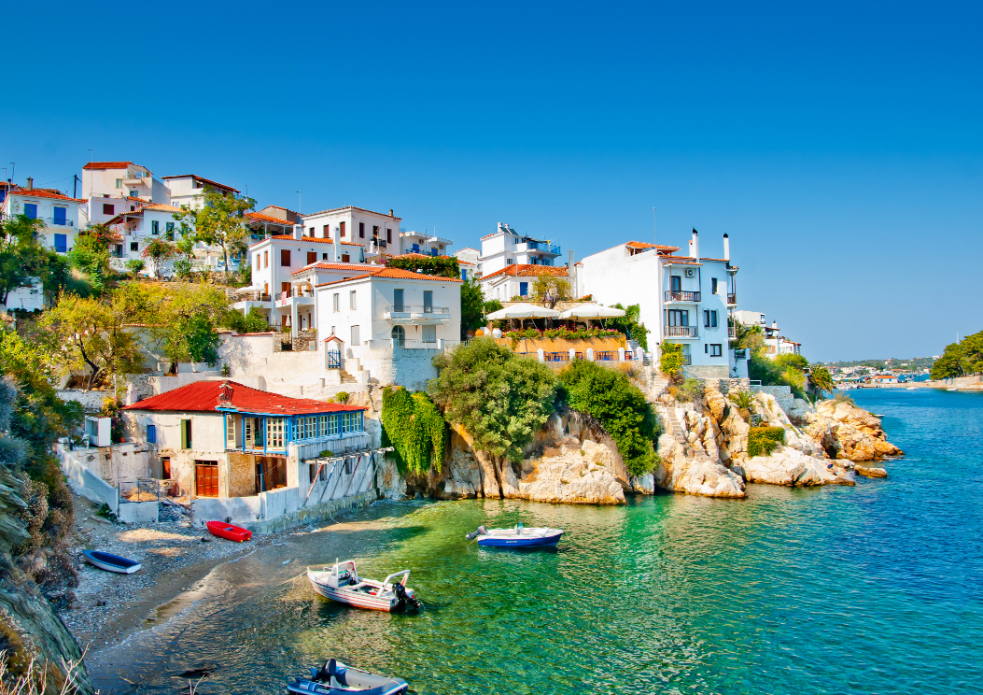
One of the most popular destinations in the country, racy, cosmopolitan Skiáthos (Σκιάθος) is not for the shy teetotaller or anyone looking for a slice of ‘authentic’ Greece. An isolated peasant community in the early 1970s, Skiáthos catapulted faster than any other island into big-money tourism, so fast that corruption and violence were long a factor in local life. Away from the main road, it is as stunning as ever, rimmed with 62 gorgeous beaches. Add to this a host of lively bars and restaurants and you have the ingredients for a heady cocktail that attracts a fun-seeking crowd.
Skópelos
Where rambunctious Skiáthos has given its all to tourism, Skópelos (Σκόπελος), with its more modest pebbly beaches, remained aloof during the 1960s and 70s, the decades of slapdash cash-in-quick building. Yet, not only has the island kept its integrity and serenity – the lure for a new wave of upmarket tourists, along with its star turn in the 2008 film Mamma Mia! – but it’s also exceptionally beautiful, with dramatic scenery, dense pine forests, plum orchards and two truly pretty towns, Skópelos and Glóssa. It is a lovely island for long walks, especially outside of the heatstroke months of July and August.
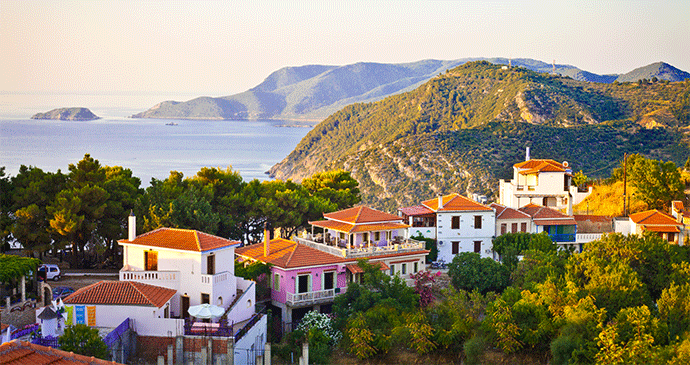
Alónissos
Long, skinny Alónissos (Αλóννισος) is queen of her own little archipelago, but she’s a late bloomer when it comes to tourism. Few islands have suffered so many setbacks: in 1953 disease killed her old grapefruit orchards and vineyards; in 1965, a devastating earthquake hit her only town, Chóra, and politicians tried to force everyone to move to the port, Patitíri. Despite the troubles Alónissos rebuilt itself, and it remains a slice of friendly, laidback ‘Old Greece’ that is increasingly popular with nature tourists. In 1992, after the urging of environmental groups across Europe, Greece’s first National Marine Park was set up in and around Alónissos and its archipelago to protect the endangered Mediterranean monk seal, resulting in some of the cleanest seas in the Aegean, home to some 300 species of fish and coral; dolphins and whales are often spotted. The park, the largest marine park in Europe, covering some 2,260km 2 , is accessible except for the exclusion zone around Pipéri island, but no camping or fires are allowed.
About 90% of Alónissos is accessible only on foot, crossed by trails offering stunning views and glimpses of the rare Eleonora’s falcon and Audouin’s gull. Holiday-makers and yacht flotillas have arrived, but not overwhelmingly so. Right now the island is very popular with Italians; others come for courses and seminars at the island’s International Academy of Classical Homeopath.
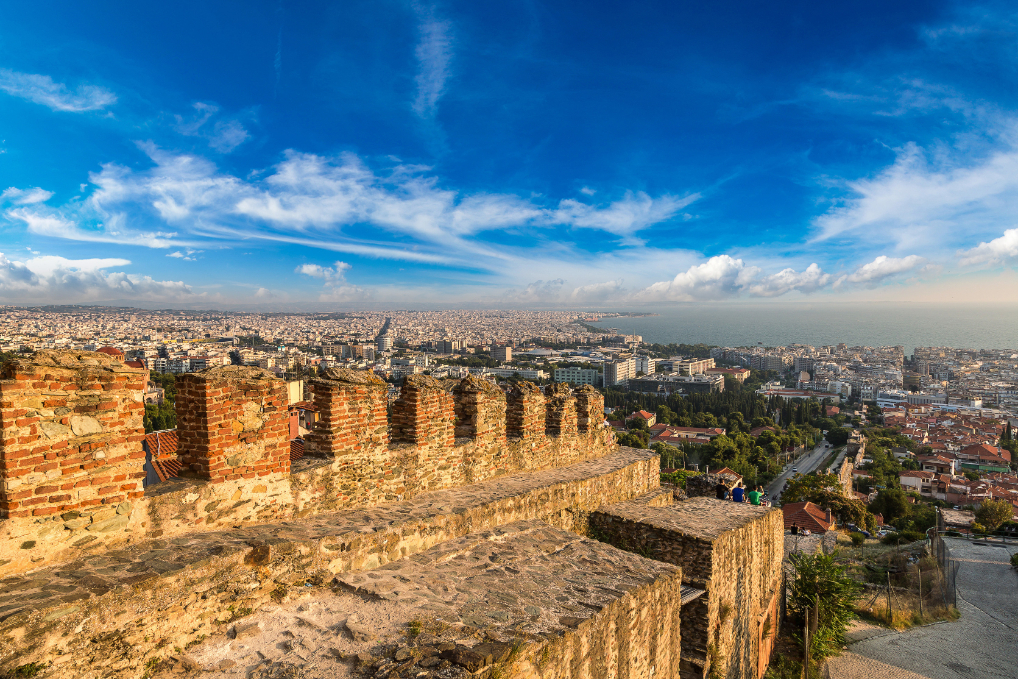
Thessanoliki
Sheltered at the top of the Thermaic Gulf, Thessaloníki (or Salonica), with a population of over a million in the metropolitan area, is the second city of Greece. But you’ll rarely hear Greeks indulge in the banter that often characterises the relations of first and second cities, like Barcelona and Madrid, or Rome and Milan; in fact, many Athenians readily admit that Thessaloníki is a much nicer place to live, where life unwinds at a less hectic pace (its motto is χαλαρά (chalará) or taking it easy).
Many of the 150,000 university students who come here to study never leave, adding to its vibrant cultural life, its great bar and restaurant and festival scene, and sizzling nightlife. Thessaloníki boomed in the Middle Ages while Athens snoozed, and its most compelling monuments are Byzantine: 22 churches still stand, several of which – the Rotonda, Ósios David, Ag Dimítrios, the Panagía Acheiropoiétos, Ag Apostóli and Ag Sofía – are UNESCO World Heritage sites.
The upper city, the main Muslim district in Ottoman times, is cocooned in towering late Roman walls, while the lower city stands on tiers like a choir singing to the sea. Thessaloníki has always been cosmopolitan: it’s the only European city to boast an urban population for an uninterrupted 2,500 years, one that has known great joy and great darkness, too.
Thessaloníki is one of the few Greek cities to know its birthday – 315bc, when King Cassander founded a new city named after his wife (see box, page 54). To populate his foundation, Cassander used carrots and sticks to relocate the inhabitants of 26 older towns in the area, the largest of which, Therme, gave its name to the Thermaïkós Kólpos, the Thermaic Gulf.
Thessaloníki only really blossomed after the Romans conquered Macedon in 146bc, and blazed the Via Egnatía – the extension of the Via Appia and first Roman road outside of Italy, from Albania to Byzantium – and developed Thessaloníki into a commercial and military port. Cicero was exiled here in 58bc, and in ad42, after the Battle of Philippi, the city was declared a free city by the victors, Antony and Octavian.
St Paul came in AD50, and later addressed two epistles to the church he founded. In the late 3rd century ad, as the vortex of the empire moved away from Rome, Emperor Galerius made Thessaloníki his capital. Although the city was disappointed when Constantine rejected it in favour of the puny town of Byzantium for his ‘new Rome’, Constantinople, he did finance a new artificial port as compensation. Theodosius I the Great (ad379–395) often made Thessaloníki his base and built its mighty walls; in ad380, when he thought he was dying, he converted to Christianity and issued the Edict of Thessaloníki, supressing paganism and banning the Olympics.
By Justinian’s time, Th essaloníki was the symvassilévousa (co-reigning city) of the Byzantine Empire, much visited for its trade fair and the relics of its patron saint, Dimítrios. It remained a Greek outpost even aft er the Avars and Slavs occupied the rest of Macedonia; in the 9th century ad it became the cultural centre for the entire Balkan region aft er two Th essalonian brothers, Methodius and Cyril, converted the Slavs to Christianity and created an alphabet for their language. Its prosperity attracted unwelcome visitors, too: among them the Saracens, who captured and sold off 22,000 inhabitants as slaves in ad904. Aft er the Fourth Crusade in 1204, the city briefl y became the capital of the Latin kingdom of Thessaloníki before returning to the Greeks.
Related books
For more information, see our guide to Northern Greece :
Related articles
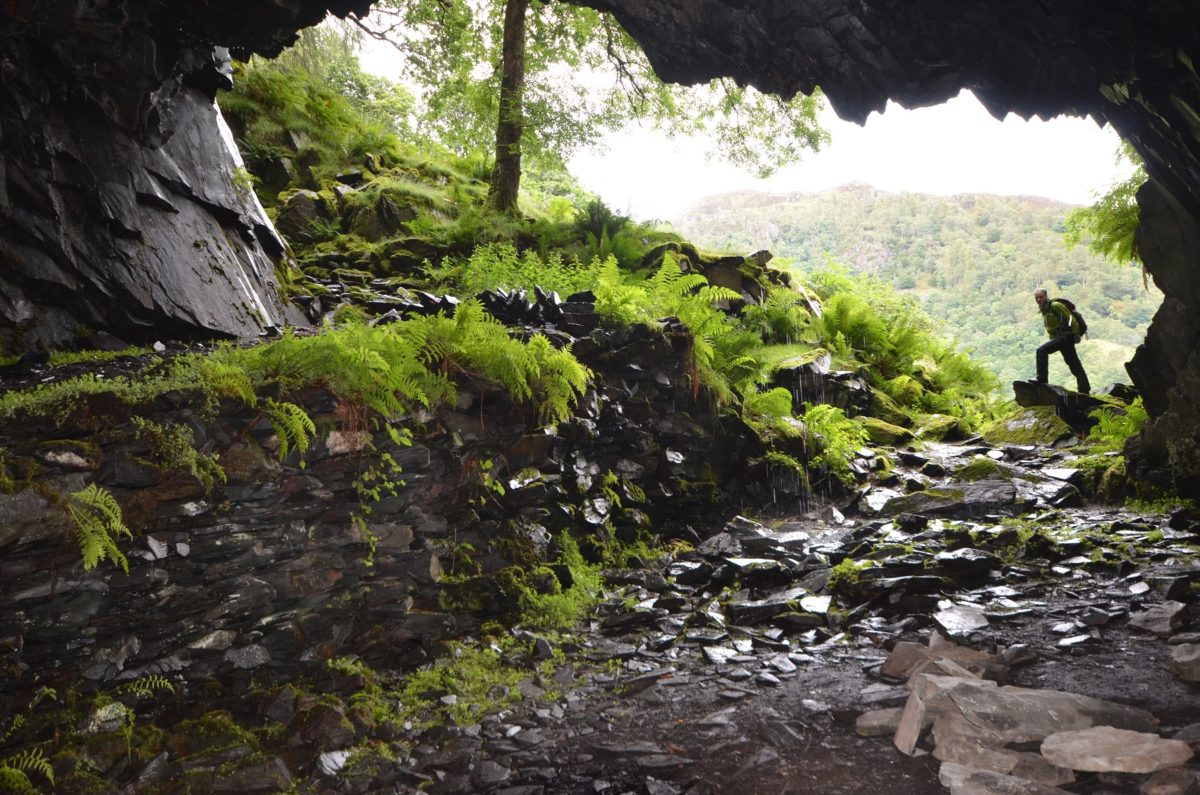
Going underground: the world’s best caves
This isn’t one for claustrophobes.
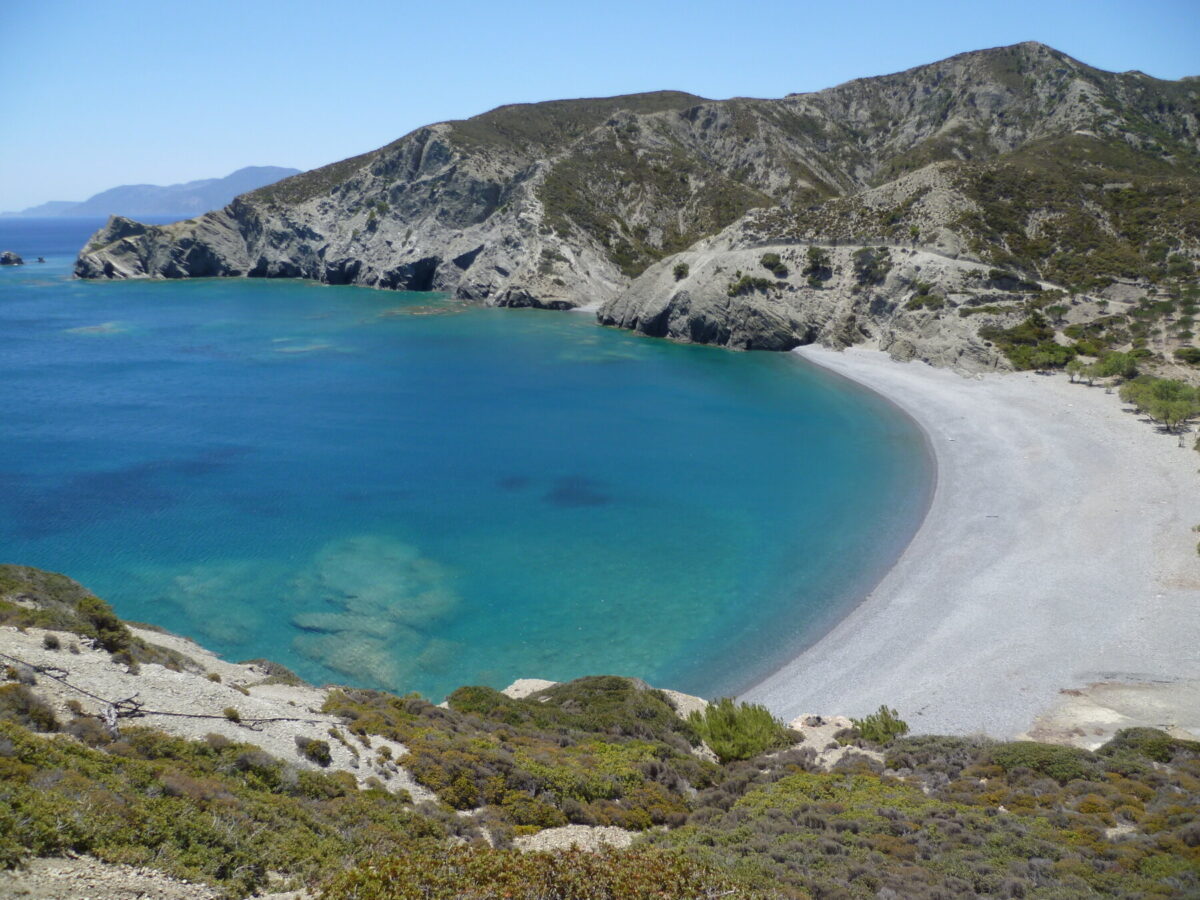
A Greek island summer: where it all began
In this extract from Taverna by the Sea, Jennifer Barclay recalls the beginning of her Grecian summer adventure that inspired the book.
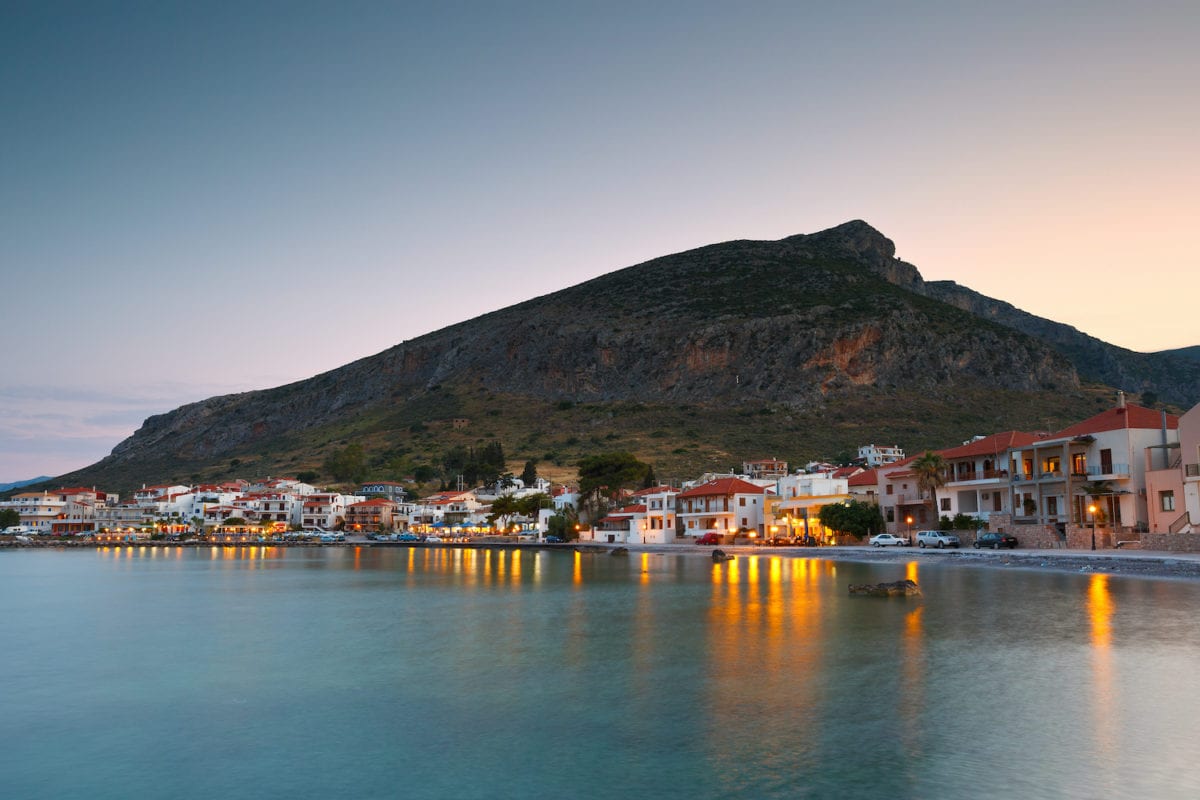
Picture-perfect: the prettiest towns in the Peloponnese
From little coastal fishing ports to high mountain settlements, the Peloponnese has it all.
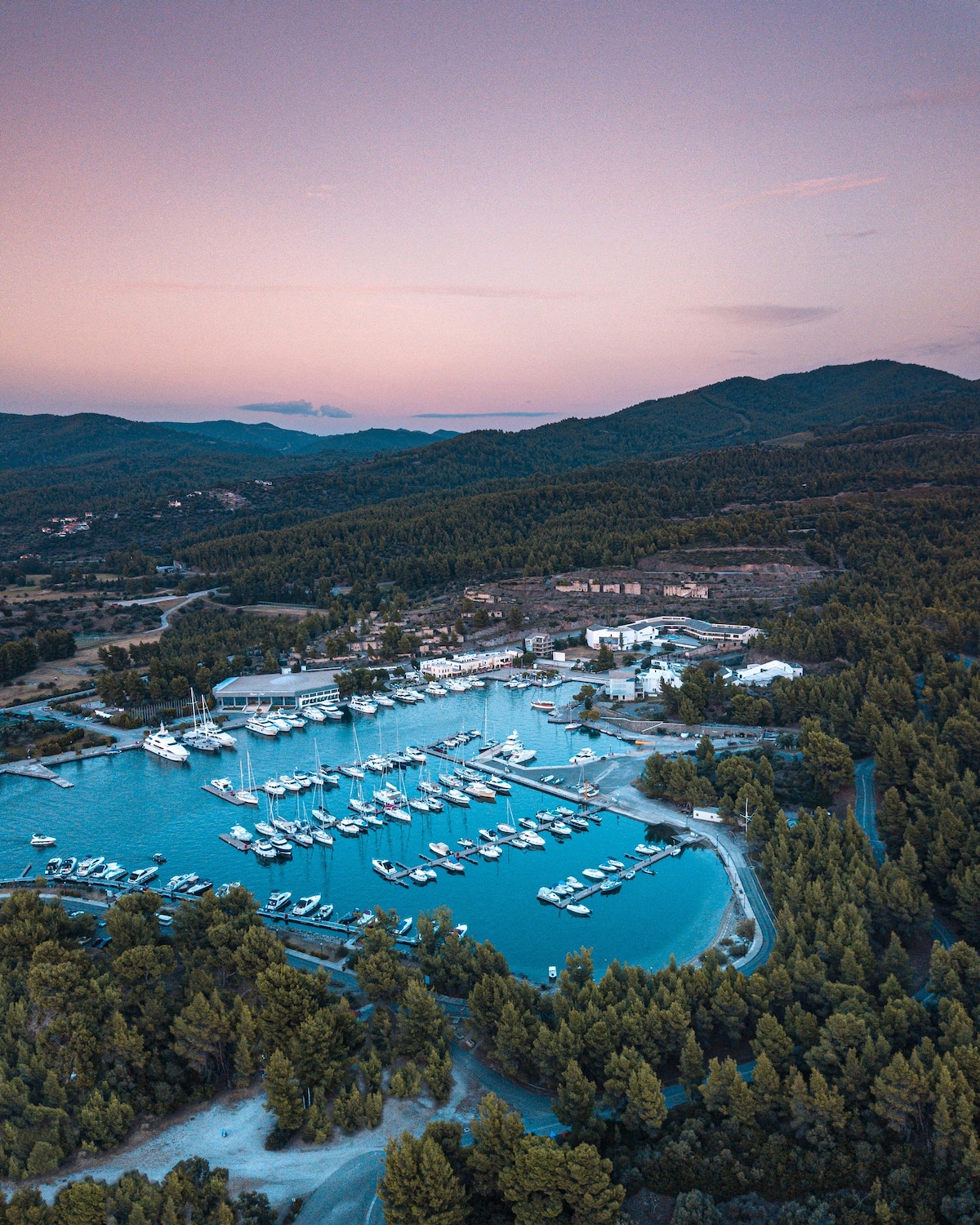
A Greek beach-filled paradise: welcome to Sithonia
‘Beware of Greeks bearing gifts’ may be the old saying, but I will take my chances and accept them gracefully.
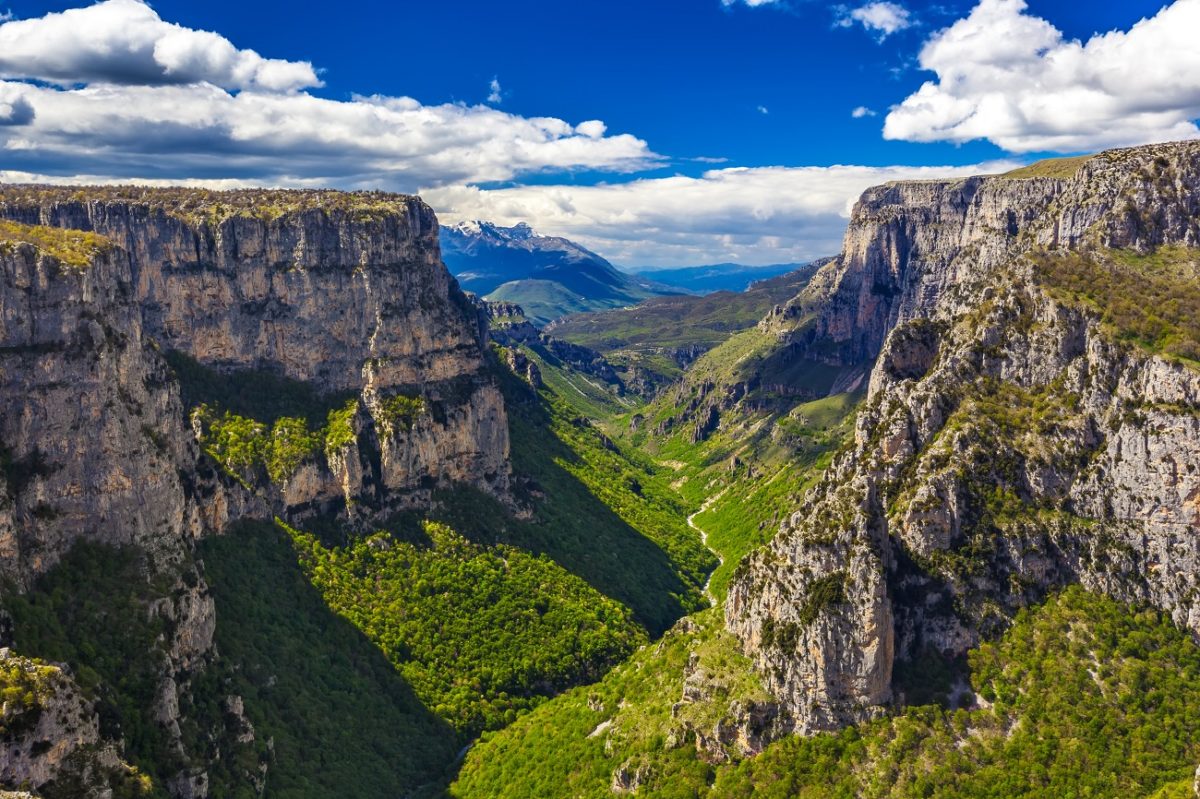
Waterfalls, saffron and long lost civilizations: discovering northern Greece
Greece is one of Europe’s most popular holiday destinations, yet the country’s north remains fairly off the beaten track.
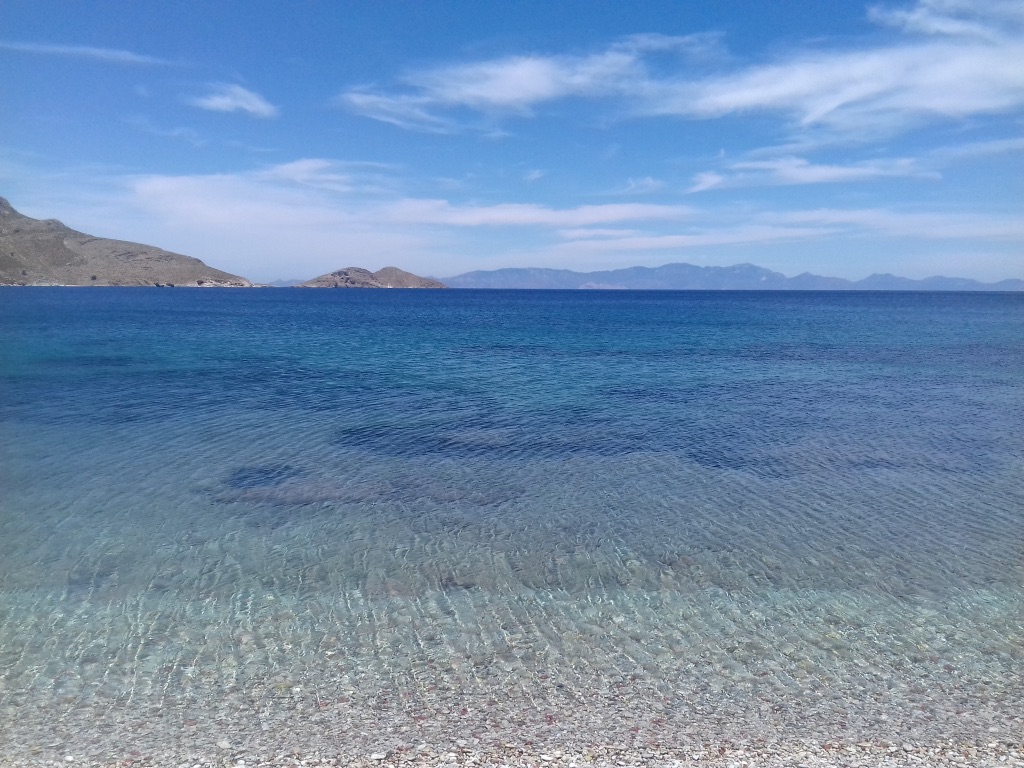
The Dodecanese dream: Q&A with Jennifer Barclay
Jennifer Barclay discusses the inspiration for her new book and why she moved to the Greek island of Tilos.
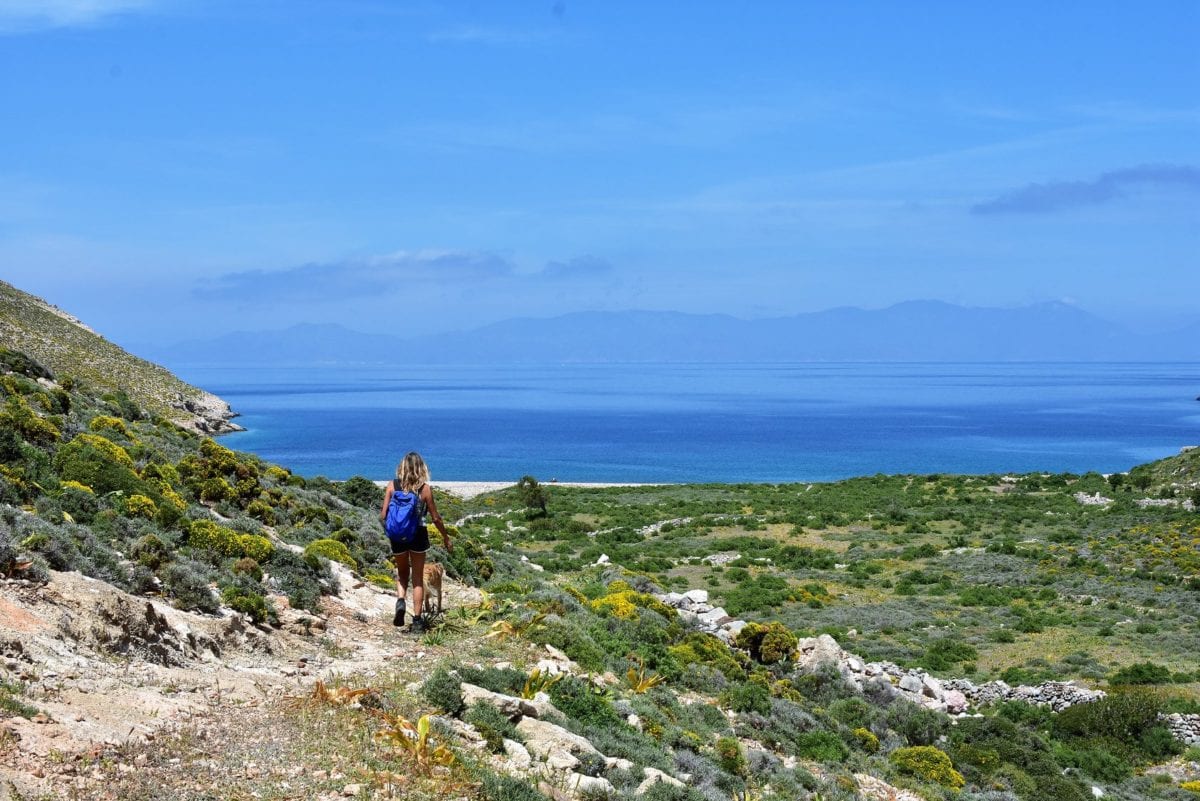
The joys (sometimes) of isolation: the deserted places of the Dodecanese
Jennifer Barclay reflects upon life in this remote Greek archipelago.

Northern Greece Tours & Trips
- Choose from 50+ Northern Greece tours
- 50+ verified reviews from TourRadar travelers
- 24/7 customer support
10 best Northern Greece tour packages
Compiled by

Melissa Northern Greece travel expert at TourRadar
Tour of Meteora & Albania from Corfu
Hiking zagori & meteora, self-drive discover ancient greece (northern greece & peloponnese), escape to thessaloniki, 3 days, from corfu to tirana; 3 unesco sites butrint, gjirokaster & berat, all about greece from athens to sofia thru delphi, meteora, thessaloniki, drama & kavala, complete greece and turkish tour, athens and northern greece with meteoras, corfu sailing tour, ionian discovery.
“I really enjoyed Albania and definetely will go again during summer, it was a great adventure.” Vjollca Dauti, traveled in March 2021
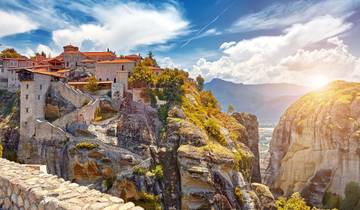
- Sightseeing
- Christmas & New Year
- Explore UNESCO-listed Meteora monasteries
- Relax on Ksamil's white sandy beaches
- Stroll through Gjirokaster's medieval bazar
“The landscapes and the hike was excellent aswell, easy to low-intermediate difficulty. Anybody could make them.” Constantin Boca, traveled in April 2023

- Hiking & Trekking
- Mountain Hikes
- Discover the beautiful Dragon Lake
- Descend to Vikos gorge
- Visit the famous and beautiful Meteora
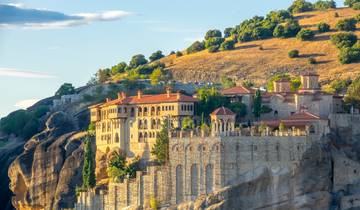
- Visit the grand Palamidi fortress in Nafplio
- Discover Delphi and the oracle of Apollo
- Walk through Olympia, birthplace of the Olympics
“Visits to sites very informative and interesting. The only inconvenience was the lack of efficient communication regarding the transfer arrangements.” Jason Claude Ganpat, traveled in August 2023
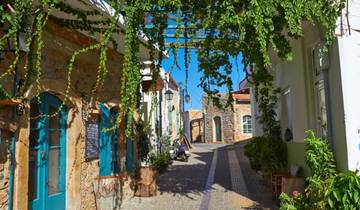
- In-depth Cultural
- Enjoy a leisurely afternoon in Thessaloniki
- Stroll along the lively Thessaloniki promenade
- Explore Thessaloniki's vibrant city center
“Amazing places, with a great history. Everything was great!” SonaDauti, traveled in March 2021
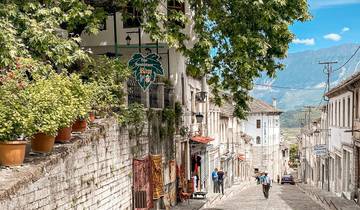
- Marvel at the Blue Eye's crystal-clear waters
- Stroll through Gjirokaster's medieval bazaar
- Explore Butrint's ancient ruins and nature
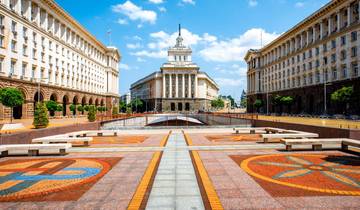
- Visit Kavala's old Castle and Imaret
- Tour Meteora's cliff-top monasteries
- Discover Delphi and the Temple of Apollo
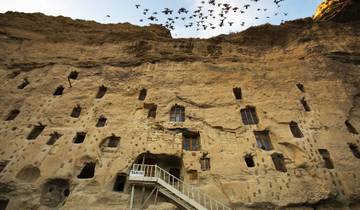
- Visit the ancient theatre of Epidaurus
- Explore the Meteora monasteries in Greece
- Discover the historic city of Rhodes
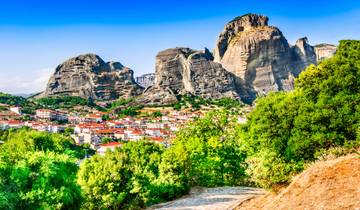
- Coach / Bus
- Enjoy dinner in the Plaka district
- Visit the UNESCO site Meteora
- Discover Delphi's ancient ruins
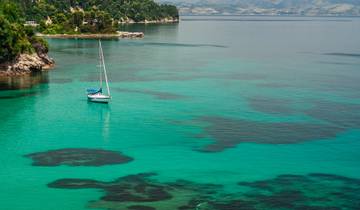
- Anchor in a picturesque fishing village
- Start your sailing trip from Corfu
- Explore hidden coves and beautiful beaches
“Great communication and information about where we were & where we were going as well as recommendations.” Heather Gatavasky, traveled in August 2023
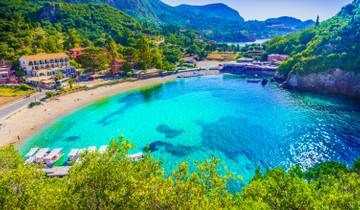
- Shop and sunbathe in vibrant Gaios
- Dive into Lakka's underwater scenes
- Swim and paddleboard in St Stefanos bay
More about Northern Greece
Discover TourRadar

- Vacation Packages
- Sightseeing Tours
- Special Offers
- Build your Trip!
- Car Rentals
You are here
5 days tour of northern greece.

Join this unique five day tour where you will be able to explore Northern Greece and its rich history, from the ancient city-states, to the Byzantine Empire and up until modern times. Starting from Athens, the capital of Greece, you will take the scenic route through the plains of Beotia until you reach Delphi, ' the navel of the world ', according to ancient Greeks. There you will see the ruins of the great Oracle, before reaching to final destination for the day, Kalambaka. Just a breath away from this cozy town of central Greece, you will find Meteora, an incredible spectacle or massive rock pillars rising up from a valley to form a truly rare sight. On top of the pillars, Byzantine monasteries have stood for centuries, adding yet another layer to the sense of wonder that fills any visitor. Time to head north to Macedonia, the land of Alexander the Great. You will establish your base at Thessaloniki, Greece's second largest city and a place that was second only to Istanbul during the Byzantine Empire. Remnants of that era are still about, in the form of architecture, art and archaeological sights. From Thessaloniki, excursions to nearby towns will give you a rare insight on a side of ancient Greek history most visitors don't get the chance to experience. Aristotle's School of Philosophy in Naoussa, the Royal Tomb of King Phillip II, the capital of Alexander the Great (Pella) and many more await you!
- Tour Includes
- Dates & Pricing
- Sightseeings
- Important Notes
- Photo Gallery
Select Saturdays from May to October (first class only). For a specific date, check availability here .
Only guests ages 5 through 12 are eligible for "children's rates"
First class half board: 865,00 € per adult 670,00 € per child Single supplement 205,00 €
- Day 1 - Athens to Kalambaka via Thebes, Levadia and Delphi We will pick you up from select spots in Athens (departure at approx 8:45) and drive through the fertile plain of the Beotia region, passing by the towns of Thebes and Levadia, as well as the picturesque village of Arachova, before you arrive in Delphi and visit the archaeological site, where the famous Oracle once stood. Afterwards, you will depart for Kalambaka, a small town in the heart of Greece, situated right at the foot of the astonishing rock complex of Meteora. Overnight: Kalambaka Meals: Breakfast, Dinner
- Day 2 - Kalambaka to Thessaloniki and a visit to Meteora Visit Meteora, a geological marvel of vast, rock pillars rising up from the valley to create a unique spectacle that is a testament to wonders of nature. On top of the pillars, stand Byzantine Monasteries, of immeasurable historical and religious importance. Depart from Kalambaka and continue your journey through the striking plains of Thessaly and the valley of Tempi, while admiring the gigantic figure of Mount Olympus, the highest mountain in Greece and home of the 12 Gods of Greek Mythology. Arrival at Thessaloniki, the second largest and the most vibrant city in Greece. Overnight: Thessaloniki Meals: Breakfast, Dinner
- Day 3 - Explore Thessaloniki's Byzantine Heritage In the morning, you will explore Thessaloniki, a center of civilization during the Byzantine Empire, second in population and prestige only to Constantinople. The spirit of that era is still evident in the architecture and style of the churches of the Christian world and for a deep dive in history the Museum of Byzantine Culture is a must. A walking tour will guide you to important sites like the Arch of Galerius, the ruins of the Palace and the famous Rotunda. The remainder of the day is at your leisure, with the city offering ample opportunities for entertainment. Overnight: Thessaloniki Meals: Breakfast, Dinner
- Day 4 - Explore Macedonia Depart in the morning for an excursion to the historical grounds of Macedonia. Your first stop will be the picturesque Edessa and its characteristic waterfalls, which have brought the town fame all over Greece. Then we proceed to Naoussa and to a site of exceptional beauty and importance, Aristotle's School, the great philosopher taught ‘ the doctrines of morals and politics ' to Alexander the Great and the Macedonian youth. Afterwards, we drive to Vergina (ancient Aigai), to visit the museum created in the Great Tumulus, covering the royal tombs of Macedonia. It is there that you will experience the astonishing findings in the tomb of King Phillip II, Alexander's father, one of the greatest discoveries of the 20 th century. Just a few miles away is Veria (Biblical Beroea) where you can visit Saint Paul's Bema, and then stroll through the old Jewish neighborhood and colourful market area. The return to Thessaloniki will be filled with musings about the multitude of unique destinations your day entailed. Overnight: Thessaloniki Meals: Breakfast, Dinner
- Day 5 - Visit Pella and Return to Athens In the morning, you will visit Pella, the capital of Alexander the Great's empire. You will admire the exquisite floor mosaics of the 4 th century B.C. villas, in situ as well as in the new Museum. Up next is the archaeological park of Dion (a sacred city of the Macedonians, at the foot of mountain Olympus). Afterwards we will start driving south, through Thessaly, Lamia, Thermopylae (where you will have the chance to see the Leonidas' monument) and Thebes, before arriving in Athens late in the afternoon. Overnight: - Meals: Breakfast
- Motor coach through Boetia & Thessaly plain, Tempi Valley & the towns of Thebes, Levadia, Arachova, Naoussa & Edessa.
- Visit Delphi archaeological site.
- Visit of Meteora monasteries (2 monasteries).
- Visit Archaeological Park of Dion.
- Visit Saint Paul Bema at Veria town.
- Visit Aristotle's School at Naoussa town.
- Visit Pella new museum (Pella is the capital of Alexander the Great).
- Visit Thessaloniki city's main attractions & monuments.
- Visit Thessaloniki Museum of Byzantine Culture.
- Visit Vergina Museum and the Royal Tombs of Macedonia (King Phillip II tomb)
- Short stop at Thermopylae (see Leonidas monument)
- 1 night 4-star hotel accommodation in Kalambaka (Meteora area)
- 3 nights 3-star hotel accommodation in Thessaloniki
- 4 breakfasts, 4 dinners
- Professional guide
- Transport by luxury air-conditioned coach
- Pick up / drop off service from most of the hotels in Athens
- VAT for all services
Not included:
- Visit to Delphi museum
- Your international airfare
- Personal expenses, beverages at lunch and / or dinner
- Customary tips to your drivers, guides and escorts
- Stayover hotel tax, to be paid directly to the hotel
- This tour includes a complimentary pick-up and drop-off service from and to your hotel or other predefined spots in Athens and surrounding areas. Maximum duration of this service to gather / distribute tour participants is approximately 1 hour. Thus, pick-up time may vary for each guest and will be provided during the booking process.
- Clients staying at the coast will depart for their hotels, from G.O. terminal around 19:30hrs.
- Appropriate clothing is required to visit the Monasteries. Long skirts below the knees for the ladies and long trousers for the gentlemen. The monasteries, also, provide long skirts before every entrance. The ladies can choose and wear a long skirt over their clothing, during the tour, and return it, prior to their departure.
- The tour is implemented only in English.


Getty Images
Thessaloniki
Thessaloniki is easy to fall in love with – it has beauty, chaos, history and culture, a remarkable cuisine and wonderful, vast sea views. This is Greece’s second city, which, like the rest of the country, has suffered the hit of the economic crisis, but the streets remain full of life and vibrancy.
Best Things to Do
Attractions, must-see attractions.

Archaeological Museum
Macedonia's prehistory, Hellenistic and Roman periods are charted in this wonderful museum, home to many of the region's major archaeological discoveries…
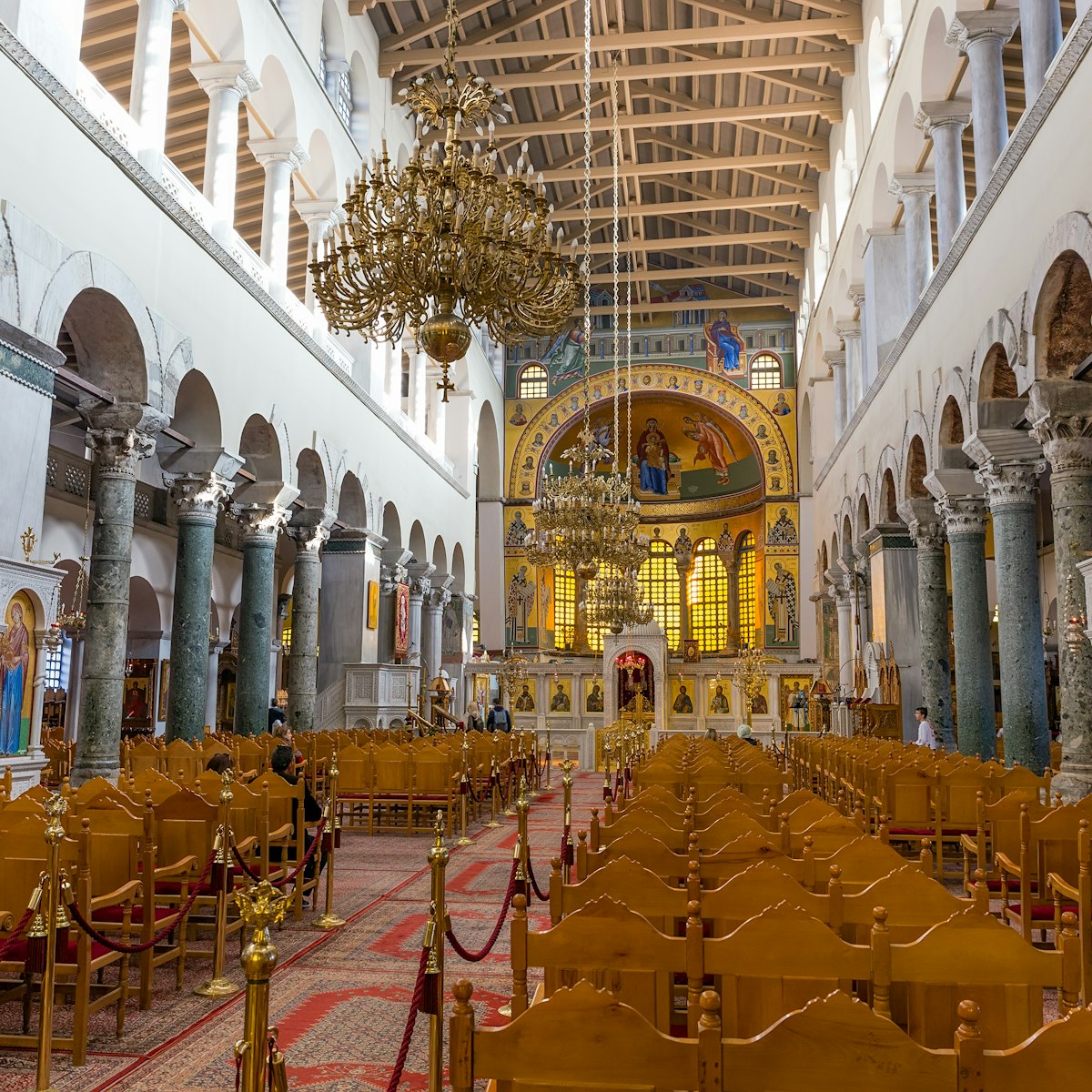
Church of Agios Dimitrios
This enormous 7th-century basilica honours Thessaloniki’s patron saint. A Roman soldier, Dimitrios was killed around AD 306 at this former Roman bath site…

Museum of Byzantine Culture
This fascinating museum has plenty of treasures to please Byzantine buffs, plus simple explanations to introduce this long-lived empire and its culture to…

Church of Osios David
This serene little 5th-century church, once the katholikon (major church) of the Monastery of Saviour Christ of Latomos, is one of the most significant…

White Tower
Thessaloniki's iconic landmark, the 34m-high White Tower has a harrowing history as a prison and place of execution. Built by the Ottomans in the 15th…

New Waterfront
Thessaloniki's New Waterfront is evidence that architecture can improve urban life through intelligent redesign of the space in which it is lived…
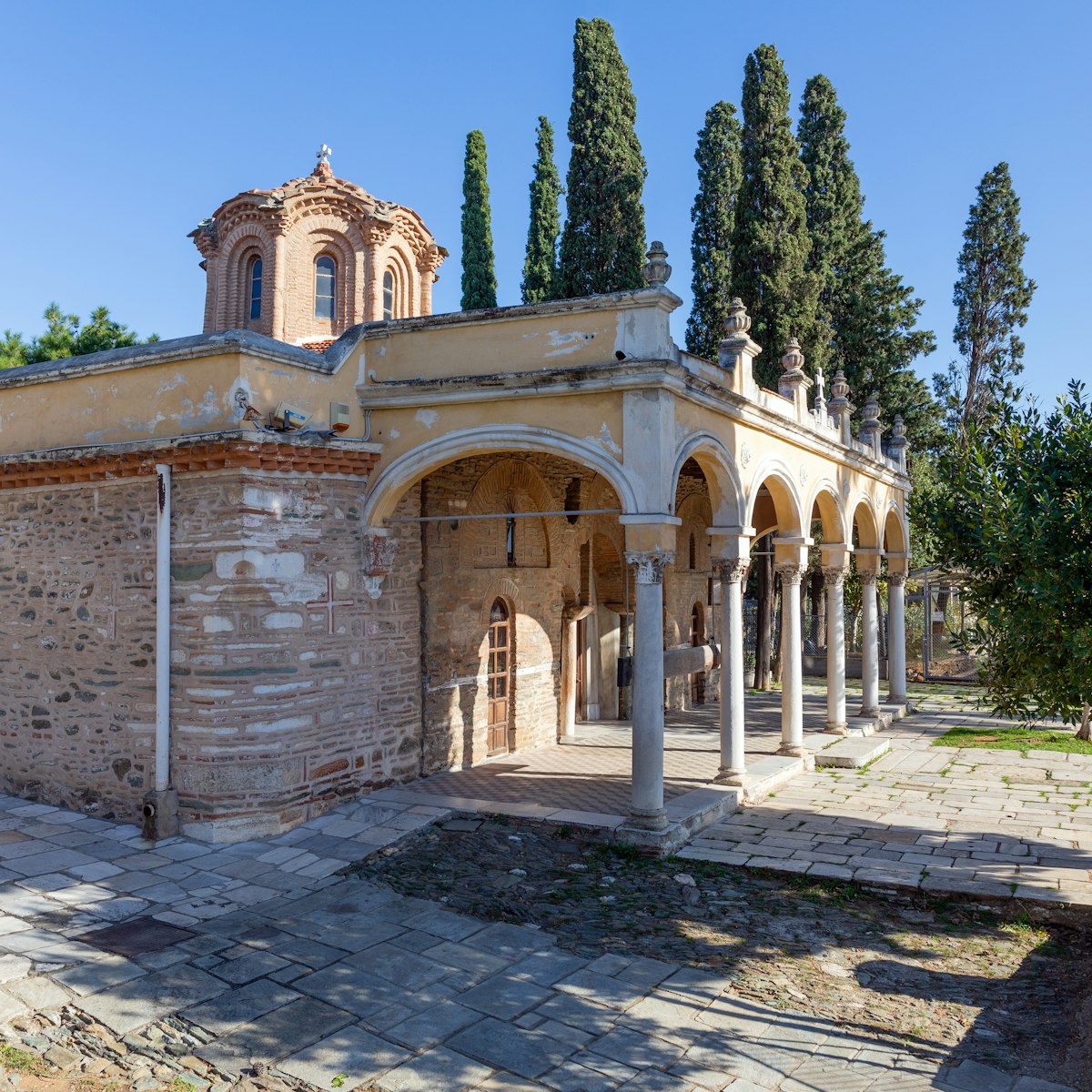
Monastery of Vlatadon
Believed to have been founded around 1351 on the place where Paul preached in Thessaloniki, this secluded monastery blends fascinating history with some…

Thessaloniki Concert Hall
Japanese architect Arata Isozaki created the M2, one of two waterfront buildings that house Thessaloniki's high-brow music scene. It's a strikingly…
Plan with a local
Experience the real Greece
Let a local expert craft your dream trip.
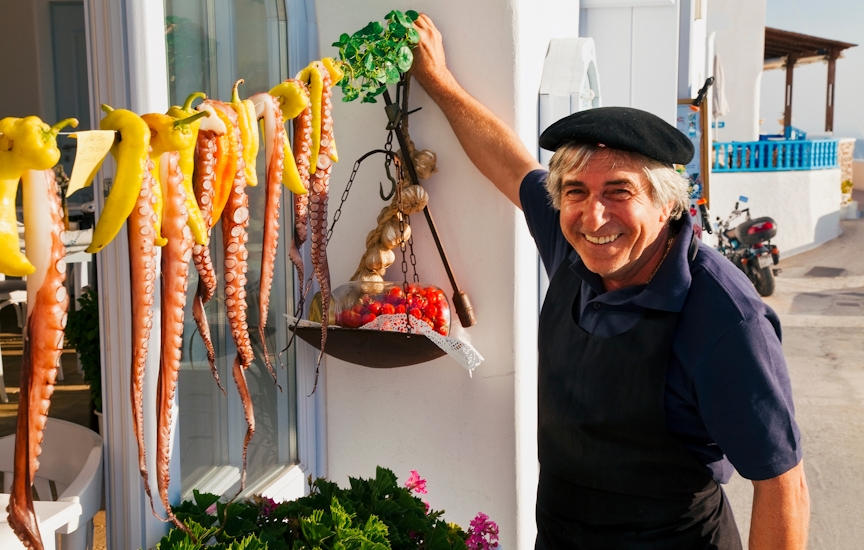
Latest stories from Thessaloniki

Tips & Advice
Sep 5, 2024 • 10 min read
Mix and match our best Greece itineraries to build the one-week, two-week or even three-week trip of your dreams.

Feb 1, 2024 • 7 min read

Oct 17, 2022 • 5 min read

Oct 29, 2019 • 5 min read

Apr 12, 2019 • 5 min read
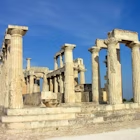
May 12, 2014 • 5 min read
in partnership with getyourguide
Book popular activities in Thessaloniki

IMAGES
VIDEO
COMMENTS
2. Visit the mighty Vikos Gorge. The incredible Vikos Gorge is in the Pindus Mountains of Northern Greece, set deep within the Vikos-Aoös National Park. It is 20km long and in places 490 meters deep and 400 meters wide. The gorge is staggering to behold, breathtaking to experience and utterly mind-blowing to explore.
Best in Travel - 2023. 4 days in Halkidiki, Greece to relax and unwind . Nov 15, 2022 • 13 min read. Often eclipsed by the islands to the south, Northern Greece's Halkidiki peninsula offers blissful beaches that are an idyllic setting to relax and unwind.
Northern Greece: Travel Guide and 7-day Itinerary. Of the places I traveled last year, Northern Greece was the one that surprised me the most. Northern Greece is the upper half of Greece, including places like Thessaloniki, the Halkidiki Peninsula, and Vergina. It's surprisingly still rather untouristed, and much of the region can be ...
Greek-Macedonia, the country's northern region, offers a broader variety of experiences for history buffs, beach lovers, and road-trippers, and still has an ancient history that compares to Athens ...
The charming beach town of Parga sits on the west coast of Northern Greece. It is a summer travel destination that has seen a surge in popularity in recent years - particularly among Greeks. In Parga, pastel-coloured houses and stores line the seafront, and the narrow cobbled streets and passageways are filled with upscale boutique stores and ...
Day by Day breakdown of my Northern Greece Itinerary. Here is a day by day breakdown of the Greek island itinerary. It's pretty involved each day so absolutely feel free to spread it out over more days if you have the time! Day 1: Land in Thessaloniki, explore the cit. Day 2: Full day in Thessaloniki.
1+. Northern Greece is a region brimming with rich cultural heritage, stunning landscapes, and vibrant cities. From the majestic Mount Olympus to the ancient ruins of Thessaloniki, there is no shortage of captivating experiences in this part of the country. Whether you're planning a trip to delve into history, explore the great outdoors, or ...
Northern Greece has unexpected charm, natural beauty, incredible food, a fascinating history, and many great things to do. Here are just a few reasons we think you should put this unpretentious side of Greece on your bucket list. Sue Reddel and Diana Laskaris. 1. You'll See A Different Side Of Greece.
Macedonia. Some 50km southeast of Thessaloniki on the main road is the stalagmite-rich Petralona Cave. Discovered by Petralona village locals in 1959, it became…. 1. 2. 3. Discover the best attractions in Northern Greece including Vergina Royal Tombs Museum, Mt Olympus, and Vikos Gorge.
The main cities in central and northern Greece are: 38.958288 20.753324 1 Preveza. 39.669 20.855 2 Ioannina: Ioannina is built around Lake Pamvotida and is known for its medieval fortress, traditional market, and the island of Nissi, where you can visit monasteries. 40.52 22.204 3 Veria — Famous for its Byzantine-era churches and its well ...
Northern Greece -Something for Everyone. Relax on Greece's most outstanding beaches. Hike or cycle extreme mountain terrains and the world's deepest gorge. Follow in the foot steps of historical figures like Aristotle, Alexander the Great and the Apostle Paul. Whether you are looking for relaxation, an active holiday, a family getaway or to ...
Itinerary for the North of Greece. Northern Greece has endless charm and beauty, from exciting cities to incredible national parks. Here's a week-long itinerary to see the very best, from Thessaloniki through to Preveza. When picturing Greece, many might think of Athens or the islands. But northern Greece has so much to offer, from unusual ...
10. Take a Boat Trip at the Lakeside City, Kastoria. Kastoria isn't as well-known as some of the other cities in Northern Greece, but it has such a wide variety of activities to do and places to visit. It's surrounded by mountains, lakes and forests, all of which are excellent for hiking through.
From Thessaloniki: Day Trip to Mount Olympus - Dion. 8 hours. 377 Reviews. Free cancellation. from 55 €. BOOK NOW. An epic road trip into northern Greece, including the best of Thessaloniki and filled with incredible culture, food, lakes, hiking, mountain villages, thermal baths and even a winery visit.
Halkidiki and its beaches comfortably fill a road trip alone. However, for the needs of your first road trip to the north, we will focus on the second leg. The second leg gathers the biggest portion of spectacular sandy beaches. And we will definitely tell you to dedicate 3-4 days to them. Firstly, dive in the calm lake waters of Porto Koufo ...
Where to go, best places to stay, travel tips and and best holiday destinations - inspiration from the experts at Lonely Planet.
Halkidiki is the perfect ending for your one-week itinerary in northern Greece! The Chalkidiki peninsula is a true gem in the Macedonia area, it resembles a hand with 3 fingers (or "legs") and is located around 1 hour south of Thessaloniki by car (to get to the Capital of Chalkidiki Polygyros). If you want to discover its marvelous beaches ...
2. Thessaloniki. Even though Athens is the governmental capital of Greece, Thessaloniki, the second largest city, is considered to be the cultural capital. It has 15 UNESCO sites, the most in any one town internationally, and is also a college town, so it offers a great selection of music, the arts, and coffee shops.
By sea. Ferries to Ferries to Greece from Italy nearly always run overnight. The main port for northern Greece is Igoumenítsa, which can be reached from Venice (25-29hrs, from €440 return with a car), Ancona (16hrs, from €430 return), Bari (10hrs, from €230 return) and Brindisi (7.5-10hrs, from €216 return).
All About Greece from Athens to Sofia thru Delphi-Meteora-Thessaloniki-Drama & Kavala. 3.0 1 Review by TourRadar travelers. Explorer. Visit Kavala's old Castle and Imaret. Discover Delphi and the Temple of Apollo. Tour Meteora's cliff-top monasteries. Duration.
Book Now! per person. 865 €. Join this unique five day tour where you will be able to explore Northern Greece and its rich history, from the ancient city-states, to the Byzantine Empire and up until modern times. Starting from Athens, the capital of Greece, you will take the scenic route through the plains of Beotia until you reach Delphi ...
Thessaloniki. Greece, Europe. Thessaloniki is easy to fall in love with - it has beauty, chaos, history and culture, a remarkable cuisine and wonderful, vast sea views. This is Greece's second city, which, like the rest of the country, has suffered the hit of the economic crisis, but the streets remain full of life and vibrancy.
Northern Greece, Albania & North Macedonia: Ancient Lands of Alexander the Great. O.A.T. Adventure by Land. DAYS 18. FROM $5,095. PER DAY $284. Traveler Reviews (228) Select to Compare. Spend 13 days in Greece on.